We’re celebrating Indigenous stories, art and businesses.
 This Native American Heritage Month, we’re launching new ways across our products for you to connect with the creativity, culture and stories of Indigenous peoples.It st…
This Native American Heritage Month, we’re launching new ways across our products for you to connect with the creativity, culture and stories of Indigenous peoples.It st…  This Native American Heritage Month, we’re launching new ways across our products for you to connect with the creativity, culture and stories of Indigenous peoples.It st…
This Native American Heritage Month, we’re launching new ways across our products for you to connect with the creativity, culture and stories of Indigenous peoples.It st… 
Generative AI has made its way onto the professional soccer field.
Laura Harvey, head coach of Seattle Reign FC, said this week that ChatGPT helped her come up with a new defensive strategy.
Speaking on the Soccerish Podcast, Harvey said she was curious if ChatGPT could answer questions about soccer. So she started prompting OpenAI’s chatbot with questions about her team.
At first, she asked broad questions like, “what is Seattle Reign’s identity?” She didn’t really love the answer.
But then she asked: “What formation should you play to beat NWSL teams?”
It then listed every team in the women’s soccer professional league, with a suggested formation. And for two of the teams, it suggested “back-five,” a defensive setup using five players in the backline.
Harvey said she wasn’t super familiar with the strategy and had not used it as a coach.
She took the AI suggestion to her staff and did a deep dive on the potential change.
“We liked it,” Harvey said. “And it worked — we won the game.”
Harvey, a three-time NWSL Coach of the Year, didn’t reveal the opponent but said they were “really good.” Now the team uses the formation as an option during matches. The Reign have improved since last season and are ranked fourth in the NWSL heading into the playoffs.
It’s a fascinating example of using AI as a tactical consultant, combining human expertise and intuition with machine suggestions.
“It didn’t tell you how to play it, what to do in it or any of that stuff,” Harvey said on the podcast. “But it was like, ‘This is what we would say to do.’ And I was like, ‘Hmm, interesting.’ And that was what spurred me to look into it. So then I really looked into it.”
Across industries, professionals are treating tools such as ChatGPT as sounding boards — running ideas by them, exploring scenarios, or pressure-testing strategies before making decisions.
OpenAI’s own research this year found that people increasingly rely on ChatGPT “as an advisor rather than only for task completion.”
“ChatGPT likely improves worker output by providing decision support, which is especially important in knowledge-intensive jobs where productivity is increasing in the quality of decision-making,” according to the research.



















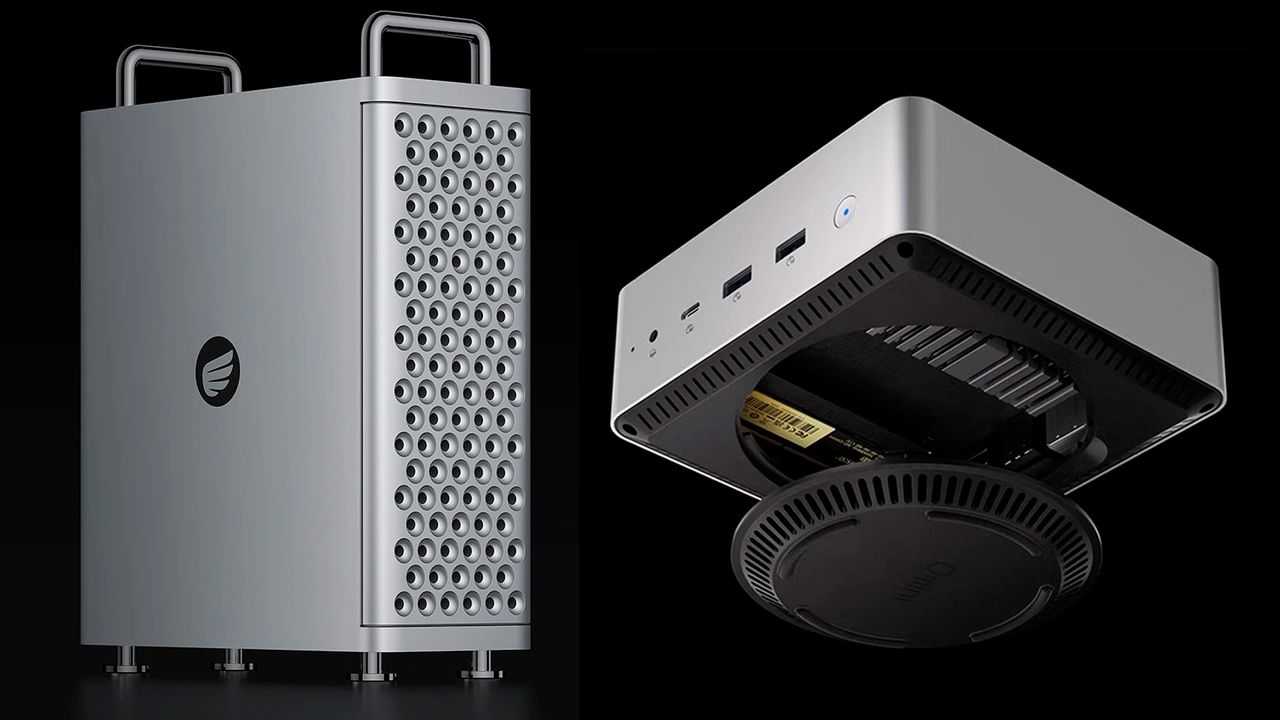

The post Sublime Series C: $150M to fight email threats with AI agents appeared first on StartupHub.ai.
Sublime is betting that the only way to fight AI-powered attackers is with autonomous AI agents that can think and adapt on their own.
The post Sublime Series C: $150M to fight email threats with AI agents appeared first on StartupHub.ai.
The post Technology in NYC Mayor Elections: AI and Spyware Battleground appeared first on StartupHub.ai.
The 2025 NYC mayoral election is a proving ground for the battle between technology as a tool for democratic empowerment versus a weapon of deception.
The post Technology in NYC Mayor Elections: AI and Spyware Battleground appeared first on StartupHub.ai.










This is the lowest price on record for what we consider the best ultraportable laptop. The base model 13" MacBook Air features Apple's M4 chip, 16 GB of RAM, a 256 GB SSD, and AI hardware (software is not there yet).
Some consider Elon Musk a visionary, others a skilled grifter. Regardless of his supposed merits or de-merits, one has to concede that Musk is one of the most influential voices in the world right now, and when he enunciates his vision about the future of smartphones, everyone should pay attention. Elon Musk's vision resembles Plato's cave: "You’ll have AI on the server side communicating with AI on your device - formerly known as a phone - and generating real-time video of anything you could possibly want" Elon Musk was a participant in a recent Joe Rogan podcast, where he discussed […]
Read full article at https://wccftech.com/elon-musks-vision-of-the-future-of-smartphones-resembles-platos-cave/


This week on the GeekWire Podcast: Why is Amazon laying off 14,000 people in the middle of an AI boom — and is it really a boom at all? We dig into the contradiction at the heart of Seattle’s tech scene, discussing Amazon CEO Andy Jassy’s “world’s largest startup” rationale and what it says about the company’s culture and strategy. And we debate whether AI progress represents true transformation or the familiar signs of a tech bubble in the making.
Then we examine the vision of Cascadia high-speed rail — the ambitious plan to connect Portland, Seattle, and Vancouver, B.C., by bullet train. Is it the regional infrastructure needed to power the Pacific Northwest’s next chapter, or an expensive dream looking for a purpose?
With GeekWire co-founders John Cook and Todd Bishop
Amazon layoffs
Amazon earnings
Microsoft Azure, earnings and OpenAI
Seattle-Portland-Vancouver
Subscribe to GeekWire in Apple Podcasts, Spotify, or wherever you listen.

Inventprise, a Redmond, Wash.–based biotechnology company developing vaccines for infectious diseases, is laying off 76 workers, according to a new filing from the Washington Employment Security Department.
GeekWire has reached out to the company for additional details.
The layoffs impact employees across the company’s Redmond and Woodinville facilities, as well as some remote workers. The first separations are effective Dec. 31.
Job titles affected span a wide range of roles, including manufacturing, quality control, R&D, and technical staff, according to the filing.
The company has nearly 200 employees, according to LinkedIn.
Founded in 2012, Inventprise focuses on addressing global health challenges in low- and middle-income countries. Its pipeline includes lead candidate IVT-PCV-25, a pneumococcal conjugate vaccine candidate that is in Phase 2 trials, according to the company’s website.
Inventprise was founded by Dr. Subhash Kapre, who previously worked on vaccine initiatives with the Gates Foundation. The Seattle-based foundation has provided more than $13 million to Inventprise.
Kapre is currently chairman of Inventprise, which is led by CEO Yves Leurquin, a former Takeda exec who joined the company in 2021.

Neil Kumar has been known to leave a water bottle or a jacket at school or the gym, marking himself among the millions of Americans whose forgotten belongings end up in a lost-and-found box or a landfill every year.
Now Kumar is the founder of FindIt, an app designed to provide an AI-powered solution to recovering what’s been lost.
The 15-year-old freshman at Bellevue (Wash.) High School was recently selected as one of four innovators to participate in the city’s Civic Innovation Challenge, an initiative seeking technology solutions to municipal challenges.
FindIt will be used on a pilot basis at Bellevue College to test the app’s usability and effectiveness among students, staff and visitors and evaluate its potential for broader deployment.
“I’ve always been interested in how technology can solve our real world problems,” Kumar told GeekWire.
According to statistics cited by the website Lostings, over 400 million items are lost and found every year in the U.S. The estimated value of lost items is over $5 billion per year.
Kumar wants his creation to help address the economic aspect of all of that loss, and also the sustainability concern. His tagline is “Buy less, lose even less.”

Available on iOS, FindIt works when someone in charge of a lost-and-found system, at a school for instance, takes a photo of a recovered item and uploads that photo. The image is processed by artificial intelligence, which generates a description, such as “blue water bottle with red sticker and white top.”
A student looking for a lost item types a description into FindIt, and the app’s AI scans uploaded listings to find the best matches.
Kumar said the easy process of searching via a mobile app eclipses traditional systems that require a person to physically return to a place where they may have left something.
He started working on the project a year ago and FindIt was among 23 competitive applicants reviewed and judged in the civic challenge. The three other companies and ideas that were accepted are:
FindIt was also selected for the Thermo Fisher Junior Innovators Challenge, and Kumar said he was recognized in the top 300 junior innovators in the U.S. this year.
The app is currently deployed at Odle Middle School in Bellevue. Kumar envisions the tool someday being available to more schools as well as airports, workplaces, public transit agencies and elsewhere.
Kumar, who has worked with Sustainability Ambassadors, a program that helps develop student leadership skills, thinks FindIt is just the start, and he’d like to be an entrepreneur in the future.
“I like to solve problems using technology, and help people using those solutions,” he said.



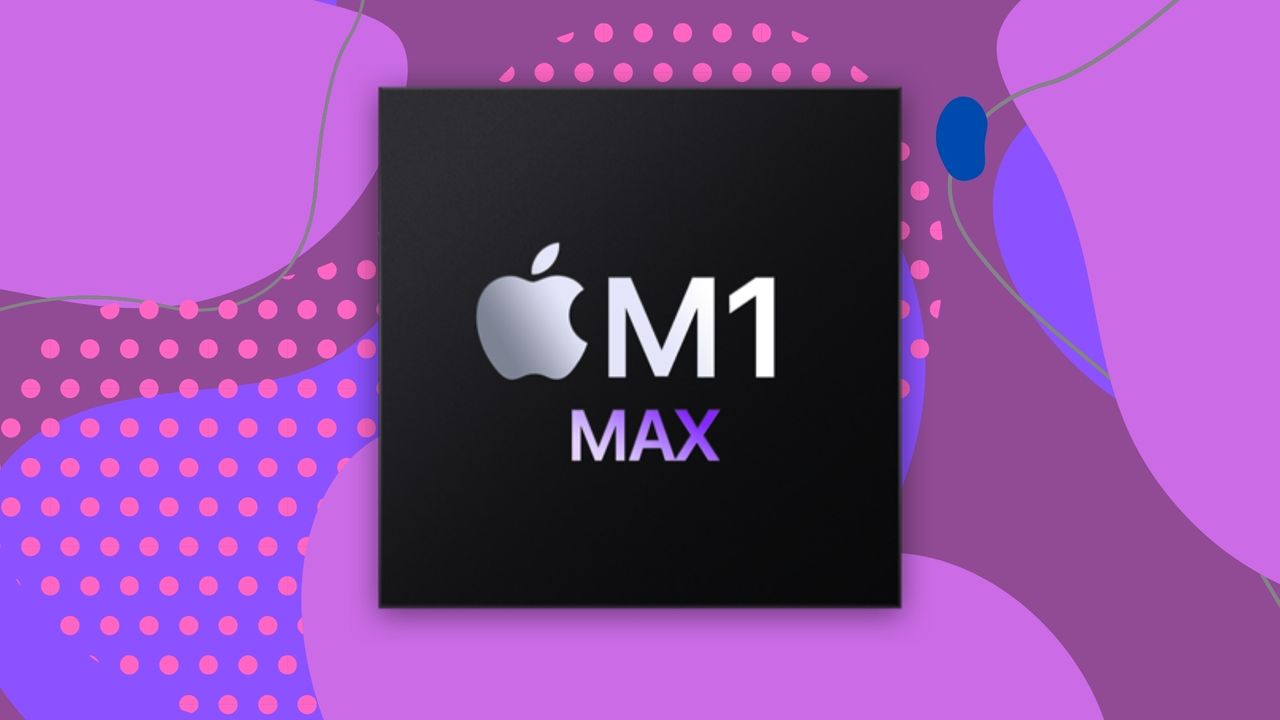









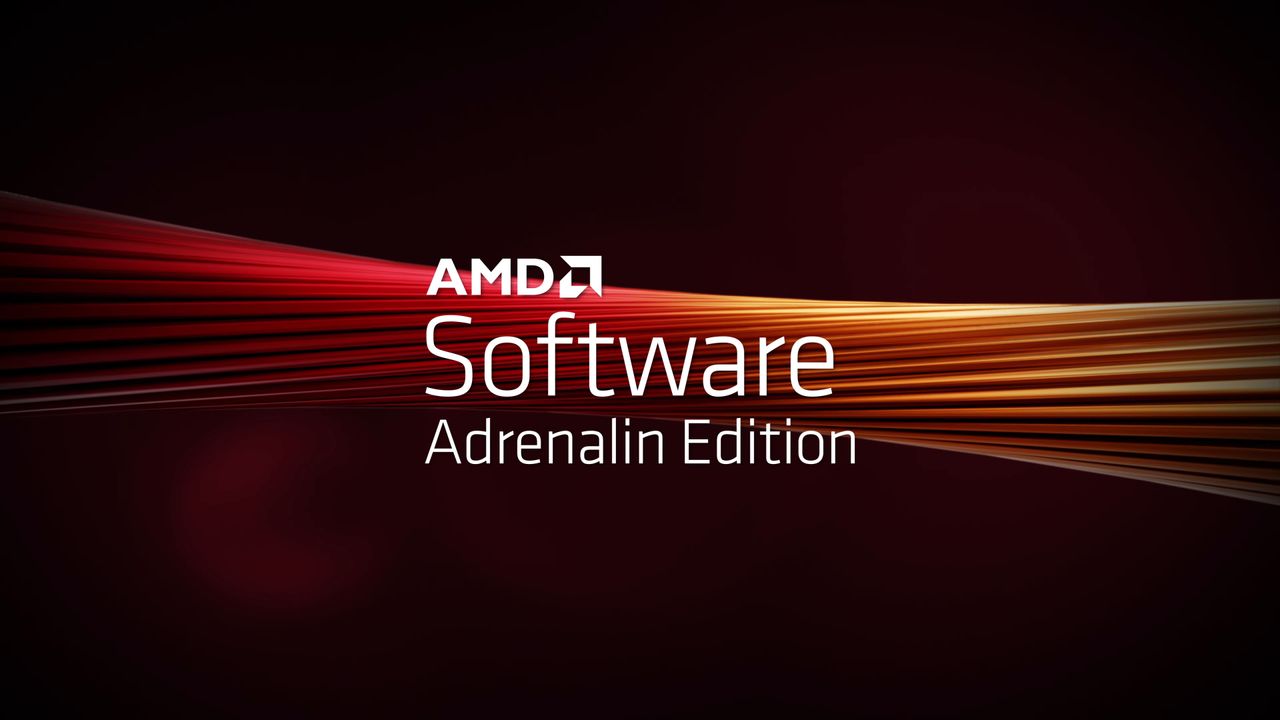

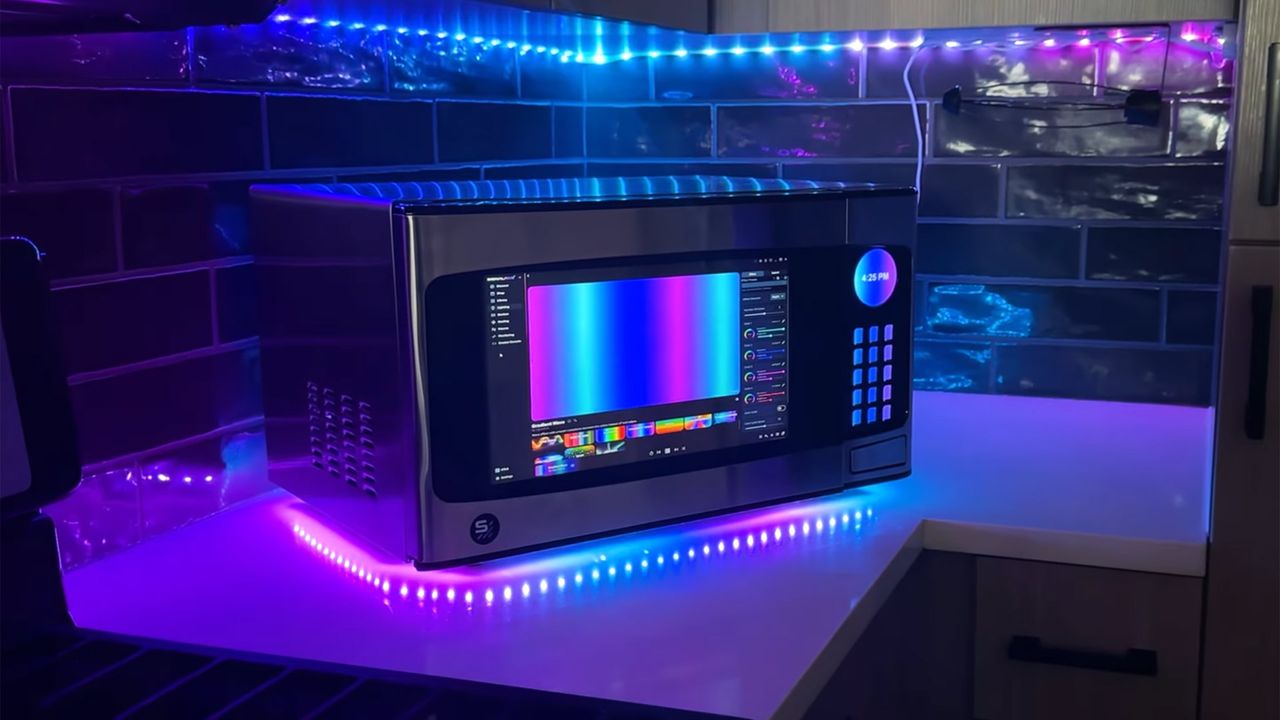



The post Kimi Linear promises to beat full attention with less memory appeared first on StartupHub.ai.
Kimi Linear's hybrid architecture claims to outperform full attention, but its real-world impact hinges on the open-source community's ability to adopt its complex design.
The post Kimi Linear promises to beat full attention with less memory appeared first on StartupHub.ai.
The post Python SDK and AI Agents Redefine Data Pipeline Automation appeared first on StartupHub.ai.
The future of data integration is not merely about human engineers writing code; it encompasses AI systems and autonomous agents actively participating in the data workflow. This profound shift was meticulously detailed by John Wen, Product Manager at IBM, in a recent presentation where he illuminated the transformative potential of Python SDKs in conjunction with […]
The post Python SDK and AI Agents Redefine Data Pipeline Automation appeared first on StartupHub.ai.
 Microsoft and its retail partners are celebrating Black Friday early with deals on wireless Xbox controllers, a couple of which are now on sale for the lowest price we've seen. We're talking about a 38% markdown for what we consider to be one of the best wireless controllers for both PC and console gaming. Time is of the essence, though, as
Microsoft and its retail partners are celebrating Black Friday early with deals on wireless Xbox controllers, a couple of which are now on sale for the lowest price we've seen. We're talking about a 38% markdown for what we consider to be one of the best wireless controllers for both PC and console gaming. Time is of the essence, though, as Well, the famous YouTuber PewDiePie has been found 'tinkering' with AI in a rather unique fashion, creating his own AI service that uses Chinese open-source models with NVIDIA's GPUs. PewDiePie Actually Managed to Let AI Models Talk To Each Other, And Interestingly, They Colluded Against Him It seems like Felix has a knack for running AI models locally on machines, and we are surprised to see his expertise around this particular venture, to say the least. In a new video, PewDiePie dives into how he leverages PCIe burification to essentially create a 10-GPU 'mini-datacenter', which he later utilized for a […]
Read full article at https://wccftech.com/pewdiepie-dives-into-an-ai-side-quest-revealing-his-self-made-chatos/

Grand Theft Auto (GTA) developer Rockstar Games has been mostly exempt from the rounds of layoffs that have rocked the industry throughout the last three years or so. This week, they have fired between 30 and 40 employees across offices in the United Kingdom and Canada, but not due to financial problems (which they do not have). According to the Independent Workers' Union of Great Britain (IWGB), this has been an act of 'union busting', as all the developers fired were attempting to unionize. Alex Marshall, president of the IWGB, said in a statement: Rockstar has just carried out the […]
Read full article at https://wccftech.com/gta-developer-accused-union-busting-after-firing-dozens-of-employees/

NVIDIA's entry into China is stalled by Beijing's reluctance to adopt American AI technology, as the nation appears to prefer relying on its domestic alternatives. NVIDIA's B30A 'Blackwell' Chip Claimed to Feature Half the Actual Architectural Performance, Leading to Avoidance of China Well, the NVIDIA-China saga isn't ending anytime soon. While there were recent hopes for a breakthrough regarding the Blackwell chip, it appears that the deadlock originates from Beijing, rather than the Trump administration. According to CNBC Correspondent Kristina Partsinevelos, it is reported that President Trump has put the matter of NVIDIA and China between the two parties alone, […]
Read full article at https://wccftech.com/president-trump-calls-himself-a-referee-in-nvidia-china-hostilities/


AstrolGuru is AI Astrology bot, fine tuned with the best vedic astrology, to answer any personalized question according to your own horoscope. AstrolGuru provides a very in depth analysis of every part of your life, analyzing and interpreting your planetary positions, and alignment to give you the most personal, and accurate horoscope ever.
Self reflect, and improve with AstrolGuru's Free personality analysis, or go further with a full or basic astrological reading. Ask AstrolGuru any or your personal questions about our horoscope, and AstrolGuru will analyze and answer with a detail explanation and no inconsistency, only practical remedies for self improvement.








Prototype with your real product
Opinionated, zero-config code linter and formatter
Open source, cookieless Google Analytics alternative
Made to measure. Built for everything else.
Stay on top of your pull requests from your Mac menu bar
Keep Screenshots Always on Top
Fonts & Themes Keyboard

Aura is your personal AI stylist, designed to take the stress out of choosing what to wear. Whether you're getting ready for a wedding, a job interview, or just a night out, Aura gives you outfit suggestions that match your body shape, skin tone, and style preferences—so you always feel confident and look your best. No more second-guessing or outfit changes that leave you running late.
It works by asking a few simple questions about you and the occasion, then instantly recommends clothing combinations, color palettes, and styling tips tailored to your unique look. Aura isn’t just another fashion app—it’s built to make fashion feel personal, inclusive, and effortless.


The post Weekly Wrap: 2 Tickers — Week Ending 2025-11-01 appeared first on StartupHub.ai.
Weekly Overview: Performance across covered names with key catalysts and updated views. Performance Heatmap Ticker Start End % Change Rating/Target Thesis AAPL 268.81 270.37 0.58% Buy / 250.00 iPhone cycle accelerating MSFT 531.52 517.81 -2.58% Hold / 400.00 AI monetization pacing steady Thematic Highlights Rotation and catalyst commentary can be added here. Top News AAPL […]
The post Weekly Wrap: 2 Tickers — Week Ending 2025-11-01 appeared first on StartupHub.ai.
Production & Availability of the NVIDIA GeForce RTX 5090 & the rest of the RTX 50 series remain normal amid false reports. NVIDIA GeForce RTX 5090 GPUs Are Not Being Discontinued or EOL'd, Entire RTX 50 Lineup Available The NVIDIA GeForce RTX 5090 is the fastest gaming graphics card, period. It's got over 21K cores, 32 GB of blistering-fast GDDR7 memory, and features the latest Blackwell architecture with DLSS MFG support and a range of AI technologies. The card has also been a hot item for the AI segment, as certain workstation builders prefer the 5090 over the RTX PRO […]
Read full article at https://wccftech.com/nvidia-geforce-rtx-5090-gpu-production-remains-normal-full-rtx-50-lineup-available/


The post Vercel’s Pragmatic AI Engineering: Building the Next Web with Workflows and Battle-Tested Agents appeared first on StartupHub.ai.
“Agents are very exciting, and you can actually build them,” affirmed Malte Ubl, CTO of Vercel, encapsulating the company’s practical philosophy toward the burgeoning AI engineering movement. This statement, delivered during a recent interview with Swyx, editor of Latent Space, following Vercel’s Ship AI event, underscored Vercel’s commitment to delivering tangible, production-ready AI infrastructure rather […]
The post Vercel’s Pragmatic AI Engineering: Building the Next Web with Workflows and Battle-Tested Agents appeared first on StartupHub.ai.
The post Vercel’s Pragmatic Blueprint for the AI Engineering Era appeared first on StartupHub.ai.
“Agents are very exciting, and you can actually build them,” declared Malte Ubl, CTO of Vercel, encapsulating the company’s ethos in the rapidly evolving AI engineering landscape. This statement, delivered during his conversation with Swyx, Editor of Latent Space, following Vercel’s Ship AI 2025 event, underscores a foundational shift from abstract hype to tangible, deployable […]
The post Vercel’s Pragmatic Blueprint for the AI Engineering Era appeared first on StartupHub.ai.
Every SOC leader knows the feeling: drowning in alerts, blind to the real threat, stuck playing defense in a war waged at the speed of AI.
Now CrowdStrike and NVIDIA are flipping the script. Armed with autonomous agents powered by Charlotte AI and NVIDIA Nemotron models, security teams aren't just reacting; they're striking back at attackers before their next move. Welcome to cybersecurity's new arms race. Combining open source's many strengths with agentic AI will shift the balance of power against adversarial AI.
CrowdStrike and NVIDIA's agentic ecosystem combines Charlotte AI AgentWorks, NVIDIA Nemotron open models, NVIDIA NeMo Data Designer synthetic data, NVIDIA Nemo Agent Toolkit, and NVIDIA NIM microservices.
"This collaboration redefines security operations by enabling analysts to build and deploy specialized AI agents at scale, leveraging trusted, enterprise-grade security with Nemotron models," writes Bryan Catanzaro, vice president, Applied Deep Learning Research at NVIDIA.
The partnership is designed to enable autonomous agents to learn quickly, reducing risks, threats, and false positives. Achieving that takes a heavy load off SOC leaders and their teams, who fight data fatigue nearly every day due to inaccurate data.
The announcement at GTC Washington, D.C., signals the arrival of machine-speed defense that can finally match machine-speed attacks.
The partnership is differentiated by how the AI agents are designed to continually aggregate telemetry data, including insights from CrowdStrike Falcon Complete Managed Detection and Response analysts.
"What we're able to do is take the intelligence, take the data, take the experience of our Falcon Complete analysts, and turn these experts into datasets. Turn the datasets into AI models, and then be able to create agents based on, really, the whole composition and experience that we've built up within the company so that our customers can benefit at scale from these agents always," said Daniel Bernard, CrowdStrike's Chief Business Officer, during a recent briefing.
Capitalizing on the strengths of the NVIDIA Nemotron open models, organizations will be able to have their autonomous agents continually learn by training on the datasets from Falcon Complete, the world's largest MDR service handling millions of triage decisions monthly.
CrowdStrike has previous experience in AI detection triage to the point of launching a service that scales this capability across its customer base. Charlotte AI Detection Triage, designed to integrate into existing security workflows and continuously adapt to evolving threats, automates alert assessment with over 98% accuracy and cuts manual triage by more than 40 hours per week.
Elia Zaitsev, CrowdStrike's chief technology officer, in explaining how Charlotte AI Detection Triage is able to deliver that level of performance, told VentureBeat: "We wouldn't have achieved this without the support of our Falcon Complete team. They perform triage within their workflow, manually addressing millions of detections. The high-quality, human-annotated dataset they provide is what enabled us to reach an accuracy of over 98%."
Lessons learned with Charlotte AI Detection Triage directly apply to the NVIDIA partnership, further increasing the value it has the potential to deliver to SOCs who need help dealing with the deluge of alerts.
NVIDIA's Nemotron open models address what many security leaders identify as the most critical barrier to AI adoption in regulated environments, which is the lack of clarity regarding how the model works, what its weights are, and how secure it is.
Justin Boitano, Vice President, Enterprise and Edge Computing at NVIDIA, speaking for NVIDIA during a recent press briefing, explained: "Open models are where people start in trying to build their own specialized domain knowledge. You want to own the IP ultimately. Not everybody wants to export their data, and then sort of import or pay for the intelligence that they consume. A lot of sovereign countries, many enterprises in regulated industries want to maintain all that data privacy and security."
John Morello, CTO and co-founder of Gutsy (now Minimus), told VentureBeat that "the open-source nature of Google's BERT open-source language model allows Gutsy to customize and train their model for specific security use cases while maintaining privacy and efficiency." Morello emphasized that practitioners cite "more transparency and better assurances of data privacy, along with great availability of expertise and more integration options across their architectures, as key reasons for going with open source."
Cisco's DJ Sampath, senior vice president of Cisco's AI software and platform group, articulated the industry-wide imperative for open-source security models during a recent interview with VentureBeat: "The reality is that attackers have access to open-source models too. The goal is to empower as many defenders as possible with robust models to strengthen security."
Sampath explained that when Cisco released Foundation-Sec-8B, their open-source security model, at RSAC 2025, it was driven by a sense of responsibility: "Funding for open-source projects has stalled, and there is a growing need for sustainable funding sources within the community. It is a corporate responsibility to provide these models while enabling communities to engage with AI from a defensive standpoint."
The commitment to transparency extends to the most sensitive aspects of AI development. When concerns emerged about DeepSeek R1's training data and potential compromise, NVIDIA responded decisively.
As Boitano explained to VentureBeat, "Government agencies were super concerned. They wanted the reasoning capabilities of DeepSeek, but they were a little concerned with, obviously, what might be trained into the DeepSeek model, which is what actually inspired us to completely open source everything in Nemotron models, including reasoning datasets."
For practitioners managing open-source security at scale, this transparency is core to their companies. Itamar Sher, CEO of Seal Security, emphasized to VentureBeat that "open-source models offer transparency," though he noted that "managing their cycles and compliance remains a significant concern." Sher's company uses generative AI to automate vulnerability remediation in open-source software, and as a recognized CVE Naming Authority (CNA), Seal can identify, document, and assign vulnerabilities, enhancing security across the ecosystem.
"Bringing the intelligence closer to where data is and decisions are made is just going to be a big advancement for security operations teams around the industry," Boitano emphasized. This edge deployment capability is especially critical for government agencies with fragmented and often legacy IT environments.
VentureBeat asked Boitano how the initial discussions went with government agencies briefed on the partnership and its design goals before work began. "The feeling across agencies that we've talked to is they always feel like, unfortunately, they're behind the curve on these technology adoption," Boitano explained. "The response was, anything you guys can do to help us secure the endpoints. It was a tedious and long process to get open models onto these, you know, higher side networks."
NVIDIA and CrowdStrike have done the foundational work, including STIG hardening, FIPS encryption, air-gap compatibility, and removing the barriers that delayed open-model adoption on higher-side networks. The NVIDIA AI Factory for Government reference design provides comprehensive guidance for deploying AI agents in federal and high-assurance organizations while meeting the strictest security requirements.
As Boitano explained, the urgency is existential: "Having AI defense that's running in your estate that can search for and detect these anomalies, and then alert and respond much faster, is just the natural consequence. It's the only way to protect against the speed of AI at this point."




The post Salesforce AI Security: Countering Smart Threats in the Enterprise appeared first on StartupHub.ai.
As AI amplifies cyber threats, robust Salesforce AI security demands proactive admin strategies, including MFA, least privilege, and leveraging AI-powered defense tools.
The post Salesforce AI Security: Countering Smart Threats in the Enterprise appeared first on StartupHub.ai.
The post Wall Street’s AI Reckoning: Monetization Separates Hyperscaler Winners from Losers appeared first on StartupHub.ai.
“Wall Street is starting to pick its AI winners,” declared MacKenzie Sigalos of CNBC Business News, setting the stage for a stark commentary on the latest earnings reports from the tech giants. In a segment on CNBC’s “Closing Bell Overtime,” Sigalos, speaking with anchor John, dissected why some hyperscalers are being rewarded for their AI […]
The post Wall Street’s AI Reckoning: Monetization Separates Hyperscaler Winners from Losers appeared first on StartupHub.ai.
The post AI Capex Cycle Shifts to Scrutiny, Not Stagnation appeared first on StartupHub.ai.
The current wave of Artificial Intelligence investment, while seemingly boundless, is entering a new phase of scrutiny, according to Gene Munster, Managing Partner at Deepwater Asset Management. His recent analysis, presented on CNBC’s ‘Fast Money,’ underscored that while the AI capital expenditure cycle still has “a few years left,” investors are increasingly disinclined to “write […]
The post AI Capex Cycle Shifts to Scrutiny, Not Stagnation appeared first on StartupHub.ai.
The post AI Spend Mania Signals Caution for Tech Investors appeared first on StartupHub.ai.
The current surge in AI spending, while indicative of technological advancement, is increasingly resembling a “speculative mania” driven by abundant central bank liquidity rather than organic demand from the real economy. This provocative insight comes from Bob Elliott, CEO and CIO of Unlimited, who recently joined CNBC’s “Closing Bell Overtime” to discuss the roaring tech […]
The post AI Spend Mania Signals Caution for Tech Investors appeared first on StartupHub.ai.
The post Wikipedia Founder Jimmy Wales on AI’s Factual Blind Spot appeared first on StartupHub.ai.
The proliferation of artificial intelligence, particularly large language models, introduces a profound challenge to the very notion of verifiable truth, a concern eloquently articulated by Wikipedia founder Jimmy Wales. He contends that current AI models frequently “hallucinate, don’t cite their work and act as if that’s not a problem,” a fundamental flaw that undermines their […]
The post Wikipedia Founder Jimmy Wales on AI’s Factual Blind Spot appeared first on StartupHub.ai.
The post Asia’s Data Center Boom: More Than Just Land and Power appeared first on StartupHub.ai.
The insatiable demand for Artificial Intelligence is reshaping the global technological landscape, and Asia’s data centers find themselves at the epicenter of this transformative shift. At the Bloomberg Business Summit at ASEAN in Kuala Lumpur, Bloomberg’s Ram Anand moderated a panel featuring Prashant Murthy, Managing Director, Capital & Strategy, AirTrunk; Rebecca Ng, Deputy Group Chief […]
The post Asia’s Data Center Boom: More Than Just Land and Power appeared first on StartupHub.ai.

In the midst of the Seattle Mariners’ win streak back in September, sports anchor Aaron Levine was going on a little run of his own, as a contestant on “Jeopardy!”
The episodes aired this week, and Levine, sports director for FOX 13 in Seattle, managed three wins in a row before bowing out in Thursday night’s episode of the popular game show.
Levine taped all four of his games over about four hours, with 15-minute breaks between them to switch outfits in the “champion’s changing room.”
“It’s a little jarring to win a game and then go back to change, and all of a sudden you’re pretending it’s a brand new day,” Levine told GeekWire on Friday. “No question there’s a mental fatigue aspect to it. I have a brand-new respect for anybody who can win multiple games in a day, let alone survive an entire day and then move on to the next tape day.”
A self-professed trivia geek, Levine majored in history at Stanford University and considers that category his strongest. It’s why he’s kicking himself for not getting Thursday’s Final Jeopardy question correct (about Thomas Jefferson’s Monticello) in the category “historic homes.”

Elsewhere in the game Thursday, Levine found what appeared to be a couple of softball Seattle clues, especially one about the Seahawks that he got right. But he failed to buzz in on a clue about billionaires and their kids’ inheritance — who is Bill Gates?!
Earlier in the week he did get a Daily Double question correct about Stanford, and he was especially pleased to be able to shout out his alma mater with a “Go Cardinal” fist pump.
And along the way this week, he made a fun nod to a classic “Key & Peele” sketch with the way he etched his name — “AA ron” — on his podium screen.
Growing up in Los Angeles, Levine watched “Jeopardy!” every night with his family and always wanted to be on the show’s teen tournament. He scored an appearance on “The Price is Right” at age 18, but when he went off to college, trivia wasn’t a part of his life.
Levine landed on TV again in 2004 when he was the national runner-up on the ESPN reality show “Dream Job,” which was a search for a new “SportsCenter” anchor.
It wasn’t until he was living in Gig Harbor, Wash., that he started going to trivia nights, winning free food at restaurants, and watching “Jeopardy!” again. And he started making his note cards in 2019.
The numerous boxes of index cards look like something out of a library’s filing system, and they serve as flash cards for Levine to test his knowledge on a range of subjects — literature, music, art, geography, religion, etc.

In the decades that “Jeopardy!” has been on the air, plenty of Seattleites have made appearances. Good Thinking Games CEO David Erb is a notable past champion, and Amazon employee Stephanie Hubley got a shout-out from Jeff Bezos for her appearance back in 2016.
Levine enjoyed getting to meet host Ken Jennings, who lives in Seattle, during limited time in which Jennings interacts with contestants during commercial breaks.
“You don’t get a lot of time to talk to him, but I did feel a sort of familiarity and kinship with him, knowing that not only is he from Seattle, but he’s a big Seattle sports fan, and that he’s a huge Mariners fan,” Levine said. “It was also cool because he was familiar with my work being on TV here in Seattle.”
Levine’s three wins are a long way from what Jennings achieved (winning 74 games), but his goal going into the experience was to win just one game, and he came away with a “lifetime of memories.”
“To be able to walk away from that stage and say, ‘Hey, I’m a ‘Jeopardy!’ champion’ and to have done that three times and qualify for a postseason tournament is more than I could have ever dreamed of,” Levine said. “I hope I didn’t embarrass myself too much on the stage.”
There’s nothing embarrassing about the money he walked away with — nearly $50,000 — and his plans for what he’ll do with it.
“It’s going into a college fund for my son,” Levine said of his 8-year-old. “It’s so relieving to me to just have a sum of money that can hopefully grow for the next 10 years.”

Alaska Airlines said Friday it has hired global consulting firm Accenture to conduct a full audit of its technology systems, part of a broader push to improve reliability after two major IT outages in recent months. The review will include a top-to-bottom examination of the airline’s systems, standards, and processes.
The move follows a major outage last week that grounded flights for eight hours. The Seattle-based company said more than 49,000 passengers had their travel plans disrupted and more than 400 flights were canceled across Alaska Airlines and its subsidiary Horizon Air. The outage was severe enough to postpone the company’s scheduled quarterly earnings call.
Alaska said the outage was due to a failure at its primary data center and was not related to a cybersecurity incident.
In a new regulatory filing, the airline said it does not plan on rescheduling its third quarter call and will provide updated guidance for its fourth quarter in early December, “once the full financial impact of the recent IT disruptions is understood.”
A separate July outage, caused by a failure of a “critical piece of hardware” at Alaska’s data centers, was expected to reduce earnings by about $0.10 per share, or roughly $12 million.
Alaska said it has boosted IT infrastructure spending by nearly 80% since 2019, investing in redundant data centers and migrating more guest-facing systems to the cloud.
The airline operates a hybrid infrastructure, blending its own data centers with third-party cloud platforms, according to an interview last year with Vikram Baskaran, Alaska’s vice president of IT.
Alaska began migrating workloads to Microsoft Azure around 2015 and continues to maintain its own data centers for critical workloads, according to the interview.
Earlier this week, Alaska had another IT disruption, but this time blamed Microsoft Azure, which itself had an outage that temporarily disrupted operations for customers worldwide. The disruption impacted Alaska’s subsidiary Hawaiian Airlines.


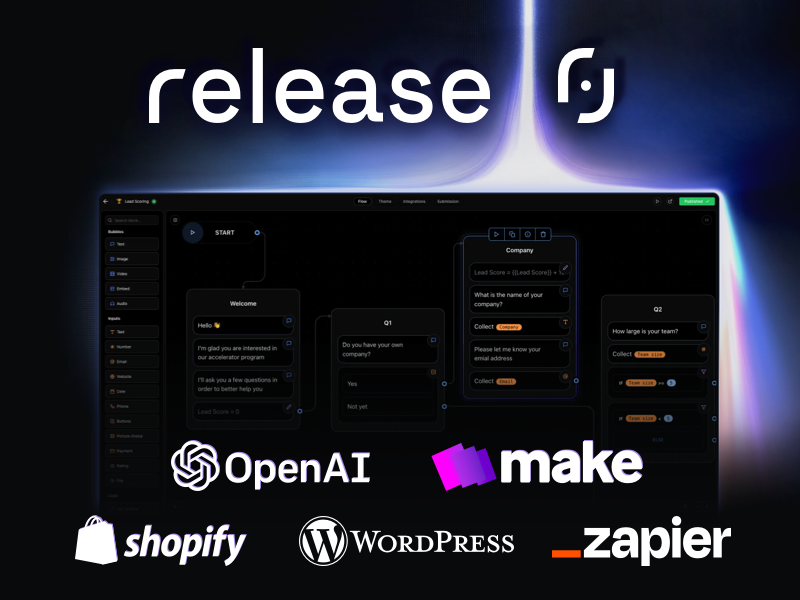
Release0 lets you build chatbots and interactive flows using a drag-and-drop editor. You don’t need to code—just set up the conversation logic and connect it to your site or share it with a link or QR.
It works with AI models like OpenAI and Claude, so you can handle complex questions or automate tasks. You get real-time stats, can customize the look and feel (even remove our branding), and connect it to tools like WhatsApp or Google Analytics. Whether you’re answering support questions, collecting leads, or guiding users through a product, Release0 helps you do it faster and without technical setup. There’s a free plan so you can try it right away.
 Check out all of the photos captured on the latest Pixel series phones at the Mexico City celebration.
Check out all of the photos captured on the latest Pixel series phones at the Mexico City celebration.  The Military Police of the State of São Paulo (PMESP) chose Android Enterprise to easily and quickly deploy and protect data for its 10,000 police vehicles. By adopting …
The Military Police of the State of São Paulo (PMESP) chose Android Enterprise to easily and quickly deploy and protect data for its 10,000 police vehicles. By adopting …





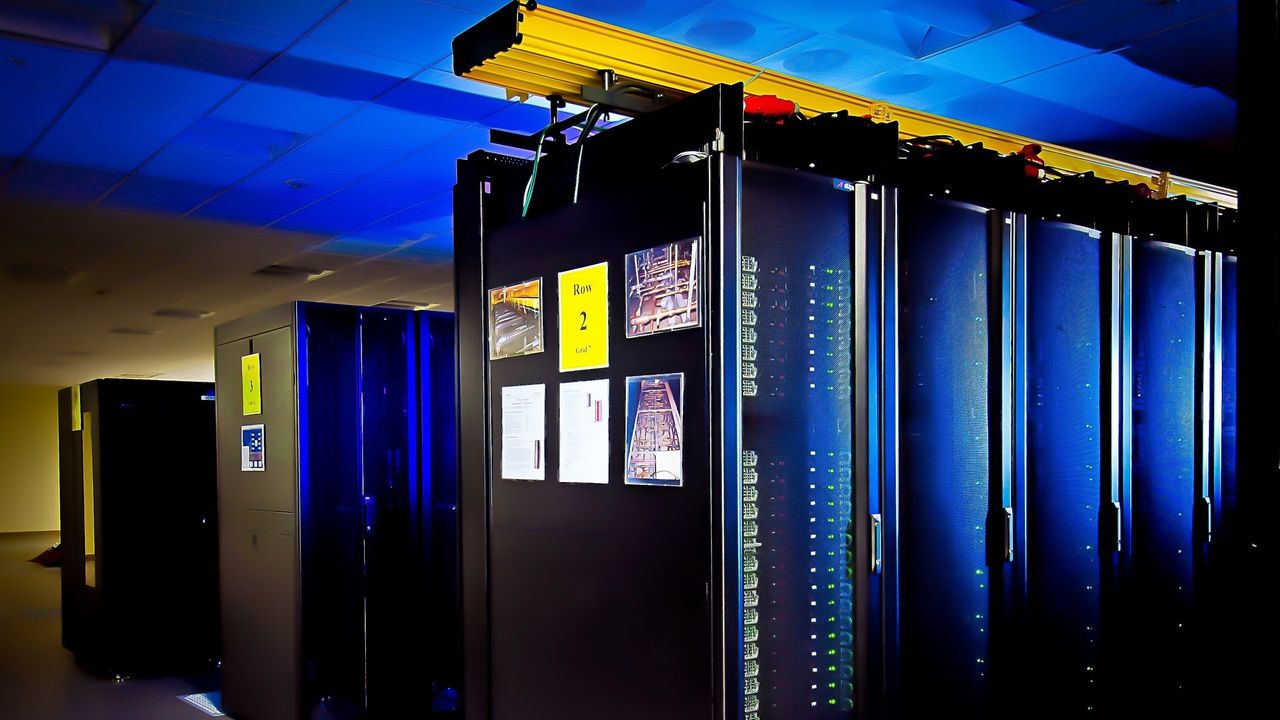

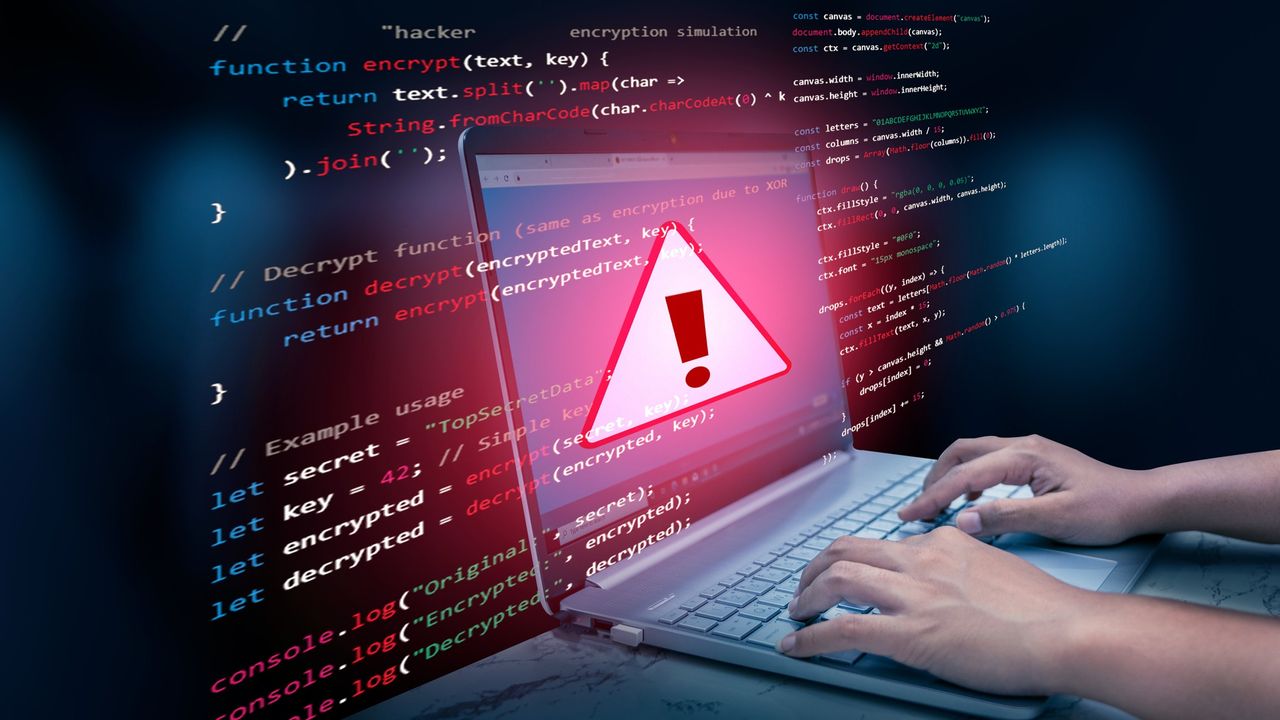




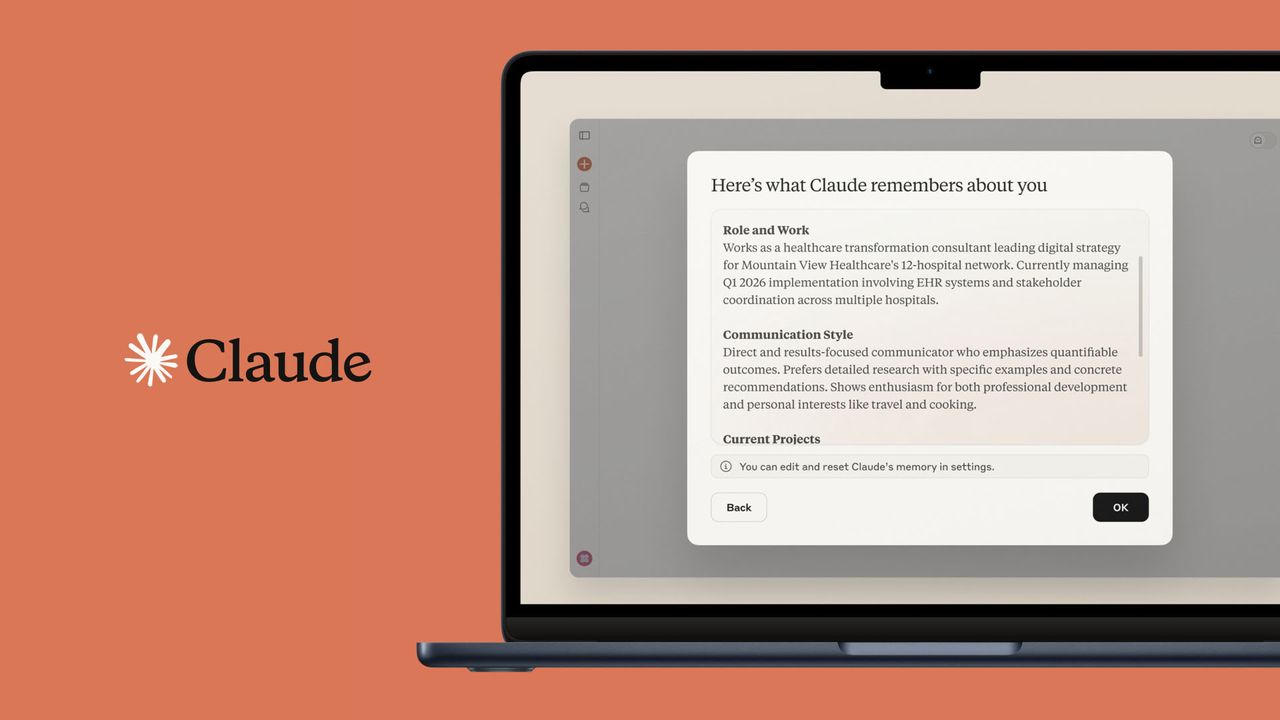
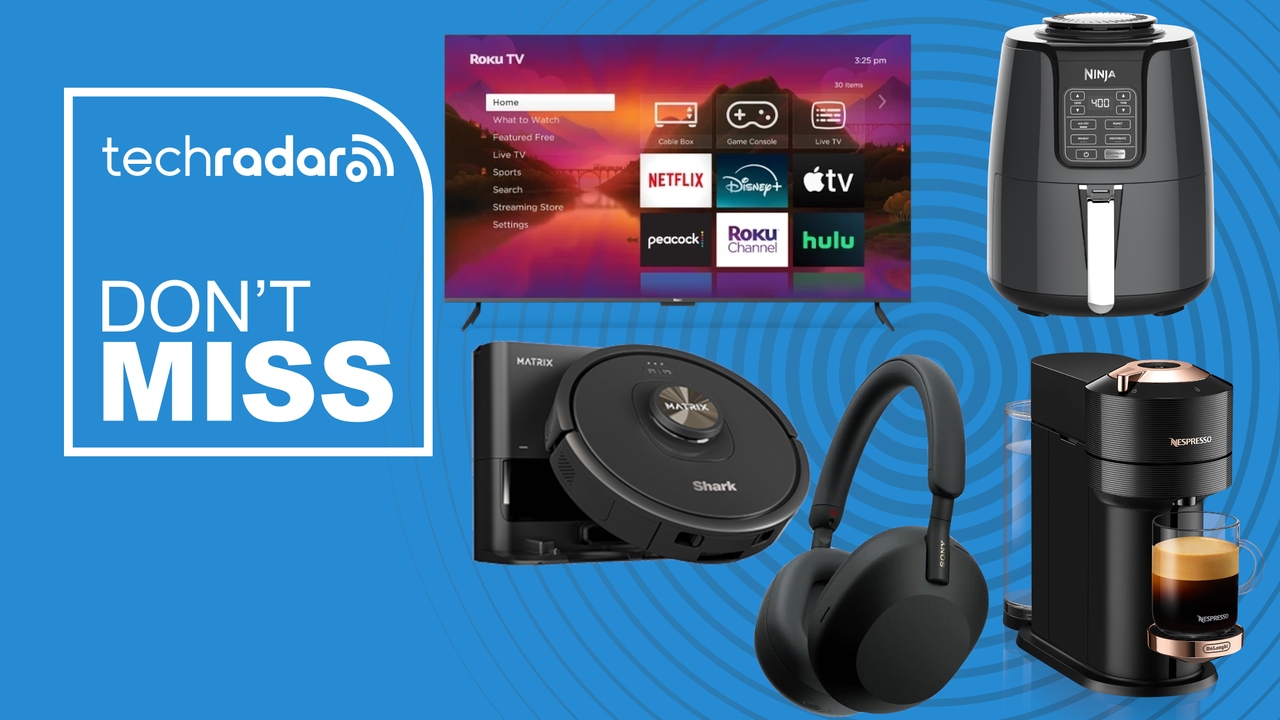








The post Opera Neon Hit by AI Browser Prompt Injection Flaw appeared first on StartupHub.ai.
An AI browser prompt injection flaw in Opera Neon allowed attackers to extract sensitive user data through hidden HTML, exposing a critical security challenge for agentic browsers.
The post Opera Neon Hit by AI Browser Prompt Injection Flaw appeared first on StartupHub.ai.
The post The Digital Afterlife: AI’s Disruption of Death and Legacy appeared first on StartupHub.ai.
The ancient human yearning for immortality is rapidly colliding with the cutting edge of artificial intelligence, redefining not just what it means to live, but what it means to be dead. In a recent WIRED “Incognito Mode” segment, host Andrew Couts delved into the burgeoning “death tech” industry, exploring the fantastical promises of cryogenics alongside […]
The post The Digital Afterlife: AI’s Disruption of Death and Legacy appeared first on StartupHub.ai.
The post Amazon’s AI Investments Drive AWS Re-acceleration and Retail Innovation appeared first on StartupHub.ai.
Amazon’s strategic, multi-billion dollar investment in artificial intelligence, particularly in its underlying compute infrastructure, is demonstrably paying dividends, propelling a significant re-acceleration in AWS revenue growth and fostering innovation across its vast retail empire. This was the central theme articulated by Ronald Josey, Citi’s Senior Internet Analyst, in a recent interview on CNBC’s ‘The Exchange’ […]
The post Amazon’s AI Investments Drive AWS Re-acceleration and Retail Innovation appeared first on StartupHub.ai.
The post AI Drives Digital Ad Spend Through Precision and Measurable Return appeared first on StartupHub.ai.
“If someone came to you and said, ‘Hey, let’s play a game, you give me a dollar and I’ll give you three dollars back,’ when would you stop playing that game?” This potent analogy, offered by MNTN CEO Mark Douglas, encapsulates the fundamental shift driving the current digital advertising boom: artificial intelligence is making ad […]
The post AI Drives Digital Ad Spend Through Precision and Measurable Return appeared first on StartupHub.ai.
The post AI Team Wellness: A Strategic Imperative for SMBs appeared first on StartupHub.ai.
AI is transforming team wellness, offering small and medium-sized businesses a strategic advantage in boosting productivity and retaining top talent through personalized care.
The post AI Team Wellness: A Strategic Imperative for SMBs appeared first on StartupHub.ai.
The post Amazon’s AI Vision Captivates Investors Amidst Hyperscaler Spending Spree appeared first on StartupHub.ai.
In the high-stakes arena of artificial intelligence, where colossal capital expenditure is the new norm, Amazon has successfully distinguished its strategic vision, earning a significant vote of confidence from investors. While the broader market grapples with the sheer scale of investment required for AI infrastructure, Amazon’s approach has been met with enthusiasm, validating its long-term […]
The post Amazon’s AI Vision Captivates Investors Amidst Hyperscaler Spending Spree appeared first on StartupHub.ai.
The post Meta’s AI Spending: A Metaverse Echo Raising Investor Eyebrows appeared first on StartupHub.ai.
“Significant AI investments despite unknown revenue mirrors the ’21, ’22 Metaverse spending.” This stark observation, highlighted by Jason Helfstein, Oppenheimer’s Head of Internet Research, encapsulates the core concern driving his firm’s recent downgrade of Meta Platforms. The market, it seems, is experiencing a sense of déjà vu, wary of another massive capital expenditure cycle with […]
The post Meta’s AI Spending: A Metaverse Echo Raising Investor Eyebrows appeared first on StartupHub.ai.
The post AI Scale Testing: Ensuring AI Apps Perform Under Pressure appeared first on StartupHub.ai.
Effective AI scale testing is crucial for deploying high-quality, secure AI applications, requiring a disciplined approach from hotspot identification to realistic workload modeling and data analysis.
The post AI Scale Testing: Ensuring AI Apps Perform Under Pressure appeared first on StartupHub.ai.
The post Apple’s Insular AI Strategy Raises Analyst Concerns appeared first on StartupHub.ai.
Needham senior internet and media analyst Laura Martin delivered a pointed critique of Apple’s generative AI strategy during a recent appearance on CNBC’s ‘Money Movers’. While acknowledging that Apple has finally articulated an AI narrative, Martin contends the company is “four quarters late” to the party, and its approach lacks the expansive, economy-retooling vision demonstrated […]
The post Apple’s Insular AI Strategy Raises Analyst Concerns appeared first on StartupHub.ai.
The post Hyperdrives Develops New Cooling Technology for EV Motors appeared first on StartupHub.ai.
Hyperdrives has developed a manufacturable direct-conductor technology to solve critical cooling challenges in electric vehicle motors, aiming to boost performance.
The post Hyperdrives Develops New Cooling Technology for EV Motors appeared first on StartupHub.ai.
 AMD made some waves recently when it announced that it would be relegating its RDNA 1 and 2 based Radeon RX 5000 and 6000 Series GPUs to a security-update focused branch of its Radeon GPU driver software. In follow-up comments made to Tom's Hardware, however, AMD has since clarified that this does not mean the GPUs will no longer be supported
AMD made some waves recently when it announced that it would be relegating its RDNA 1 and 2 based Radeon RX 5000 and 6000 Series GPUs to a security-update focused branch of its Radeon GPU driver software. In follow-up comments made to Tom's Hardware, however, AMD has since clarified that this does not mean the GPUs will no longer be supported  If you pay attention to gaming news at all, you've almost assuredly heard by now that Epic Games won its case against Google last year. Google still wants to take the case to the Supreme Court, but for now, it has to abide by the US District Court and Judge James Donato's judgment, where they decided that Google had engaged in unlawful anti-competitive
If you pay attention to gaming news at all, you've almost assuredly heard by now that Epic Games won its case against Google last year. Google still wants to take the case to the Supreme Court, but for now, it has to abide by the US District Court and Judge James Donato's judgment, where they decided that Google had engaged in unlawful anti-competitive  A new threat in is the wild affecting sites that run WordPress, a popular content management system. Wordfence, a company that focuses on security research in the WordPress ecosystem, is reporting that a vulnerability is affecting the Anti-Malware Security and Brute-Force Firewall plugin that’s currently deployed on over 100,000 websites.
The
A new threat in is the wild affecting sites that run WordPress, a popular content management system. Wordfence, a company that focuses on security research in the WordPress ecosystem, is reporting that a vulnerability is affecting the Anti-Malware Security and Brute-Force Firewall plugin that’s currently deployed on over 100,000 websites.
The  In this best-of rundown, we're going to outline the top 10 best gaming processors available in 2025. The CPUs featured here should offer some of the best gaming performance per-dollar in their respective price ranges. In fact, many of the cheaper options are still powerful contenders in modern gaming workloads, thanks to the advancements made
In this best-of rundown, we're going to outline the top 10 best gaming processors available in 2025. The CPUs featured here should offer some of the best gaming performance per-dollar in their respective price ranges. In fact, many of the cheaper options are still powerful contenders in modern gaming workloads, thanks to the advancements made 
AMD clarifies RDNA/RDNA 2 “Maintenance mode” meaning, confirms that some optimisations will be delivered AMD has issued a new statement to clarify its support plans for RDNA and RDNA 2-based graphics cards, confirming that they are part of AMD’s “maintenance mode branch”. This follows a backlash against AMD over the idea that RDNA 2 GPUs […]
The post AMD clarifies future RDNA/RDNA 2 GPU support plans appeared first on OC3D.

Want to keep track of the largest startup funding deals in 2025 with our curated list of $100 million-plus venture deals to U.S.-based companies? Check out The Crunchbase Megadeals Board.
This is a weekly feature that runs down the week’s top 10 announced funding rounds in the U.S. Check out last week’s biggest funding rounds here.
The week’s largest funding rounds confirmed that we’re still very much in the AI era. This included the biggest deal, a $350 million Series C for AI hiring startup Mercor, along with good-sized financings for legal tech unicorn Harvey, shopping platform Whatnot, and email security provider Sublime Security.
1. Mercor, $350M, AI hiring: San Francisco-based Mercor, a provider of AI-enabled tools for hiring, secured $350 million in Series C funding at a $10 billion valuation. Felicis 1 led the financing, which included participation by Robinhood Ventures, General Catalyst and Benchmark.
2. (tied) SavvyMoney, $225M, fintech: SavvyMoney, which offers tools for financial services providers to embed features like credit scores and personalized offers into their consumer offerings, announced a $225 million investment co-led by PSG Equity and Canapi Ventures. Founded in 2009, the Dublin, California, company currently works with more than 1,500 financial institution customers.
2. (tied) Whatnot, $225M, e-commerce: Whatnot, a live shopping platform and marketplace, has closed a $225 million Series F round, more than doubling its valuation to $11.5 billion in less than 10 months. DST Global and CapitalG co-led the financing, which brings the Los Angeles-based company’s total raised to about $968 million since its 2019 inception.
4. (tied) Sublime Security, $150M, cybersecurity: Sublime Security, a developer of agentic AI tools for email security, raised $150 million in a Series C round led by Georgian. The financing brings total funding to date for the 6-year-old Washington, D.C.-based company to around $240 million, per Crunchbase data.
4. (tied) Harvey, $150M, legal tech: Harvey, developer of an AI-enabled platform for legal professionals, closed on a fresh $150 million, bringing total reported funding to date to $1 billion. Andreessen Horowitz led the latest round, which reportedly set an $8 billion valuation for the 3-year-old, San Francisco-based company.
6. (tied) Human Interest, $100M, finance: Human Interest, a San Francisco-based startup that helps small businesses offer 401(k) plans to their employees, raised more than $100 million at a $3 billion valuation, Axios reports. That valuation is up from the $1.3 billion the company was last valued at in 2024. Previous investors Baillie Gifford, BlackRock, Marshall Wace, Morgan Stanley and TPG again backed the company.
6. (tied) Substrate, $100M, semiconductors: Substrate, a San Francisco-based startup seeking to build semiconductor factories with new laser-based technology, raised $100 million from Founders Fund, General Catalyst, IQT and others.
8. Zag Bio, $80M, biotech: Cambridge, Massachusetts-based Zag Bio, a developer of thymus-targeted medicines, announced its public launch with $80 million in financing, including a recently closed Series A round. Polaris Partners founded and incubated the startup and co-led the Series A financing with the JDRF T1D Fund.
9. ConductorOne, $79M, identity security: ConductorOne, an identity security startup building an AI platform geared for human, non-human and AI identities, landed $79 million in a Series B financing led by Greycroft. The 4-year-old Portland, Oregon-based company says it saw 400% revenue growth last year.
10. Blueprint, $60M, personal care: Blueprint, a Los Angeles-based brand that markets supplements, skin and hair care products, and foods geared to promote well-being and longevity, raised $60 million from a long list of venture and celebrity investors including Paris Hilton, Cameron Winklevoss, Tyler Winklevoss and Logan Paul.
We tracked the largest announced rounds in the Crunchbase database that were raised by U.S.-based companies for the period of Oct. 25-31. Although most announced rounds are represented in the database, there could be a small time lag as some rounds are reported late in the week.
Illustration: Dom Guzman





What do you play when you crave an adrenaline rush? We can think of dozens of games that fit this description, but we narrowed it down to 14 pulse-spikers (plus a few shout-outs) that are scary, gory, or frustratingly hard, in a good way.


Intel once had some big plans for its Battlemage GPU family with bigger dies, 3D stacked cache solutions & more, yet those were cancelled due to unfortunate circumstances surrounding the financial position of the blue team, and changes in the leadership. Intel's Canned "Battlemage" GPU Plans Reveal Bigger Dies With Up To 40 Xe2 Cores, 3D Stacked "Adamantine" Cache & Halo SoCs Intel's first generation of Arc GPUs, codenamed Alchemist, didn't kick off the way the blue team wanted, but the graphics division made a huge comeback through solid driver support, which set the stage for its next-gen Arc lineup, […]
Read full article at https://wccftech.com/intel-ambitious-plans-big-battlemage-gpus-huge-3d-stacked-caches-more-xe-cores-halo-soc/

Intel is reportedly eyeing a major acquisition under its new leadership, with a potential takeover of the AI startup SambaNova, which could prove massive for the firm's AI ambitions. Intel's Potential SambaNova Acquisition Would Equip the Firm With an Independent End-to-End AI Ecosystem Well, for those unaware, Intel is in talks to acquire the AI firm SambaNova, and it has contacted bankers to arrange the financial means for the transaction, according to a report by Bloomberg. The selection of SambaNova here tells us a lot about what to expect from Intel and AI moving forward. However, it has been revealed […]
Read full article at https://wccftech.com/intel-potential-acquisition-of-sambanova-could-catalyze-the-ai-comeback/

Embark Studios just released its second major title, ARC Raiders, which launched yesterday and made quite the splash, achieving over 250K concurrent players on Steam, making it the biggest launch for an extraction shooter on the platform, and it also surpassed Embark's other major title, The Finals, for its concurrent launch numbers on Steam. Keeping up with the pace of modern-day live service games, Embark Studios has no intention of slowing down and followed up yesterday's stellar launch with the reveal of the game's roadmap for the remainder of 2025. There are no specific release dates around when the next […]
Read full article at https://wccftech.com/embark-studios-arc-raiders-2025-roadmap/

Epic Games has introduced a new category of cosmetics called Fortnite Sidekicks. They're essentially pets that follow the player around in various modes, including Battle Royale, LEGO Fortnite, Save the World, Fortnite Festival (though they'll remain backstage), and even user-made experiences (though only if the creator has enabled them). They won't provide any gameplay advantages, so their only real perk is looking cute. They do, however, react to the surrounding world, and players can interact with them through special Sidekick Emotes. The first one to be introduced to the game is Peels, a 'banana dog', which will be available to […]
Read full article at https://wccftech.com/fortnite-sidekicks-cute-pets-follow-around-can-only-be-customized-once/

This isn't something we expected, but AMD is back with a new statement, claiming that it won't be ending the game/features support for the RX 5000 and RX 6000 GPUs. AMD Rolls Back its Decision to End the New Features and Game Optimizations Support for RDNA 1/2; Also, Refutes The RX 7900 XTX USB-C PD Reports AMD's exclusion of the RX 5000 and RX 6000 series GPUs from its latest game optimization and features support resulted in a backlash. It's obvious since anybody who owns these GPUs, particularly those who bought them in the last 2-3 years, wouldn't want to […]
Read full article at https://wccftech.com/amd-backtracks-says-it-will-continue-game-optimizations-and-features-support-for-rdna-1-and-rdna-2-gpus/

It's Halloween at the time of this writing, which means it's the perfect day to turn off the lights and play a horror game, whether that's something new like Cronos: The New Dawn and Silent Hill f, or a classic like Amnesia: The Dark Descent, Dead Space, and Alien: Isolation. Developer Broken Mirror Games and publisher Skybound Games' upcoming isometric 80s-themed horror adventure was unfortunately never going to be an option this Halloween, as it was due to come out on November 7, 2025, but now it won't even be coming out this year. A new story trailer released today […]
Read full article at https://wccftech.com/i-hate-this-place-delayed-into-2026-new-story-trailer-halloween/

Grand Theft Auto 4 with RTX Remix Path Tracing looks like the remaster we'll likely never get, introducing significant visual improvements that enhance the game's visuals considerably. How much the mod developed by Xoxor4D enhances the visuals of the fourth entry in the series by Rockstar Games is shown in a new comparison video put together by MxBenchmarkPC. The video showcases the vanilla version of the game running side by side with the path-traced version at 4K and 1440p resolutions, utilizing NVIDIA DLSS and Frame Generation. As expected, the mod is highly demanding, and even high-end modern hardware has trouble […]
Read full article at https://wccftech.com/grand-theft-auto-4-path-tracing-remaster/

NVIDIA's CEO Jensen Huang has made an interesting statement about their market share in China, claiming that it fell drastically during the Biden adminstration. NVIDIA's CEO Is Optimistic About Getting Back Into China's AI Market, But So Far, There Is No Progress Well, NVIDIA's China AI market has been under uncertainity for quite some time now, considering the restrictions the firm has faced under both the Biden era and the current administration. With the Ampere and Hopper lineups in particular, Team Green didn't face many issues with China, as the A100 and H100 AI chips were being supplied to Beijing […]
Read full article at https://wccftech.com/biden-administration-policies-led-to-a-0-market-share-in-china-claims-nvidia-jensen-huang/

As AI GPUs continue to dominate the technology conversation, we decided to sit down with Kristof Beets, Vice President of Product Management at Imagination Technologies. Imagination Technologies is one of the oldest GPU intellectual property firms in the world and has been known for previously supplying Apple GPUs for the iPhone and iPad. With GPUs being quite close to AI processing needs as well, our discussion with Kristof surrounded how Imagination Technologies' products are suitable for AI computing. He also compared them with NVIDIA's GPUs, and the conversation started off with Kristof giving us a presentation of Imagination's latest E-Series […]
Read full article at https://wccftech.com/apples-former-gpu-supplier-imagination-tech-shares-ai-gpu-advantages-over-nvidia/

Panic Stations is a new game developer formed by former Mediatonic developers who worked on the popular competitive multiplayer title, Fall Guys. The studio announced itself with a post on its official X (formerly Twitter) account in a video filled with cartoon pigeons. Joe Walsh, a game designer at Panic Stations, provides the voice over for the first pigeon you see, beginning the video by saying, "Games should be funnier and they should be stupider. Here at Panic Stations, we're going to fix that." The team is currently working on its debut game, which it says is "not about pigeons" […]
Read full article at https://wccftech.com/former-fall-guys-developers-form-panic-stations-focus-on-co-op-multiplayer-games/

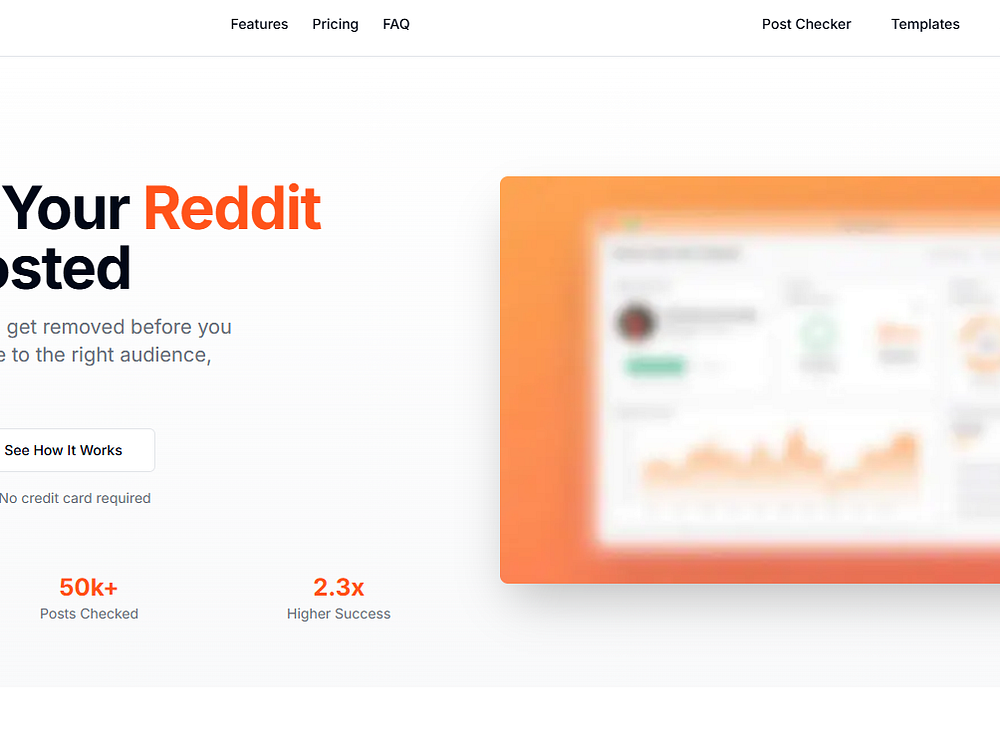
RedditReady is a tool that checks your post against subreddit rules and common mod removal patterns, helping you reduce the risk of having it removed.
It provides a risk analysis showing how likely your post is to be removed, along with exact recommendations on what to fix — so you can post with confidence.
Presented by Celonis
AI adoption is accelerating, but results often lag expectations. And enterprise leaders are under pressure to prove measurable ROI from the AI solutions — especially as the use of autonomous agents rises and global tariffs disrupt supply chains.
The issue isn’t the AI itself, says Alex Rinke, co-founder and co-CEO of Celonis, a global leader in process intelligence. “To succeed, enterprise AI needs to understand the context of a business’s processes — and how to improve them,” he explains. Without this business context, AI risks becoming, as Rinke puts it, “just an internal social experiment.”
Next week’s Celosphere 2025 will tackle the AI ROI challenge head-on. The three-day event brings together customer strategies, hands-on workshops, and live demonstrations, highlighting enhancements to the Celonis Process Intelligence (PI) Platform that help enterprises harness ‘enterprise AI,’ powered by PI, to continuously improve operations, creating measurable business value at scale.
The event’s focus on achieving AI ROI reflects three challenges facing technology and business leaders moving from pilot to production: obsolete systems, break-neck industry change, and agentic AI. According to Gartner, 64% of board members now view AI as a top-three priority — yet only 10% of organizations report meaningful financial returns.
Celonis customers are bucking that trend. A Forrester Total Economic Impact study found organizations using its platform achieved 383% ROI over three years, with payback in just six months. One company improved sales order automation from 33% to 86%, saving $24.5 million. The study estimated $44.1 million in total benefits over three years, driven by faster automation, reduced inefficiencies, and higher process visibility. These numbers underscore a broader pattern — companies that modernize outdated systems and align AI with process optimization see faster payback and sustained gains.
Celosphere will spotlight how global enterprises are building “future-fit” operations. Mercedes-Benz Group AG and Vinmar Group will showcase AI-driven, composable solutions, powered by PI, and attendees will see demonstrations of PI enabling agents in live production environments.
Among the notable success stories:
AstraZeneca, the pharmaceutical company, reduced excess inventory while keeping critical medicines flowing by using Celonis as a foundation for its OpenAI partnership.
The State of Oklahoma can answer procurement status questions at scale, unlocking over $10 million in value.
Cosentino clears blocked sales orders up to 5x faster using an AI-powered credit management assistant.
Numerous sessions will focus on orchestrating AI agents. The shift from AI-as-advisor to AI-as-actor, changes everything, says Rinke.
“The agent needs to understand not just what to do, but how your specific business actually works,” he explains. “Process intelligence provides those rails."
This leap from recommendation to autonomous action raises the stakes exponentially. When agents can independently trigger purchase orders, reroute shipments, or approve exceptions, bad context can mean catastrophically bad outcomes at scale.
Celosphere attendees will get to see first-hand how companies are using the Celonis Orchestration Engine to coordinate AI agents alongside people and systems. Effective orchestration is a crucial protection against the chaos of agents working at cross-purposes, duplicating actions, or letting crucial steps fall through the cracks.
Global trade volatility isn't just a headline — it's an operational nightmare reshaping how companies deploy AI, Rinke says.
New tariffs trigger cascading effects across procurement, logistics, and compliance. Each policy shift can cascade across thousands of SKUs — forcing new supplier contracts, rerouted shipments, and rebalanced inventories. For AI systems trained on static conditions, that volatility is almost impossible to predict. Traditional AI systems struggle with such variability — but process intelligence gives organizations real-time visibility into how changes ripple through operations.
Celosphere case studies will show how companies turn disruption into advantage. Smurfit Westrock uses PI to optimize inventory and reduce costs amid tariff uncertainty, while ASOS leverages PI to optimize its supply chain operations, enhancing efficiency, reducing costs, and continuing to deliver an outstanding customer experience.
Rinke argues that Celonis’ edge lies in treating process intelligence not as an add-on, but as the foundation of the enterprise stack. Unlike bolt-on optimization tools, the Celonis platform creates a living digital twin of business operations — a continuously updated model enriched by context that lets AI operate effectively from analysis to execution.
“What sets Celonis apart is visibility across systems and offline tasks, which is critical for true intelligent automation,” Rinke says. “The platform offers comprehensive capabilities spanning process analysis, design, and orchestration rather than a point solution.”
Celonis continues to champion openness through its “Free the Process” movement, promoting fair competition and freeing enterprises from legacy lock-in. By giving organizations full access to their own process data, open APIs, and a growing partner network that includes The Hackett Group, ClearOps, and Lobster, Celonis is building the connective tissue for a new era of interoperable automation.
For Rinke, this open foundation is what turns AI from a set of experiments into an enterprise engine. “Process intelligence creates a flywheel,” he says. “Better understanding leads to better optimization, which enables better AI — and that, in turn, drives even greater understanding. There is no AI without PI."
Sponsored articles are content produced by a company that is either paying for the post or has a business relationship with VentureBeat, and they’re always clearly marked. For more information, contact sales@venturebeat.com.

 Check out all of the photos captured on the latest Pixel series phones at the Mexico City celebration.
Check out all of the photos captured on the latest Pixel series phones at the Mexico City celebration.


Want your business to show up in Google’s AI-driven results? The same principles that help you rank in Google Search still matter – but AI introduces new dimensions of context, reputation, and reasoning, according to Robby Stein, VP of Product, Google Search.
PR for AI. In an interview with Marina Mogilko of Silicon Valley Girl, Stein said AI “thinks a lot like a person would,” and agreed with her assessment that you’re investing in PR not for people to see it, but for AI. Stein said:
SEO overlap. Stein talked a bit about how AI optimization strategies differ from traditional SEO:
So is it (GEO, AEO, or whatever we end up calling AI search optimization) basically the same as SEO? Stein said:
Tools still matter. Stein pointed to Google Trends, Ads, and Search Console as underused resources for understanding new types of search behavior.
Why we care. Google Search is continuing to evolve. So, too, is SEO. Even Stein seemed to acknowledge that it’s not “just SEO” that matters in the era of AI Overviews and AI Mode, despite there being a lot of overlap. Because you are no longer just optimizing to be ranked – you’re optimizing to be recommended.
The interview. Google’s AI Search Expert: How to Get Ahead Before AI Changes Everything

AI may be reshaping search, but ads aren’t going away, according to Google VP of Product, Search Robbie Stein.
What he’s saying. Asked by Marina Mogilko of Silicon Valley Girl whether Google Ads will go away in the future, Stein replied: “Don’t see them going away.” He added that user behavior is “really expanding” with AI, not shifting away from search. Google is already experimenting with ads inside AI experiences:
Organic first. AI recommendations aren’t driven by ads inputs, Stein said:
What’s next. Expect “new and novel ad formats,” but it’s still “early days” and Google is figuring out “how ads might appear in these systems,” Stein said:
Dig deeper: Google briefs brands on AI Mode ads ahead of Q4 rollout
Why we care. I doubt most people think Google Ads is going away anytime soon. But it is interesting to know that “new and novel ad formats” are coming – so this will be an area of extreme interest for brands that want to be visible in conversational or multimodal queries.
The interview. Google’s AI Search Expert: How to Get Ahead Before AI Changes Everything







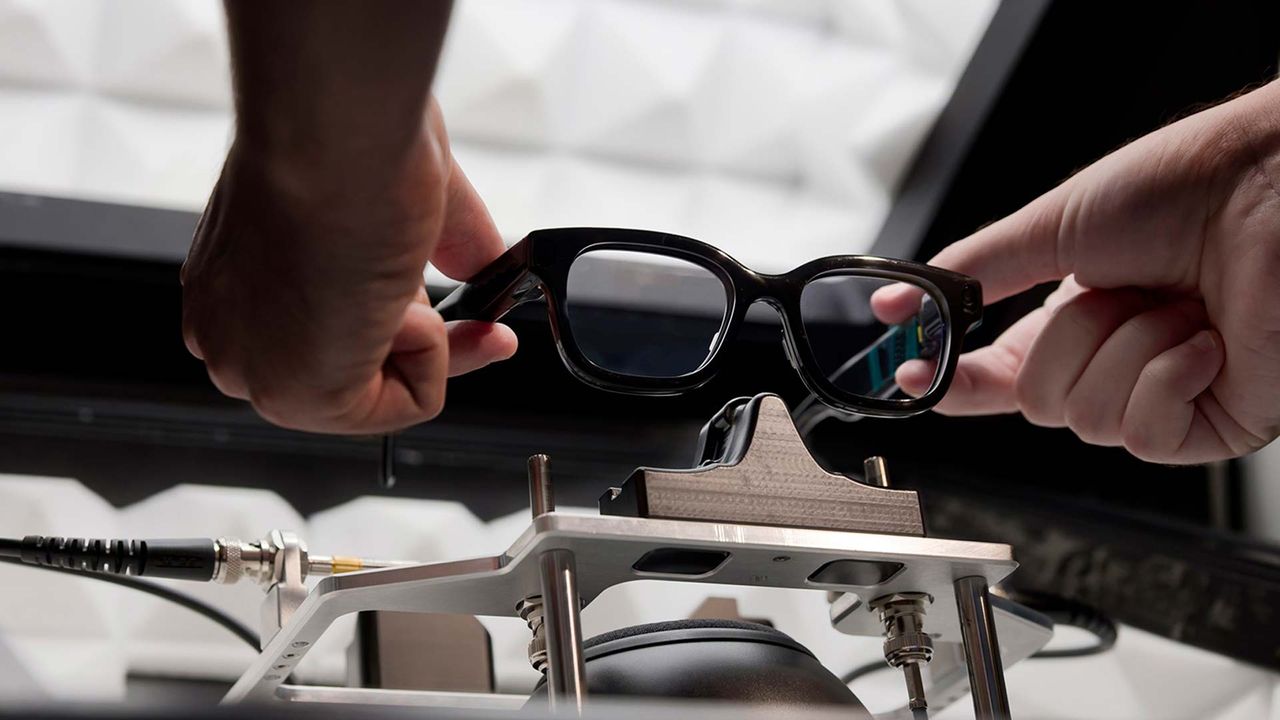

























— Julie Van Ullen is now president and chief revenue officer for iSpot, a Bellevue, Wash., company that measures the impact of advertising campaigns on TV and video streaming. Van Ullen serves on the board of directors for the Interactive Advertising Bureau (IAB), a trade group. She joins iSpot from Rakuten Rewards, a leading e-commerce loyalty company.
“Julie is a dynamic leader with a proven track record of building high-growth teams and fostering trusted relationships with customers across the media and advertising ecosystem,” iSpot founder and CEO Sean Muller said in a statement.
iSpot ranks No. 6 on the GeekWire 200, our list of the top privately held startups in the Pacific Northwest.

— MoxiWorks named Ashley Fidler as chief product officer of the Seattle-based real estate platform. Fidler joins the company from Pure Property Management and was a Microsoft program manager earlier in her career.
“Ashley brings an incredible depth of experience in building category-defining platforms that marry cutting-edge AI with real-world business impact,” said Michael Messig, MoxiWorks’ CTO, in a statement.
MoxiWorks last month appointed a new chief marketer, and in May sold its back-office accounting product in order to focus on sales and marketing.

— Seattle Sounders FC and Seattle Reign FC hired Ro Vega as chief marketing officer for the two soccer clubs. Vega has worked in brand management for nearly two decades, including positions with Beats by Dr. Dre and Nike, where he focused on soccer products in North America. He joins the Seattle teams from The Trade Desk, a digital advertising company.
— F5 CEO and President François Locoh-Donou is taking the additional role of chair of the board of directors in March 2026. The company shared the news in an SEC filing. Locoh-Donou is succeeding Alan Higginson, who disclosed in August that he is retiring after nearly 30 years as an F5 board member and 20 years as board chair.
— Trupanion, the longtime Seattle-based pet insurance provider, named Bradley Powell as a member of its board of directors. Powell was previously chief financial officer of the global logistics company Expeditors International of Washington. He was also CFO of Eden Bioscience, a publicly traded biotech company.
— Gurobi Optimization, a Beaverton, Ore.-based company offering mathematical problem solving technology, named Oliver Bastert as chief technology officer. Bastert, who will work remotely from Munich, Germany, joins the company from the analytics and credit-scoring company FICO where he was vice president of product management.
— Bill Platt, former leader of Amazon Web Services’ agentic AI division, joined San Francisco-based Alchemy as chief operating officer. Platt’s mandate is “to weave AI agents deeply into blockchain infrastructure,” according to the company. Platt was with AWS for nearly 12 years over two stints, most recently based in the Boston area.
— Seattle Metro Chamber named Mara Samudrala as director of communications and marketing for the region’s leading business association. Samudrala comes to the role from the Greater Phoenix Chamber.
— Halley Knigge has done a Seattle co-op swap. The former communications and inclusion lead for REI Co-op is now VP of communications at BECU, a financial cooperative. Her past experience includes a media leadership role at Alaska Airlines.
— Casium, a Seattle-based immigration tech startup, named Kaustubh (Kaust) Yadav as product designer. Yadav has experience in creative direction, copywriting and product design, working on campaigns for companies and brands including Amazon, AmEx, BMW, Citi and Pepsi.

Amazon’s cash tax bill has dropped sharply this year under a new U.S. tax law that lets companies immediately deduct the cost of equipment and research — a policy designed to encourage spending on technology development and other investments.
The decrease is detailed in the company’s third-quarter 10-Q filing, released Friday morning following its blockbuster earnings report. Amazon’s shares rose more than 10% in early trading after beating expectations and reassuring investors about long-term AI demand.
In the filing, Amazon cites the “One Big Beautiful Bill Act of 2025” as a key factor in the tax deduction. The situation illustrates how tax changes championed by President Trump and the Republican-led Congress are rewarding U.S. investment and reshaping corporate finances.
But it’s not as simple as a basic tax break: while the law accelerates short-term deductions for domestic investment, it also changes the tax treatment on foreign profits — boosting long-term tax liabilities overall.
According to its quarterly filing, Amazon paid $1.1 billion in cash for income taxes in the third quarter, a 45% decrease from the $2 billion it paid in the same period last year — even as quarterly profits rose 38% to $21.2 billion. For the first nine months of 2025, cash tax payments fell to $6.8 billion, down from $8.2 billion in 2024.
The new law changed two key rules that impact companies making big capital investments.
For a company like Amazon, these changes create a significant and immediate reduction in taxable income. The tech giant spent $35.1 billion on property and equipment in the third quarter, up 55% from a year earlier, driven by massive investments in AI infrastructure.
Backers of the U.S. tax changes said they would spur investment and job creation in the United States, but Amazon’s situation shows that the reality is more complicated. The company is reaping the benefits of the new tax incentives while eliminating about 14,000 corporate jobs.
Speaking on Amazon’s earnings call, CEO Andy Jassy attributed the layoffs not to cost-cutting but to efforts to simplify operations and reduce bureaucracy after years of growth. Amazon took a $1.8 billion pre-tax charge in the quarter for severance and other costs related to the layoffs.
Amazon isn’t alone in spending big on AI infrastructure or benefitting from the tax changes.
Although they didn’t go into as much detail as Amazon did, Microsoft and Google both referenced the 2025 U.S. tax law in their latest quarterly reports, noting the reinstatement of immediate R&D expensing and accelerated depreciation. Both companies are realizing similar near-term tax benefits as they expand their AI and cloud infrastructure investments.
For Amazon, the changes in U.S. tax law mark a new chapter in a long-running national debate. The company, which faced criticism in years past for paying little or no federal income tax despite strong profits, has long maintained that it pays what it owes under U.S. law.
However, the immediate reduction is only part of the picture.
While Amazon’s cash payments declined, the tax expense reported on its income statement — a figure based on accounting rules rather than cash paid — nearly doubled. The company’s income-tax provision for the first nine months of 2025 was $14.1 billion, up from $6.9 billion in the same period last year.
Amazon’s filing says this increase was also driven by the new tax act, which reduced other benefits, such as the deduction for profits made overseas.
This $7.3 billion gap between its accounting provision ($14.1 billion) and its cash tax bill ($6.8 billion) shows how the new law shifts the timing of tax payments rather than eliminating them. In effect, the deductions reduce the company’s cash outlay for taxes in the short term but will ultimately be paid in future years as those assets are depreciated on the company’s books.
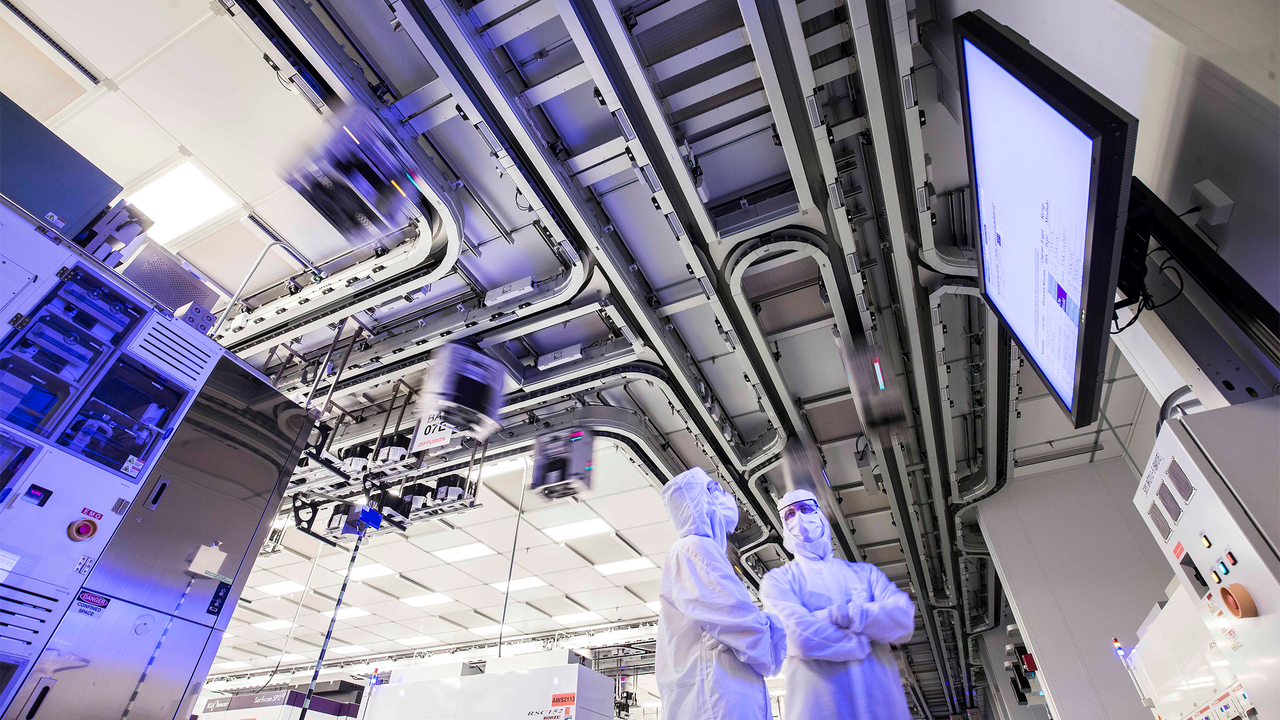
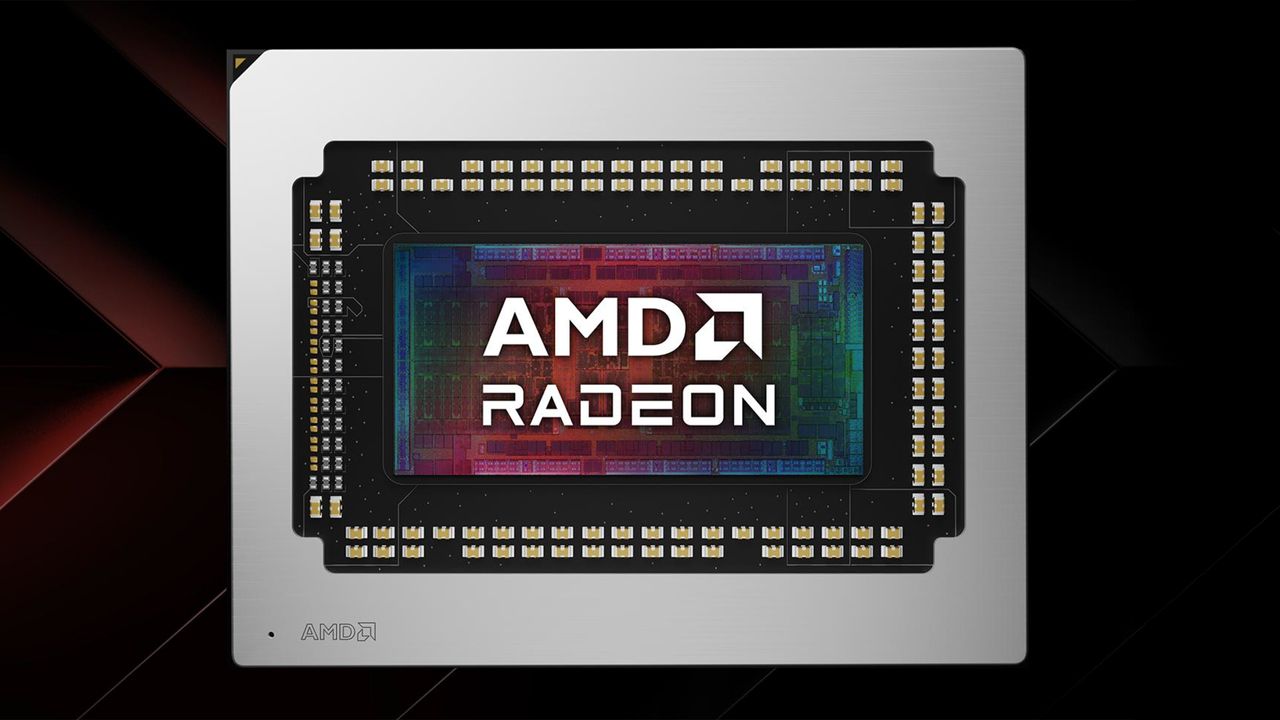



The post Beyond Prompt Engineering: The Era of Vibe Coding appeared first on StartupHub.ai.
The prevailing narrative surrounding AI interaction, particularly the emphasis on intricate prompt engineering, is fundamentally misguided and rapidly approaching obsolescence, according to Matthew Berman. Speaking on a recent Forward Future Live broadcast, Berman, the founder of Forward Future, articulated a compelling vision for human-AI collaboration that pivots from keyword crafting to a more intuitive, intent-driven […]
The post Beyond Prompt Engineering: The Era of Vibe Coding appeared first on StartupHub.ai.
The post South Korea’s AI Infrastructure: A National Rewiring appeared first on StartupHub.ai.
South Korea is making an unprecedented national investment in its AI infrastructure, deploying over a quarter-million NVIDIA GPUs to build a comprehensive AI ecosystem.
The post South Korea’s AI Infrastructure: A National Rewiring appeared first on StartupHub.ai.
The post Goldman Sachs’ Joseph Briggs: Gen AI could lift U.S. labor productivity 15% in 10 years appeared first on StartupHub.ai.
Joseph Briggs, a senior global economist at Goldman Sachs, recently shared insights on the macroeconomic implications of generative AI, projecting a significant uplift in U.S. labor productivity. Speaking with CNBC’s ‘Squawk on the Street’, Briggs elaborated on the potential of AI to transform the economy. Briggs spoke with CNBC’s ‘Squawk on the Street’ about macro […]
The post Goldman Sachs’ Joseph Briggs: Gen AI could lift U.S. labor productivity 15% in 10 years appeared first on StartupHub.ai.
The post ASEAN’s Quest for Culturally Intelligent AI appeared first on StartupHub.ai.
The global surge of artificial intelligence presents both unprecedented opportunities and profound challenges for the diverse nations of ASEAN. At the recent Bloomberg Business Summit at ASEAN in Kuala Lumpur, a panel featuring Khairul Anwar, Founder & CEO of Pandai; Ilaria Chan, Chairperson of Tech For Good Institute and Group Advisor for Tech & Social […]
The post ASEAN’s Quest for Culturally Intelligent AI appeared first on StartupHub.ai.
The post Malaysia’s National AI Vision: Beyond Chatbots to Societal Transformation appeared first on StartupHub.ai.
The popular perception of artificial intelligence, often limited to the immediate utility of tools like ChatGPT for tasks such as drafting emails or summarizing articles, barely scratches the surface of its true potential. This was the opening observation by Bloomberg’s Mark Dawson during his interview with Sam Majid, CEO of the National AI Office of […]
The post Malaysia’s National AI Vision: Beyond Chatbots to Societal Transformation appeared first on StartupHub.ai.
The post Altrove raises $10M to advance AI-designed materials appeared first on StartupHub.ai.
Paris-based Altrove is scaling its AI platform to design and produce sustainable alternatives to critical materials like rare earths and cobalt.
The post Altrove raises $10M to advance AI-designed materials appeared first on StartupHub.ai.
The post ASEAN’s Digital Destiny: Blockchain, AI, and the Global South’s Opportunity appeared first on StartupHub.ai.
The tectonic plates of technology shift every couple of decades, fundamentally altering how humanity interacts with data and systems. Dato’ Fadzli Shah, Co-Founder of Zetrix, addressed attendees at the Bloomberg Business Summit at ASEAN in Kuala Lumpur, outlining his vision for how the region can strengthen its digital economy and competitiveness through the advancement of […]
The post ASEAN’s Digital Destiny: Blockchain, AI, and the Global South’s Opportunity appeared first on StartupHub.ai.
The post Adam raises $4.1M to advance its 3D AI copilot appeared first on StartupHub.ai.
YC alum Adam raised $4.1M to transform its viral text-to-3D tool into a comprehensive 3D AI copilot for artists and developers.
The post Adam raises $4.1M to advance its 3D AI copilot appeared first on StartupHub.ai.
The post Aon CFO Edmund Reese on AI’s Infrastructure Boom and Catastrophe Bonds appeared first on StartupHub.ai.
Aon CFO Edmund Reese, in an interview with CNBC’s Contessa Brewer, illuminated the intricate landscape where the burgeoning demands of artificial intelligence intersect with escalating climate risks, creating both immense opportunities and complex challenges for global enterprises. Reese’s commentary, following Aon’s robust Q3 2025 earnings, painted a clear picture of how the firm is strategically […]
The post Aon CFO Edmund Reese on AI’s Infrastructure Boom and Catastrophe Bonds appeared first on StartupHub.ai.
The post Syllo’s AI litigation software gets $30M to automate legal work appeared first on StartupHub.ai.
The funding signals a major bet on AI's potential to automate the legal industry's most grueling work and turn data overload into a strategic advantage for lawyers.
The post Syllo’s AI litigation software gets $30M to automate legal work appeared first on StartupHub.ai.
The post AI’s Unseen Revolutions: Andreessen and Horowitz on Intelligence, Creativity, and Capital appeared first on StartupHub.ai.
The current discourse surrounding artificial intelligence often fixates on its limitations, questioning its capacity for true invention or creative genius. However, as Marc Andreessen provocatively posited during a recent a16z Runtime conference, perhaps the more salient question is: “My answer to both of those is, well, can people do those things? And… I’ve only met […]
The post AI’s Unseen Revolutions: Andreessen and Horowitz on Intelligence, Creativity, and Capital appeared first on StartupHub.ai.
 Forty-five years ago, Pac-Man made his U.S. debut in October—and today for Halloween, Google is collaborating with Namco Bandai to present a playable Pac-Man Doodle with eight levels and four brand-new haunted house-themed maze layouts. It's a timely twist to an all-time classic game.
When one considers the core gameplay loop of Pac-Man,
Forty-five years ago, Pac-Man made his U.S. debut in October—and today for Halloween, Google is collaborating with Namco Bandai to present a playable Pac-Man Doodle with eight levels and four brand-new haunted house-themed maze layouts. It's a timely twist to an all-time classic game.
When one considers the core gameplay loop of Pac-Man,  Retailers keep getting earlier starts on the Black Friday sales bonanza every year, and we're seeing that once again with Best Buy kicking off a weekend of "amazing holiday Doorbusters" on a wide variety of products, including deep discounts on gaming PCs. The best bargains on the site are listed as Black Friday deals, even though the actual
Retailers keep getting earlier starts on the Black Friday sales bonanza every year, and we're seeing that once again with Best Buy kicking off a weekend of "amazing holiday Doorbusters" on a wide variety of products, including deep discounts on gaming PCs. The best bargains on the site are listed as Black Friday deals, even though the actual  Thanks to a freshly-found benchmark listing, the curtain has been pulled back on Samsung's Galaxy Book6 Pro with a next-generation Intel chip inside. While this may look like a routine hardware update, Samsung's ultra-portable laptop provides a closer look into future AI PCs spearheaded by Intel’s Panther Lake architecture. In today's bit
Thanks to a freshly-found benchmark listing, the curtain has been pulled back on Samsung's Galaxy Book6 Pro with a next-generation Intel chip inside. While this may look like a routine hardware update, Samsung's ultra-portable laptop provides a closer look into future AI PCs spearheaded by Intel’s Panther Lake architecture. In today's bit  If you've been on the fence about whether to buy a mini PC now or wait until Black Friday sales roll into view, you may want to consider taking the plunge. Why is that? Minisforum, one of the most active participants in the mini PC space, posted a notice on X saying it will be issuing a "slight price adjustment" on its mini PC models that
If you've been on the fence about whether to buy a mini PC now or wait until Black Friday sales roll into view, you may want to consider taking the plunge. Why is that? Minisforum, one of the most active participants in the mini PC space, posted a notice on X saying it will be issuing a "slight price adjustment" on its mini PC models that  For the time being, millions of YouTube TV subscribers are no longer able to access Disney-owned channels, including ESPN, ESPN2, ABC, National Geographic, FX, and a whole bunch more. The timing couldn't be worse, either, with various professional and college sports seasons now in full swing. This effectively means that YouTube TV subscribers
For the time being, millions of YouTube TV subscribers are no longer able to access Disney-owned channels, including ESPN, ESPN2, ABC, National Geographic, FX, and a whole bunch more. The timing couldn't be worse, either, with various professional and college sports seasons now in full swing. This effectively means that YouTube TV subscribers AMD corrects mistake in its driver release notes – USB-C power remains active on Radeon RX 7900 series GPUs AMD has corrected an error in its AMD Software 25.10.2 release notes, which stated that USB-C power delivery would be disabled on AMD’s Radeon RX 7900 XT and RX 7900 XTX graphics cards. They confirmed that […]
The post AMD fixes error – USB-C Power isn’t disabled on Radeon RX 7900 series GPUs appeared first on OC3D.
Thermal Grizzly’s new WireView Pro II is now available to pre-order – Safer 12V-2×6 power! Thermal Grizzly has just opened pre-orders for their new WireView Pro II 12V-2×6/12VHPWR monitoring tool. This tool provides data analytics for users of 16-pin 12VHPWR and 12V-2×6 power connectors. Additionally, it adds new safety features that should prevent “cable melting” […]
The post Thermal Grizzly WireView Pro II Pre-Orders Open appeared first on OC3D.


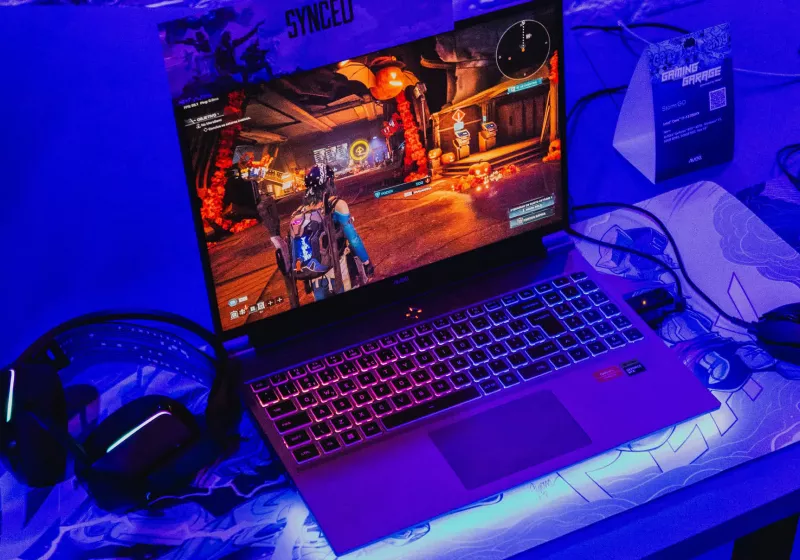




A new report from The Game Business, backed by GSD data shows that for last week's EU video game sales (October 19-26), Battlefield 6 has taken back the top spot after Pokémon Legends Z-A had it for its launch week. Legends Z-A drops to third, with EA Sports FC 26 keeping its top-three spot on both the units sold and revenue earned sales charts. After Pokémon Legends Z-A took the top spot for its launch week, with Battlefield 6 in second and EA Sports FC 26 in third, Battlefield 6 is back on top with EA Sports FC 26 in […]
Read full article at https://wccftech.com/battlefield-6-back-in-top-spot-eu-sales-charts-pokemon-legends-z-a-drops-to-third/

Apple’s iron grip on its supply chain means that sourcing parts necessary for the company’s newest iPhones will be next to impossible. However, for models like the iPhone 13, that journey is still a possibility, though the roads are filled with potholes. One brave Redditor found out the hard way, but he still managed to assemble an entire unit using components that were purchased from AliExpress. Still, he misses out on two non-crucial features, not to mention that a whole lot of luck was required to source one particular piece of the puzzle. Using non-genuine parts to assemble any iPhone, […]
Read full article at https://wccftech.com/how-an-iphone-13-was-assembled-with-parts-purchased-from-aliexpress-for-a-little-over-260/

There have been lots of rumors and leaks around the flagship Battlemage discrete GPU, and this one, too, indicates that Intel has prepared one. Engineering Graphics Driver INF File Reveals BMG-G31 to be Utilized in Three Pro and One Consumer GPU Variant, Hinting at Arc B770 There's no doubt that Intel has prepared the Xe2, Battlemage-based BMG-G31 chip, which has been spotted multiple times online. Last month, we saw the BMG-G31 in a Linux boot log, which revealed that the GPU will boast 16 GB of VRAM, and was likely about the Arc B770. Another leak today confirms the same, […]
Read full article at https://wccftech.com/intel-bmg-g31-rumoredly-used-in-four-gpu-variants-including-consumer-arc-b770/

The solution to improved cooling performance over time for AIOs is finally here, and it just requires a flux filter to ensure no residue goes inside the CPU block. Valkyrie Introduces Flux Filter on Radiator, Reducing Clogging of Microfins in CPU Cold Plate for Excellent Cooling Performance for Longer Duration AIOs have a problem of performance degradation, and in a few years, you will see almost all AIOs struggling to retain the same cooling performance. This is due to the manufacturing flux residue, which starts to break off and travel through the loop, eventually finding its way to the microfins […]
Read full article at https://wccftech.com/cooler-maker-valkyrie-brings-low-flux-radiator-manufacturing-and-flux-filter-to-stop-cooling-degradation-on-aios/

At the time of this writing, Heart Machine, the studio behind games like Hyper Light Drifter, Solar Ash, and more recently, Hyper Light Breaker, is less than two weeks from releasing its next game, Possessor(s). It's also reportedly just had its second wave of layoffs in less than a month. Spotted by Game Developer, after the studio confirmed a wave of layoffs at the beginning of October, along with halting further development on Hyper Light Breaker, more former developers from Heart Machine have taken to social media to confirm that they've been laid off in a second wave this month. […]
Read full article at https://wccftech.com/heart-machine-laid-off-a-bunch-more-people-weeks-ahead-of-possessors/

The fantasy action/adventure game Echoes of the End launched in August to mixed reviews. Our own David Carcasole rated it 5.7 out of 10 in Wccftech's official review: Echoes of the End has more bad than good to it, and the jank of its technical issues running throughout all aspects of the game bring down even its best elements, like its strong visual presentation, character-driven storytelling, and some fun platforming and puzzle challenges. The combat both overall fails to innovate and pass the standard bar for interesting, and as a whole package it's likely not worth your time when you […]
Read full article at https://wccftech.com/echoes-of-the-end-enhanced-edition-free-update-improves-combat-and-more/

Yellow paint to indicate the way to players is among the controversial features of modern video games, but no matter how heated the debate gets, some developers, like Final Fantasy VII Rebirth director Naoki Hamaguchi, feel there's definitely a need for it. Speaking with GamesRadar+, Hamaguchi-san acknowledged the debate among players while also saying that there's definitely a need for yellow paint in games in many ways. The difference, however, is in how it is implemented. "The need to guide players around from a gameplay perspective and show them what can be done, what they need to do, there are […]
Read full article at https://wccftech.com/there-is-a-need-for-yellow-paint-in-games-final-fantasy-vii-rebirth-director-says/

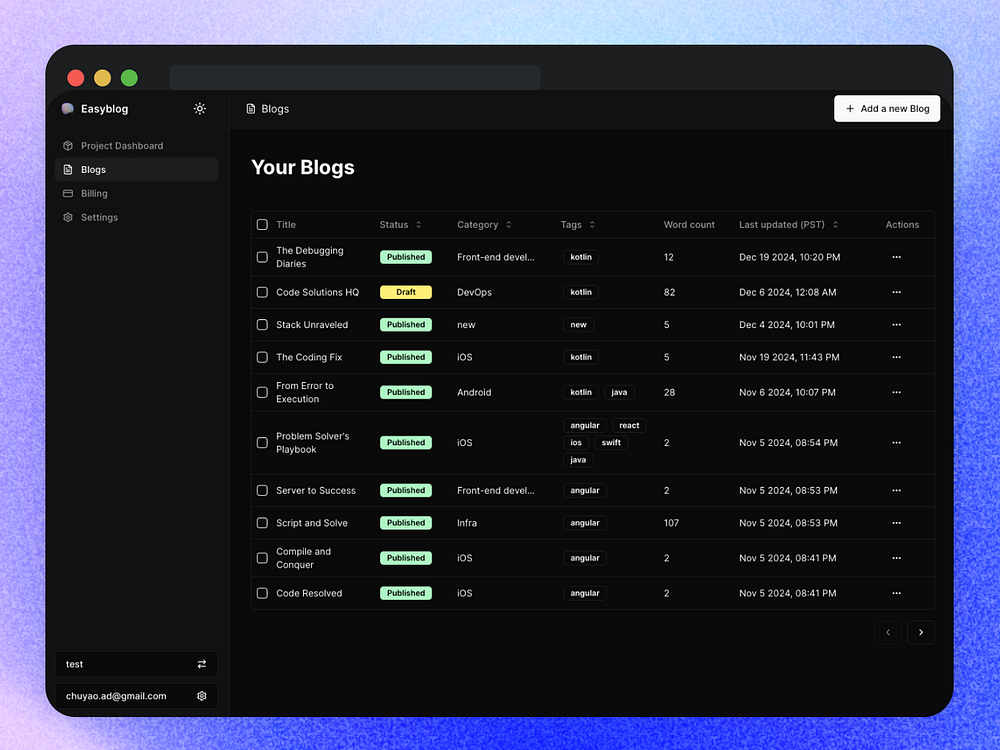
EasyBlog is a modern, minimalist blog CMS designed for Next.js applications. It offers instant setup, static site generation, distraction-free editing, and powerful SEO metadata tools—plus now access to integrated LLM‑based content generation. From rough topic prompts, EasyBlog can generate first‑draft blog posts complete with optimized headings, metadata, keywords, and tone. This AI assistance accelerates publishing while ensuring content is designed for both readers and search engines. Manage posts, tags, categories, and AI-generated drafts via a clean, centralized dashboard—no endless Markdown tweaking or manual optimization needed

Out of Office is a new GeekWire series spotlighting the passions and hobbies that members of the Seattle-area tech community pursue outside of work.
Growing up in India, food was a big part of the culture and something that Vivek Ladsariya was immersed in at home.
His family had a flour mill and would buy wheat grain to grind it into flour. He watched his mother and grandmother cook, and he ate and enjoyed their food.
“When I moved to the U.S., I missed it tremendously, and there was no real way to get some of that home food except to learn how to cook it,” Ladsariya said. “That’s when I started to really learn how to cook all of those things, because I needed that food to consume. So, it was very much born out of necessity.”
His taste and skill goes beyond making the dishes he loved as a boy. He makes pastas and Taiwanese food. He likes to slow cook meat or use his fancy pizza oven. During a recent potluck lunch he made scallion pancakes.
Ladsariya and his wife cook every meal at home, and with a 7-week-old daughter, he finds himself “wearing” her around the kitchen while he’s cooking, encouraging her to taste what he’s making.
During the pandemic while living in San Francisco, Ladsariya got the chance to work in two restaurants — Merchant Roots and Sushi Hakko — to stay busy while his wife was working her healthcare job.
“I think that’s when my cooking game really elevated,” he said. “Up until then I enjoyed cooking, but I’d create a mess. Then I got really organized in the kitchen. I became really efficient.”
With a friend, Ladsariya also put together a pop-up restaurant in which they spent two months researching and prepping a menu and cooking for guests over three days. The proceeds went to charity, and Ladsariya called it one of the favorite times of his life. It’s a process he plans to repeat in Seattle.
But Ladsariya, who enjoys hosting smaller dinners for startup founders, has no plans to leave his day job for a life in the kitchen.
“You’re standing on your feet the entire day and you are unbelievably exhausted,” he said. “I think it’d get old really quickly, and I’d lose the love for this.”

Most rewarding aspect of this pursuit: Ladsariya said that his day job is so high level and “in the brain” that it can sometimes can be abstract and lacking in the real-time feedback that he gets from working with his hands.
“I just fell in love with that aspect of cooking,” he said. “Everything you do is right there, you get the evidence of whether you did it well or not right away. The effort, the reward — that loop is just so instant and real and gratifying to work with your hands.”
And it’s not about feeding himself. For Ladsariya, the joy of cooking comes from feeding others.
“It’s the bringing people together, the community and all of that that food enables,” he said. “I’m able to provide a great meal and bring together people with something that scratches my creative desires.”
The lessons he brings back to work: Ladsariya finds a connection between how he thinks about cooking and how he thinks about startups.
“Cooking is really about high quality ingredients and not messing it up,” he said. “More often than not, bad food comes from bad ingredients. And I think the same is true for startups. As long as you have a good group of people, they can do something good. People are the ingredients of startup building.”
Furthermore, whether it’s a dish he’s never made or a startup idea that’s especially daunting, it’s best not to overthink things and just do it.
“It’s easy to be intimidated and say, ‘Oh, I have no idea how to do that or where to even start,'” Ladsariya said. “But with a little bit of research and work and just committing to it, you can do pretty incredible things.”
Read more Out of Office profiles.
Do you have an out-of-office hobby or interesting side hustle that you’re passionate about that would make for a fun profile on GeekWire? Drop us a line: tips@geekwire.com.

FAQ schema is no longer a quick SEO win.
In August 2023, Google reduced the visibility of FAQ rich results in search, restricting them to authoritative government and health websites.
The update effectively rendered the tactic useless for marketers who once relied on it to expand their SERP real estate.
Google also clarified that FAQPage markup should never be used for advertising or promotional purposes. It belongs only on genuine FAQ pages created to answer user questions.
For years, many SEOs – including myself – added structured FAQ data to marketing pages as a best practice. It’s time to rethink that habit.
Google’s shifting guidance isn’t new. Once-popular tactics, such as directory submissions, were also encouraged but later abandoned.
FAQ schema is simply the latest reminder that even trusted SEO strategies can turn obsolete overnight.
SEO often feels like running a race where the course keeps changing.
Just as marketers adapted to the loss of FAQ rich results, AI is reshaping how questions and answers surface in search.
The “add FAQs everywhere” era is over, but the Q&A format still matters – especially as AI-driven search begins to rely on structured, factual answers.
Large language models rely on clear, structured information to generate responses.
If your site isn’t providing direct, factual answers to user questions, you risk being invisible in AI-powered search results.
The challenge is knowing where FAQ content still fits – and how to structure it for both people and machines.
Add Q&A content to product, service, or category pages to:
Don’t apply FAQPage schema unless the page exists primarily to answer questions.
This keeps you compliant with Google’s rules while ensuring your content remains structured and readable for LLMs.
If you want to use FAQPage schema, create dedicated FAQ pages built around a single topic or high-intent theme.
Each page should present a complete list of questions and answers in full text.
This format helps LLMs map questions to authoritative responses and improves your chances of being cited in AI-driven search results.
Dig deeper: How to create a helpful FAQ page (with 7 examples)
Craft responses that are concise, factual, and written in natural language. Avoid filler or purely promotional copy.
AI models perform best with content that reflects genuine expertise – direct, clear, and rich with relevant entities, facts, and relationships that reinforce topical authority.
Google explicitly warns against using FAQ markup for advertising. Even without schema, avoid turning answers into sales pitches.
Focus on user value first, and let internal links or calls to action guide readers toward conversion naturally.
Only apply FAQPage markup when one definitive, non-user-generated answer exists.
If multiple perspectives are valid, use a QAPage or a long-form article with subheadings instead.
Validate your markup with Google’s Rich Results Test, track visibility in Search Console, and monitor how your FAQs appear in AI search tools like Gemini, Bing Copilot, and ChatGPT.
Even if FAQ schema no longer drives rich snippets, well-structured Q&A content remains key to helping AI systems retrieve your brand’s answers in response to user queries.
Dig deeper: How to create content that works for search and generative engines
Need a clear view of where FAQs belong, how they should be marked up, and when to leave the schema out entirely?
The right placement ensures your content complies with Google’s rules while also optimizing it for visibility in both traditional search and AI-driven results.
This framework outlines when to apply a schema, when to omit it, and how to strike a balance between user experience and technical accuracy.
| Use Case | Purpose | FAQ Placement | Schema Usage | Best for |
| Dedicated FAQ Hub | Provide authoritative answers on a single topic | Standalone FAQ page with all Q&As visible |  FAQPage schema FAQPage schema | Rich results (if eligible), LLM retrieval, evergreen reference |
| Marketing / Product Pages | Address buyer questions and objections | Embedded Q&A sections within product, service, or category pages |  No FAQPage schema (unless page is primarily a FAQ) No FAQPage schema (unless page is primarily a FAQ) | On-page conversions, LLM retrieval, featured snippet potential |
| Knowledge Base / Support Docs | Answer technical or procedural questions | Article or help doc with clearly defined Q&A |  FAQPage schema if page is entirely FAQ format FAQPage schema if page is entirely FAQ format | LLM retrieval, voice assistant queries, customer self-service |
| AI-First Content Design | Optimize for generative AI inclusion | Q&A woven into structured, topical content |  FAQPage schema if eligible and page meets guidelines FAQPage schema if eligible and page meets guidelines | Gemini, Bing Copilot, ChatGPT responses |
| Promotional Content | Drive sales or leads | Landing pages, campaign pages |  Never use FAQPage schema Never use FAQPage schema | Sales-driven CTAs, brand awareness |
 : Safe to use FAQPage schema under Google’s current rules.
: Safe to use FAQPage schema under Google’s current rules. : Use Q&A format for user value, but do not apply schema to avoid violating guidelines.
: Use Q&A format for user value, but do not apply schema to avoid violating guidelines.The most effective FAQ pages share two traits:
Below are examples of pages that use FAQPage schema correctly to enhance visibility – and others that could benefit from adding it in a compliant way.
These examples follow Google’s guidelines by ensuring that FAQs are user-facing, non-promotional, and structured around genuine questions and answers.
These examples demonstrate that a strong FAQ page is not solely about markup. It’s about building a genuine information resource.
Schema should enhance an already solid foundation, not compensate for content that exists primarily to promote a product or service.
Many FAQ pages already meet Google’s guidelines and provide genuine user value but miss out on additional visibility because they don’t use structured data.
The following examples show how adding FAQPage schema – where eligible – can enhance both search visibility and AI performance.
| Website and page | Current state (No structured data) | Potential with FAQPage schema |
| American College of Surgeons Surgery FAQ | Clear, patient-focused Q&A; authoritative health content | Eligible for rich results under Google’s health guidelines; answers could appear directly in search and AI summaries for medical queries. |
| California Student Aid Commission FAQ | Single-answer financial aid Q&As; state government site | Eligible for government rich results; schema could help surface answers for student financial aid questions in SERPs and LLMs. |
| CMS Medicare FAQ | Government-run health FAQ; authoritative source | Fully eligible for health/government FAQ rich results; high potential for PAA inclusion and AI search visibility. |
| Medicaid.gov FAQ | Authoritative government health FAQs | Eligible for rich results; could increase visibility for Medicaid-related queries and improve AI answer sourcing. |
The SEO strategies that worked yesterday may be restricted or retired tomorrow – and FAQ schema is only the latest example.
The goal now is to adapt with intention: know when to apply structure, when to simplify, and when to shift your approach entirely.
By creating FAQ content that serves users first, aligns with Google’s guidelines, and remains structured enough for both traditional search and AI-driven systems, you’ll stay visible no matter how the landscape evolves.
Remember to:
SEO success comes from timing, precision, and adaptability – knowing when to build momentum, when to pause, and when to change direction entirely.

Your website is live – now it’s time to measure what matters.
To sustain traffic growth, you need to track performance, collect meaningful data, and make informed, data-driven decisions that shape your site’s success.
Here are the key areas to monitor and the tools that can automate much of the work.
When a page loads slowly, conversions drop, engagement falls, and the user experience suffers.
Visitors expect pages to respond instantly, whether they’re comparing products or just beginning their research journey on your blog.
Monitor site speed with PageSpeed Insights, but that only scratches the surface of what you should be tracking.
To keep your site running smoothly, focus on a few other key areas:
Website performance covers a wide range of technical SEO best practices, and manual checks rarely make the best use of your time.
Automate site audits and set up alerts to catch issues, such as server errors or extended downtime, before they affect users or rankings.
Tools that make life easier:
Dig deeper: Core Web Vitals: How to measure and improve your site’s UX
A key goal of SEO is to enhance visibility through improved keyword rankings.
If your site – or a client’s – isn’t appearing on Google, Bing, ChatGPT, or other platforms, you’re missing out on valuable traffic and potential revenue.
Manual tracking isn’t realistic, so rely on industry tools to monitor:
To understand whether your efforts are helping or hurting, go beyond surface-level rankings and dig into deeper insights, such as:
Keyword data helps you maintain focus on optimization efforts that have a return on investment. To monitor this data, use tools to search for the keywords that you’re trying to optimize for.
Tools that make life easier:
Dig deeper: Keyword research for SEO: The ultimate guide
Websites evolve constantly – content updates, design tweaks, and technical fixes occur daily.
On enterprise sites or those managed by multiple teams, this creates plenty of room for error.
While many of these changes overlap with performance monitoring, it’s better to track more than risk missing something important.
Use monitoring tools to track:
Proactive monitoring makes it easier to connect cause and effect. When rankings shift, you’ll have data showing what changed and when. For example, a content refresh on a service page might coincide with a keyword’s jump from position 23 to 1 – a clear signal of what worked.
As a site scales and more stakeholders contribute, automation becomes essential. Smaller teams may still manage manual tracking, but for most, monitoring tools are indispensable.
Tools that make life easier:
Website, blog, and SEO channels now deliver the strongest ROI for B2B brands, according to HubSpot’s State of Marketing Report.
Clients want to justify their marketing budgets and see that SEO efforts are producing a return on investment.
Use lead tracking tools to identify B2B website visitors and pinpoint:
Lead tracking shouldn’t stop when visitors arrive. Monitoring behavior shows which pages they visit, where they exit, and what happens during form submissions.
For example, analyzing form data can uncover broken fields or incomplete submissions that cost potential leads.
Knowing where prospects come from, how they convert, and what happens when they don’t provides insights that manual tracking can’t deliver.
Tools that make this possible include:
Monitoring your website’s traffic and analytics is the heartbeat of your marketing performance. You need to know:
Analytics can also segment audiences, track behavior metrics, and set conversion goals.
Tools like Google Analytics can display revenue per visitor and surface crawl errors or other site issues.
SEOs need to understand how visitors find a site, which content or keywords drive traffic, and how those efforts connect to measurable results.
Tools that make life easier:
Dig deeper: How to measure organic traffic in GA4
Backlinks have long been tied to rankings and remain one of the strongest signals a site can earn. Track key factors such as:
Brand mentions have become even more significant with the rise of generative engine optimization (GEO), helping LLMs associate content and context with your brand.
Mentions across communities, social platforms, and online content all play a role.
Monitoring should also cover:
Both backlinks and brand mentions play a role in building authority and driving visibility – and, in some cases, referral traffic.
To sustain growth, consistently track both.
Tools that make life easier:
Domain and SSL certificate expiration directly affect a site’s trust and uptime. Monitor the following:
Though easy to overlook, these expirations can disrupt sales, erode trust, and take your site offline.
Use monitoring tools to send alerts and protect both your uptime and the credibility you’ve built with visitors.
Tools that make life easier:
Tracking and monitoring your site’s metrics after launch provides the long-term data needed to make meaningful improvements.
Use the tools and guides above to build a system that keeps your website healthy, competitive, and growing – catching issues early, improving performance, and driving sustainable SEO results.

[Editor’s Note: This guest post is by Marcelo Calbucci, a longtime Seattle tech and startup community leader.]
This month, I ran a survey with early-stage founders from Seattle-based Foundations about their use of AI tools and agents. There were some surprises in the data — and not in the direction you’d expect — and trends that are worth talking about.
The sample size represents 22 startups with one-to-five software engineers each, for a total of 42 people. What makes this cohort valuable to understand is that they are AI-native startups, started during a time that AI can code. This gives us a glimpse into the future of tech companies.
The first question I asked on the survey was about the percentage of production code being written by AI. I wrote this question explicitly to exclude unit tests, scripts, documents, and other artifacts that are not related to the core value proposition of a business. If you know one thing about AI coding, it is that it generates large volumes of unit tests, readme files, and scripts. None of that relates to the code that delivers the value to the customer.
Here’s the surprising fact: out of the 22, four startups (18%) said AI is writing 100% of their code. That’s mind-blowing! It doesn’t mean these folks are not reviewing and re-prompting the AI to refine the code. However, it means they aren’t typing code in an IDE. There are 11 startups (50%) where AI is writing 80-99% of the code. Adding the four where AI writes everything, 68% of startups have AI write over 80% of the production code. On the other side of the spectrum, three startups (13.6%) said that AI is writing less than 50% of their code.
From the news that Cursor gets in the press, you’d think usage for this cohort is close to 100%. In our sample, out of 42 programmers from 22 unique startups, “only” 23 of them (54.7%) use Cursor. On average, Cursor programmers spent $113.63/person in September. The most popular tool, though, is Claude Code, with 64.3% of programmers using it and spending $167.41/person in September. Claude is the preferred tool for startups, with 16 of the 22 (72.7%) using it.
After Claude and Cursor, there is a big cliff, with OpenAI Codex coming in a distant third place with seven of the startups using it, representing 12 of the 42 programmers. On average, expenses with OpenAI Codex came in at $48.49/person in September. The fourth and fifth places were GitHub Copilot and Gemini CLI by Google. They had 9.52% and 4.76% of programmers using it, respectively.
On average, each software engineer spent $182.55 in the top five AI tools mentioned above, with some startups spending over $400/person.
Founders also mentioned they use a variety of tools to create production code, including Lovable, Devplan, Mentat, Factory.ai, Jetbrains Junie, Warp, and Figma.
When asked about what’s preventing more use of AI for coding, the number one complaint was the quality of the code. Another hindrance to faster adoption is the learning curve to get the agent to do what you want.
In terms of frustration, this group raises three key issues. First, the quality of the output, requiring considerable rework. Second, a mismatch between expectation and reality based on what everyone is hearing. Lastly, the most common frustration — and I definitely empathize with this one — is managing the context and dealing with large code bases.
In the survey, I asked about their intention to continue using AI tools and agents to assist with product development. The survey asked the founders if they intended to add, remove, increase, or decrease usage of each tool. The biggest winner, by far, was Codex, with nine startups (40.9%) saying they aren’t using it yet, but plan to use it in Q4. Once I normalize the data to account for what the expectations are for Q4, Claude will maintain its leadership, but Codex will match in the number of startups. Cursor and GitHub Copilot will trend slightly lower, each with one startup saying they will stop using it. Finally, the Gemini CLI might see a small increase in adoption, with three startups claiming to give it a try in Q4.
Contrary to the many other aspects of software engineering like choosing a cloud provider, a language, or database, AI tools and agents are not a zero-sum market. On this survey, 68.2% of startups used more than one AI tool to assist in production code development. Based on their stated intention, that number will grow to 86.4% in Q4.





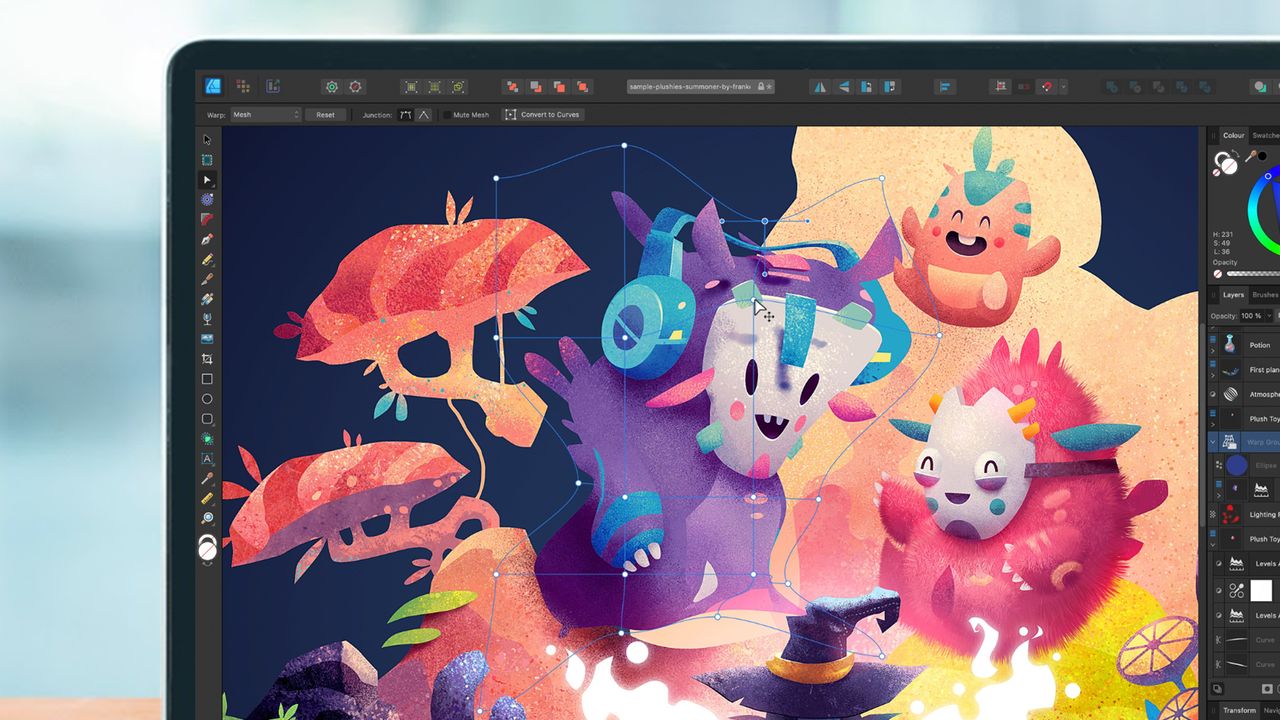














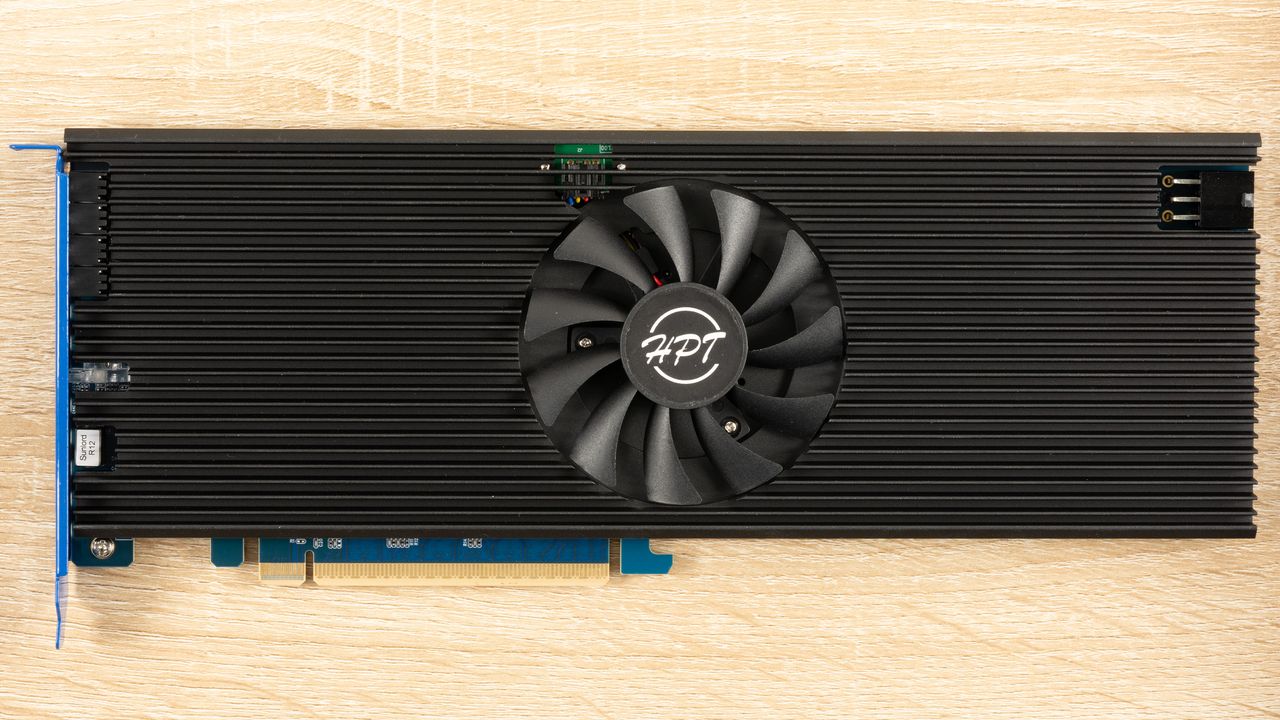
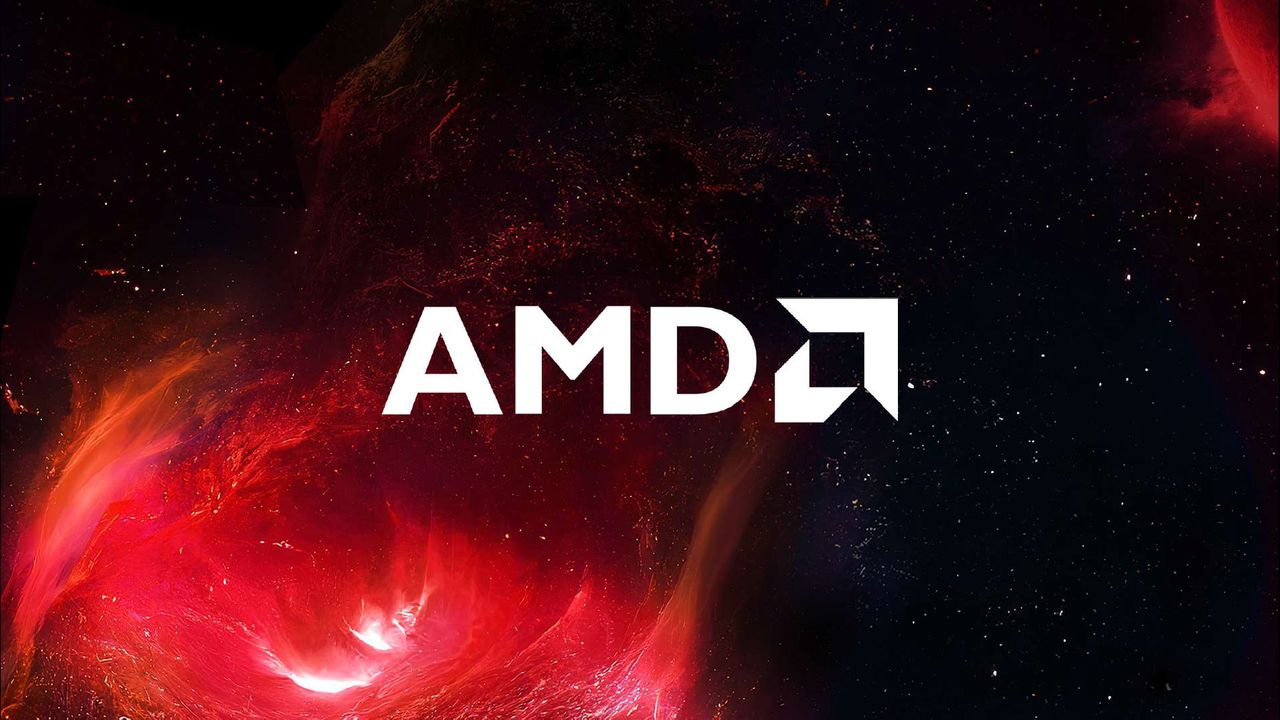



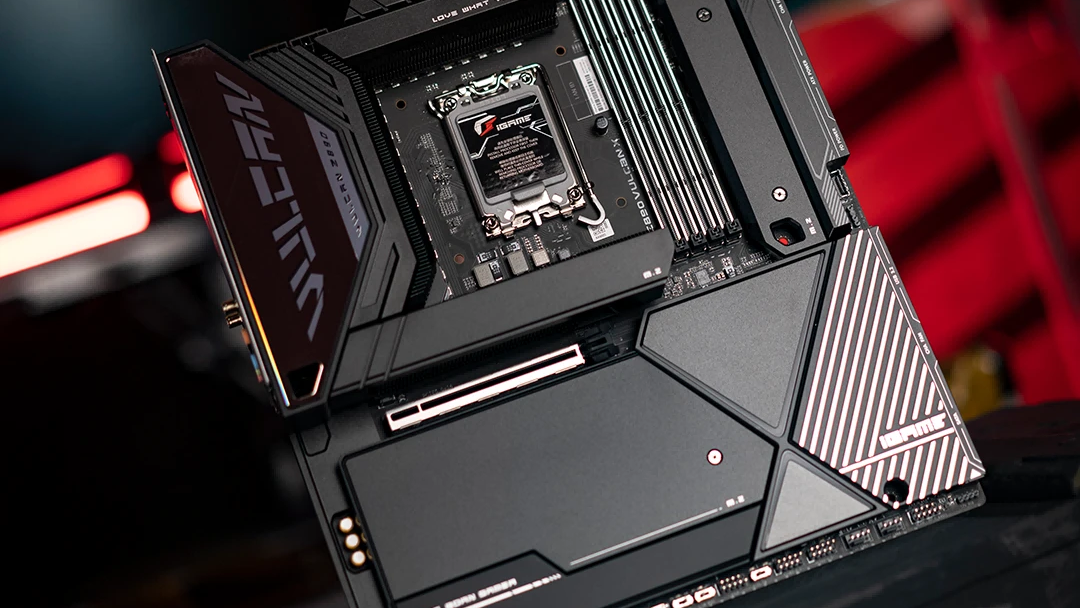
The post EnduroSat raises $104M to advance small satellite production appeared first on StartupHub.ai.
Spacetech company EnduroSat secured $104 million to expand its manufacturing of advanced small satellites for constellation customers.
The post EnduroSat raises $104M to advance small satellite production appeared first on StartupHub.ai.
The post Rilevera raises $3M to advance automated detection engineering appeared first on StartupHub.ai.
Rilevera raised $3 million to expand its AI-powered platform that automates the creation, testing, and management of cyberthreat detection rules.
The post Rilevera raises $3M to advance automated detection engineering appeared first on StartupHub.ai.
The post AI’s Hinge Moment: From Legal Logic to Human Fulfillment appeared first on StartupHub.ai.
The year 2025 has already proven to be a pivotal period for artificial intelligence, marked by significant leaps and profound discussions on its implications. In the “No Priors” episode titled “The Best of 2025 (So Far),” hosts Sarah Guo and Elad Gil curate a series of illuminating excerpts from their conversations with leading founders and […]
The post AI’s Hinge Moment: From Legal Logic to Human Fulfillment appeared first on StartupHub.ai.
The post Beyond the Magnificent Seven: Unearthing AI’s Hidden Investment Gems appeared first on StartupHub.ai.
The current fervor around artificial intelligence has led to unprecedented market concentration, particularly within the “Magnificent 7” tech giants. Yet, as Daniel Kim, Portfolio Manager of the Saturna International Fund, recently articulated on CNBC’s Worldwide Exchange, the most compelling opportunities in AI may lie precisely where fewer eyes are looking. Kim, speaking with interviewer Frank […]
The post Beyond the Magnificent Seven: Unearthing AI’s Hidden Investment Gems appeared first on StartupHub.ai.
The post Amazon Q3 earnings show its AI engine is finally firing appeared first on StartupHub.ai.
Amazon's massive bet on AI is paying off, with its AWS cloud division re-accelerating at a pace not seen since 2022.
The post Amazon Q3 earnings show its AI engine is finally firing appeared first on StartupHub.ai.
AMD confirms that its older RDNA 1 and RDNA 2 GPUs are now in “maintenance mode” In a new statement to PC Games Hardware, AMD has confirmed that its older RX 6000 and RX 5000 series GPUs will no longer be receiving “game optimisations”. AMD’s RDNA and RDNA 2 graphics cards are now in “maintenance […]
The post AMD issues statement on axed RDNA/RDNA 2 “game optimisations” appeared first on OC3D.





Despite our acclimatization to the forward march of technology, many of us remain vaguely creeped out by the concept of humanoid robots.
Sure, it’d be wonderful to have autonomous machines adept at cleaning the house, harvesting and preparing food, running warehouses and performing a host of generally thankless and burdensome jobs. But must they look like us too?
For many startups, the answer to this question is “no.”
While humanoid robots startups like Figure and Apptronik have drawn headlines in recent months for big funding deals and flashy prototypes, an array of companies working on less-anthropomorphic designs have also secured considerable investment. These include four-legged models, AI-enabled appendages and skilled swimmers.
To illustrate, we used Crunchbase data to assemble a sample list of 26 companies in the non-humanoid robot startup sector that have raised rounds in the past few quarters. It’s a varied lot, with focus areas ranging from farming to pool cleaning to massaging.
The list also features a mix of consumer-facing and industrial use cases, and we figured we’d start by highlighting the first category. It’s not that these bots are necessarily more useful, but rather that being out in public does make it a bit more fun to contemplate.
If recently funded startups have their way, some of the bots we see in action could be taking on more of the everyday drudgery currently shouldered by humans.
Cleaning is one of the big areas. China-based Narwal Robotics, which closed a $100 million Series E in April, makes robot vacuums and mops and touts its “AI adaptive hot water mop washing,” LiDAR navigation and embedded dirt sensor. San Francisco-based The Bot Co., meanwhile, has raised $300 million since last year to iterate its vision of robots for household chores but has not yet released a prototype.
Pool-cleaning, an area already long-dominated by autonomous machines, is also set for an AI era upgrade, with two China-based companies pulling in rounds of $140 million each this year. Xingmai Innovation, which closed its round in September, markets its $3,000 Beatbot model as the “world’s first AI-powered 5-in-1 robotic pool cleaner.” Rival Aiper charges $1,700 for its Scuba Max Pro, which features smart pool mapping and a dedicated app.
And for those who need some pampering after a long day of not cleaning the pool, massage bot startup Aescape offers another spending option. The New York-based company secured $83 million in March to expand its customizable, “fully autonomous, AI-driven massage” offering.
While we may enjoy gawking at the still-unusual sight of a bot in public making a latte or delivering a restaurant meal, the bulk of funded companies in the non-humanoid bot space are working on models that will do their work behind the scenes.
Surgical robots have long been one of the more heavily funded areas, and this holds true for recent investment as well. The largest fundraiser on our list, U.K.-based CMR Surgical, developer of a soft tissue surgical robot, has secured $1.1 billion in known funding to date, including a $200 million April financing. Israel-based ForSight Robotics, developer of a robotic platform for ophthalmic surgery, is also scaling up, closing a $125 million Series B in June.
On the industrial front, Swiss startup Anybotics has raised more than $150 million to develop a four-legged bot optimized for inspections, capable of climbing stairs and avoiding obstacles.
And Flexiv, which closed a $100 million Series C this summer, is working on appendage-like, AI-enabled robots that can be adapted for multiple industries.
Agtech also emerged as a favored area for investment. Ecorobotix, based in Switzerland, has raised a couple hundred million for precision crop spraying, while Seattle-based Carbon Robotix is working on technology to kill weeds with lasers.
Of all the above-mentioned startups, none appear to be working on anything that could be remotely confused for a human, even from a distance. This seems logical, considering that so many jobs people have historically done don’t seem ideally suited to our particular form.
If all goes well with these non-humanoid robot startups, perhaps it would leave us humans free to spend more time doing the activities that do seem optimally suited to our form. Sitting on the couch would be high on this author’s list, though I’m sure others could find many more productive pursuits.
Illustration: Dom Guzman



Last year's Silent Hill 2 remake is finally coming to Xbox Series X and Xbox Series S, as this new version of the game has been rated by the ESRB ahead of its official announcement. As the yet-to-be officially announced new version of the survival horror game developed by Bloober Team, which returned the series to the spotlight after years of absence, will be identical to the PC and PlayStation 5 releases, the Mature 17+ rating and its summary don't reveal anything that wasn't already known about the game. Still, it's great to know that more players will soon be […]
Read full article at https://wccftech.com/silent-hill-2-remake-xbox-series-x/

NVIDIA gimped the RTX 5070’s capabilities by equipping it with just 12GB of GDDR7 VRAM, but that does not make the GPU any less capable, especially when running games at 1080p or 1440p resolutions. When talking particularly about the MSI Shadow 2X, it is remarkable how the company managed to successfully shrink the graphics card’s physical size to make it compatible for smaller cases, and if your chassis is also space-constrained but you still want an excellent gaming experience, this is the best time for you to spend $499.99. The Shadow 2X RTX 5070 does not go light on cooling […]
Read full article at https://wccftech.com/grab-msi-shadow-2x-rtx-5070-graphics-card-on-amazon-for-499-99/

Samsung's upcoming Galaxy Book6 Pro featuring the Intel Core Ultra Series 3 "Panther Lake" CPU has leaked out. Samsung Preps Next-Gen Galaxy Book6 Pro Laptops With Intel's Core Ultra Series 3 "Panther Lake" CPUs Laptop OEMs are now preparing their next-gen offerings based on Intel's upcoming Core Ultra Series 3 "Panther Lake" CPUs. These next-gen laptops will offer faster performance, advanced features, & higher efficiency. We will be looking at a range of new designs from laptop vendors, and Samsung is one of them, which is preparing its new Galaxy Book6 series. The Samsung Galaxy Book6 Pro laptop has leaked […]
Read full article at https://wccftech.com/samsung-galaxy-book6-pro-intel-core-ultra-series-3-panther-lake-cpu-leak/

According to leaker leaks_infinite, Halo: Campaign Evolved is just the beginning of a series of remakes already in the works. Allegedly, the campaigns of the second and third game are also being remade and will support optional sprint, just like the remake of the first installment. The reason for all these games to cut multiplayer from their respective remakes is that Halo Studios does not want to split the fan base across several multiplayer experiences. Because of this, Halo 7, which is also reportedly in development, will be the only one to offer multiplayer. The leaker wrote: Halo Studios wants […]
Read full article at https://wccftech.com/halo-2-3-remakes-in-the-works-halo-7-multiplayer-experience/







OpenAI's made ChatGPT Go available in 98 countries, including 8 in Europe and 5 in Latin America.
The post Discounted ChatGPT Go Is Now Available In 98 Countries appeared first on Search Engine Journal.



The web editor for Mac with next-gen intelligence
AI Agents and MCP to schedule social posts to 20+ channels
High-perf, secure local proxy for AI coding assistants
Open any folder on macOS instantly
Minimal weekly planner
AI Gymbro that fixes your form, and plans your next move.
Email vibing in your Gmail / Outlook
Blur Sensitive Info for Demos & Sharing
Free creative software for vector, pixel, and print.=
Monitor Your Claude AI Usage Right from Your Mac Menu Bar
AI-powered patent search for everyone
AI generated story worlds that unfold in real time
Hop in the booth and dress up with AI to show your costume
Visual Suite to edit vids, emails, sites + docs in a canvas
Automate anything in the browser
Monitor your apis and websites on menubar

Independent studio Digital Confectioners has unveiled Triarchy, an upcoming open world co-op (up to three players) action RPG. Like most games in the genre, it will focus on boss fights, but it also supports sailing. That makes sense after learning that the setting is a 'drowned world'. Players will hunt deadly bosses across the Isles, and the developers promise that each boss fight will feature unique attack patterns, multiple phases, and arena hazards that require precise timing, positioning, and teamwork to overcome. Upon defeating a boss, you'll get rewards such as unique upgrade materials and boss-exclusive gear. Moreover, Triarchy not […]
Read full article at https://wccftech.com/triarchy-open-world-coop-action-rpg-boss-fights-sailing-2026/

Samsung has secured a crucial 'HBM4 supply' deal with NVIDIA, as both firms announce their collaboration on cutting-edge technologies to drive the AI hype. Samsung's HBM4 Modules Manage to Surpass JEDEC Processing Speed Standards, Leading to a Pivotal Adoption By NVIDIA The Korean giant has achieved a massive feat with its upcoming HBM4 technology, as the firm becomes one of the first manufacturers to secure a supply for NVIDIA. In an announcement around the recent Samsung-NVIDIA deal, it is revealed that HBM4 is going to be a crucial part of the partnership, and more importantly, the Korean giant has verified […]
Read full article at https://wccftech.com/samsung-strikes-a-crucial-deal-with-nvidia-for-next-gen-hbm4-ai-memory/

Samsung and NVIDIA are now significantly enhancing their 25-year collaborative relationship by undertaking a project to build a full-fledged AI factory, equipped with over 50,000 NVIDIA GPUs. In addition, the two behemoths continue to collaborate with each other in diverse spheres, including HBM4, EDA tools, and AI-RAN. Samsung to deploy 50,000 NVIDIA GPUs within its AI Megafactory Samsung has partnered with NVIDIA to deploy 50,000 of NVIDIA's GPUs: "By deploying more than 50,000 NVIDIA GPU’s, AI will be embedded throughout Samsung's entire manufacturing flow, accelerating development and production of next-generation semiconductors, mobile devices and robotics." Samsung intends to use this […]
Read full article at https://wccftech.com/samsung-and-nvidia-to-build-a-50000-gpu-ai-factory-collaborating-on-ai-ran-and-eda-tools/


The post Amazon’s Cloud and AI Crossroads: Navigating Intense Competition and Infrastructure Demands appeared first on StartupHub.ai.
The burgeoning demands of generative AI are fundamentally reshaping the competitive landscape of cloud computing, compelling even market leaders like Amazon to critically assess their strategic investments. CNBC’s MacKenzie Sigalos, reporting on Amazon’s third-quarter earnings, underscored that the company’s cloud momentum and substantial AI infrastructure spending are now under intense scrutiny, with investors eager to […]
The post Amazon’s Cloud and AI Crossroads: Navigating Intense Competition and Infrastructure Demands appeared first on StartupHub.ai.



The post Salesforce Agentic Commerce: AI Redefines Retail appeared first on StartupHub.ai.
Salesforce Agentic Commerce introduces AI-powered tools and strategic partnerships to redefine retail, enhancing discovery, personalization, and operational efficiency.
The post Salesforce Agentic Commerce: AI Redefines Retail appeared first on StartupHub.ai.

OpenAI has introduced Aardvark, a GPT-5-powered autonomous security researcher agent now available in private beta.
Designed to emulate how human experts identify and resolve software vulnerabilities, Aardvark offers a multi-stage, LLM-driven approach for continuous, 24/7/365 code analysis, exploit validation, and patch generation!
Positioned as a scalable defense tool for modern software development environments, Aardvark is being tested across internal and external codebases.
OpenAI reports high recall and real-world effectiveness in identifying known and synthetic vulnerabilities, with early deployments surfacing previously undetected security issues.
Aardvark comes on the heels of OpenAI’s release of the gpt-oss-safeguard models yesterday, extending the company’s recent emphasis on agentic and policy-aligned systems.
Aardvark operates as an agentic system that continuously analyzes source code repositories. Unlike conventional tools that rely on fuzzing or software composition analysis, Aardvark leverages LLM reasoning and tool-use capabilities to interpret code behavior and identify vulnerabilities.
It simulates a security researcher’s workflow by reading code, conducting semantic analysis, writing and executing test cases, and using diagnostic tools.
Its process follows a structured multi-stage pipeline:
Threat Modeling – Aardvark initiates its analysis by ingesting an entire code repository to generate a threat model. This model reflects the inferred security objectives and architectural design of the software.
Commit-Level Scanning – As code changes are committed, Aardvark compares diffs against the repository’s threat model to detect potential vulnerabilities. It also performs historical scans when a repository is first connected.
Validation Sandbox – Detected vulnerabilities are tested in an isolated environment to confirm exploitability. This reduces false positives and enhances report accuracy.
Automated Patching – The system integrates with OpenAI Codex to generate patches. These proposed fixes are then reviewed and submitted via pull requests for developer approval.
Aardvark integrates with GitHub, Codex, and common development pipelines to provide continuous, non-intrusive security scanning. All insights are intended to be human-auditable, with clear annotations and reproducibility.
According to OpenAI, Aardvark has been operational for several months on internal codebases and with select alpha partners.
In benchmark testing on “golden” repositories—where known and synthetic vulnerabilities were seeded—Aardvark identified 92% of total issues.
OpenAI emphasizes that its accuracy and low false positive rate are key differentiators.
The agent has also been deployed on open-source projects. To date, it has discovered multiple critical issues, including ten vulnerabilities that were assigned CVE identifiers.
OpenAI states that all findings were responsibly disclosed under its recently updated coordinated disclosure policy, which favors collaboration over rigid timelines.
In practice, Aardvark has surfaced complex bugs beyond traditional security flaws, including logic errors, incomplete fixes, and privacy risks. This suggests broader utility beyond security-specific contexts.
During the private beta, Aardvark is only available to organizations using GitHub Cloud (github.com). OpenAI invites beta testers to sign up here online by filling out a web form. Participation requirements include:
Integration with GitHub Cloud
Commitment to interact with Aardvark and provide qualitative feedback
Agreement to beta-specific terms and privacy policies
OpenAI confirmed that code submitted to Aardvark during the beta will not be used to train its models.
The company is also offering pro bono vulnerability scanning for selected non-commercial open-source repositories, citing its intent to contribute to the health of the software supply chain.
The launch of Aardvark signals OpenAI’s broader movement into agentic AI systems with domain-specific capabilities.
While OpenAI is best known for its general-purpose models (e.g., GPT-4 and GPT-5), Aardvark is part of a growing trend of specialized AI agents designed to operate semi-autonomously within real-world environments. In fact, it joins two other active OpenAI agents now:
ChatGPT agent, unveiled back in July 2025, which controls a virtual computer and web browser and can create and edit common productivity files
Codex — previously the name of OpenAI's open source coding model, which it took and re-used as the name of its new GPT-5 variant-powered AI coding agent unveiled back in May 2025
But a security-focused agent makes a lot of sense, especially as demands on security teams grow.
In 2024 alone, over 40,000 Common Vulnerabilities and Exposures (CVEs) were reported, and OpenAI’s internal data suggests that 1.2% of all code commits introduce bugs.
Aardvark’s positioning as a “defender-first” AI aligns with a market need for proactive security tools that integrate tightly with developer workflows rather than operate as post-hoc scanning layers.
OpenAI’s coordinated disclosure policy updates further reinforce its commitment to sustainable collaboration with developers and the open-source community, rather than emphasizing adversarial vulnerability reporting.
While yesterday's release of oss-safeguard uses chain-of-thought reasoning to apply safety policies during inference, Aardvark applies similar LLM reasoning to secure evolving codebases.
Together, these tools signal OpenAI’s shift from static tooling toward flexible, continuously adaptive systems — one focused on content moderation, the other on proactive vulnerability detection and automated patching within real-world software development environments.
Aardvark represents OpenAI’s entry into automated security research through agentic AI. By combining GPT-5’s language understanding with Codex-driven patching and validation sandboxes, Aardvark offers an integrated solution for modern software teams facing increasing security complexity.
While currently in limited beta, the early performance indicators suggest potential for broader adoption. If proven effective at scale, Aardvark could contribute to a shift in how organizations embed security into continuous development environments.
For security leaders tasked with managing incident response, threat detection, and day-to-day protections—particularly those operating with limited team capacity—Aardvark may serve as a force multiplier. Its autonomous validation pipeline and human-auditable patch proposals could streamline triage and reduce alert fatigue, enabling smaller security teams to focus on strategic incidents rather than manual scanning and follow-up.
AI engineers responsible for integrating models into live products may benefit from Aardvark’s ability to surface bugs that arise from subtle logic flaws or incomplete fixes, particularly in fast-moving development cycles. Because Aardvark monitors commit-level changes and tracks them against threat models, it may help prevent vulnerabilities introduced during rapid iteration, without slowing delivery timelines.
For teams orchestrating AI across distributed environments, Aardvark’s sandbox validation and continuous feedback loops could align well with CI/CD-style pipelines for ML systems. Its ability to plug into GitHub workflows positions it as a compatible addition to modern AI operations stacks, especially those aiming to integrate robust security checks into automation pipelines without additional overhead.
And for data infrastructure teams maintaining critical pipelines and tooling, Aardvark’s LLM-driven inspection capabilities could offer an added layer of resilience. Vulnerabilities in data orchestration layers often go unnoticed until exploited; Aardvark’s ongoing code review process may surface issues earlier in the development lifecycle, helping data engineers maintain both system integrity and uptime.
In practice, Aardvark represents a shift in how security expertise might be operationalized—not just as a defensive perimeter, but as a persistent, context-aware participant in the software lifecycle. Its design suggests a model where defenders are no longer bottlenecked by scale, but augmented by intelligent agents working alongside them.

Researchers at Meta FAIR and the University of Edinburgh have developed a new technique that can predict the correctness of a large language model's (LLM) reasoning and even intervene to fix its mistakes. Called Circuit-based Reasoning Verification (CRV), the method looks inside an LLM to monitor its internal “reasoning circuits” and detect signs of computational errors as the model solves a problem.
Their findings show that CRV can detect reasoning errors in LLMs with high accuracy by building and observing a computational graph from the model's internal activations. In a key breakthrough, the researchers also demonstrated they can use this deep insight to apply targeted interventions that correct a model’s faulty reasoning on the fly.
The technique could help solve one of the great challenges of AI: Ensuring a model’s reasoning is faithful and correct. This could be a critical step toward building more trustworthy AI applications for the enterprise, where reliability is paramount.
Chain-of-thought (CoT) reasoning has been a powerful method for boosting the performance of LLMs on complex tasks and has been one of the key ingredients in the success of reasoning models such as the OpenAI o-series and DeepSeek-R1.
However, despite the success of CoT, it is not fully reliable. The reasoning process itself is often flawed, and several studies have shown that the CoT tokens an LLM generates is not always a faithful representation of its internal reasoning process.
Current remedies for verifying CoT fall into two main categories. “Black-box” approaches analyze the final generated token or the confidence scores of different token options. “Gray-box” approaches go a step further, looking at the model's internal state by using simple probes on its raw neural activations.
But while these methods can detect that a model’s internal state is correlated with an error, they can't explain why the underlying computation failed. For real-world applications where understanding the root cause of a failure is crucial, this is a significant gap.
CRV is based on the idea that models perform tasks using specialized subgraphs, or "circuits," of neurons that function like latent algorithms. So if the model’s reasoning fails, it is caused by a flaw in the execution of one of these algorithms. This means that by inspecting the underlying computational process, we can diagnose the cause of the flaw, similar to how developers examine execution traces to debug traditional software.
To make this possible, the researchers first make the target LLM interpretable. They replace the standard dense layers of the transformer blocks with trained "transcoders." A transcoder is a specialized deep learning component that forces the model to represent its intermediate computations not as a dense, unreadable vector of numbers, but as a sparse and meaningful set of features. Transcoders are similar to the sparse autoencoders (SAE) used in mechanistic interpretability research with the difference that they also preserve the functionality of the network they emulate. This modification effectively installs a diagnostic port into the model, allowing researchers to observe its internal workings.
With this interpretable model in place, the CRV process unfolds in a few steps. For each reasoning step the model takes, CRV constructs an "attribution graph" that maps the causal flow of information between the interpretable features of the transcoder and the tokens it is processing. From this graph, it extracts a "structural fingerprint" that contains a set of features describing the graph's properties. Finally, a “diagnostic classifier” model is trained on these fingerprints to predict whether the reasoning step is correct or not.
At inference time, the classifier monitors the activations of the model and provides feedback on whether the model’s reasoning trace is on the right track.
The researchers tested their method on a Llama 3.1 8B Instruct model modified with the transcoders, evaluating it on a mix of synthetic (Boolean and Arithmetic) and real-world (GSM8K math problems) datasets. They compared CRV against a comprehensive suite of black-box and gray-box baselines.
The results provide strong empirical support for the central hypothesis: the structural signatures in a reasoning step's computational trace contain a verifiable signal of its correctness. CRV consistently outperformed all baseline methods across every dataset and metric, demonstrating that a deep, structural view of the model's computation is more powerful than surface-level analysis.
Interestingly, the analysis revealed that the signatures of error are highly domain-specific. This means failures in different reasoning tasks (formal logic versus arithmetic calculation) manifest as distinct computational patterns. A classifier trained to detect errors in one domain does not transfer well to another, highlighting that different types of reasoning rely on different internal circuits. In practice, this means that you might need to train a separate classifier for each task (though the transcoder remains unchanged).
The most significant finding, however, is that these error signatures are not just correlational but causal. Because CRV provides a transparent view of the computation, a predicted failure can be traced back to a specific component. In one case study, the model made an order-of-operations error. CRV flagged the step and identified that a "multiplication" feature was firing prematurely. The researchers intervened by manually suppressing that single feature, and the model immediately corrected its path and solved the problem correctly.
This work represents a step toward a more rigorous science of AI interpretability and control. As the paper concludes, “these findings establish CRV as a proof-of-concept for mechanistic analysis, showing that shifting from opaque activations to interpretable computational structure enables a causal understanding of how and why LLMs fail to reason correctly.” To support further research, the team plans to release its datasets and trained transcoders to the public.
While CRV is a research proof-of-concept, its results hint at a significant future for AI development. AI models learn internal algorithms, or "circuits," for different tasks. But because these models are opaque, we can't debug them like standard computer programs by tracing bugs to specific steps in the computation. Attribution graphs are the closest thing we have to an execution trace, showing how an output is derived from intermediate steps.
This research suggests that attribution graphs could be the foundation for a new class of AI model debuggers. Such tools would allow developers to understand the root cause of failures, whether it's insufficient training data or interference between competing tasks. This would enable precise mitigations, like targeted fine-tuning or even direct model editing, instead of costly full-scale retraining. They could also allow for more efficient intervention to correct model mistakes during inference.
The success of CRV in detecting and pinpointing reasoning errors is an encouraging sign that such debuggers could become a reality. This would pave the way for more robust LLMs and autonomous agents that can handle real-world unpredictability and, much like humans, correct course when they make reasoning mistakes.

LinkedIn's also taking more action to crack down on fake engagement activity.

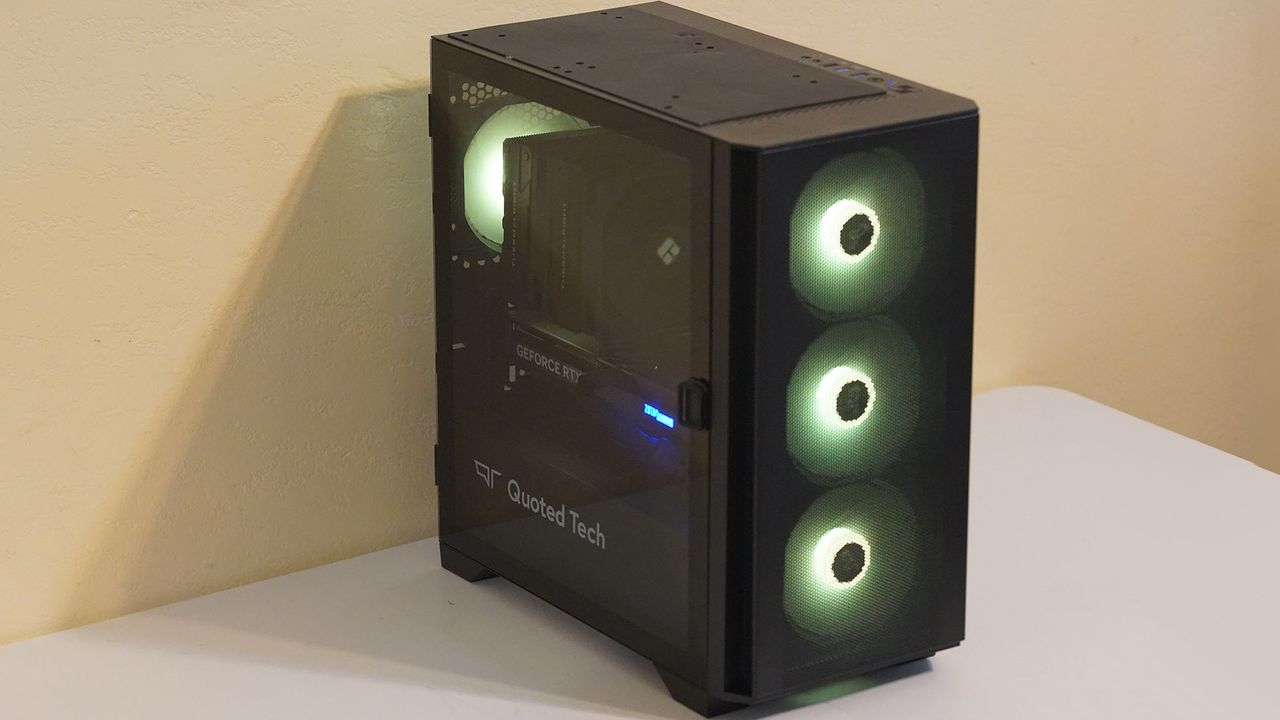



The post Stripe’s AI Backbone: Powering the Agent Economy with Financial Infrastructure appeared first on StartupHub.ai.
Stripe, under the leadership of Emily Glassberg Sands, Head of Data & AI, is not merely adapting to the artificial intelligence revolution; it is actively constructing the financial infrastructure upon which this burgeoning agent economy will operate. In a recent Latent Space podcast interview with hosts Shawn Wang and Alessio Fanelli, Sands articulated Stripe’s ambitious […]
The post Stripe’s AI Backbone: Powering the Agent Economy with Financial Infrastructure appeared first on StartupHub.ai.
The post Poolside reportedly raising up to $1B to advance AI code generation appeared first on StartupHub.ai.
AI code generation startup Poolside is reportedly raising up to $1 billion from investor Nvidia to build tools that accelerate software development.
The post Poolside reportedly raising up to $1B to advance AI code generation appeared first on StartupHub.ai.
The post AI’s Relentless March: Efficiency, Autonomy, and Economic Reshaping appeared first on StartupHub.ai.
The accelerating integration of artificial intelligence into daily life and industrial infrastructure is no longer a distant vision but a tangible reality, as evidenced by the rapid-fire developments discussed in Matthew Berman’s latest Forward Future AI news briefing. From the nascent stages of consumer robotics to revolutionary computing paradigms, the AI landscape is undergoing a […]
The post AI’s Relentless March: Efficiency, Autonomy, and Economic Reshaping appeared first on StartupHub.ai.
The post XPO’s AI-Driven Efficiency in a Soft Freight Market appeared first on StartupHub.ai.
In an era where artificial intelligence often conjures images of job displacement, XPO CEO Mario Harik offers a refreshingly pragmatic perspective: AI, for his logistics giant, is fundamentally about efficiency and optimization, not headcount reduction. This insight anchored a recent interview on CNBC’s Worldwide Exchange with anchor Frank Hollan, where Harik detailed XPO’s latest earnings […]
The post XPO’s AI-Driven Efficiency in a Soft Freight Market appeared first on StartupHub.ai.
Amazon’s third-quarter profits rose 38% to $21.2 billion, but a big part of the jump had nothing to do with its core businesses of selling goods or cloud services.
The company reported a $9.5 billion pre-tax gain from its investment in the AI startup Anthropic, which was included in Amazon’s non-operating income for the quarter.
The windfall wasn’t the result of a sale or cash transaction, but rather accounting rules. After Anthropic raised new funding in September at a $183 billion valuation, Amazon was required to revalue its equity stake to reflect the higher market price, a process known as a “mark-to-market” adjustment.
To put the $9.5 billion paper gain in perspective, the Amazon Web Services cloud business — historically Amazon’s primary profit engine — generated $11.4 billion in quarterly operating profits.
At the same time, Amazon is spending big on its AI infrastructure buildout for Anthropic and others. The company just opened an $11 billion AI data center complex, dubbed Project Rainier, where Anthropic’s Claude models run on hundreds of thousands of Amazon’s Trainium 2 chips.
Amazon is going head-to-head against Microsoft, which just re-upped its partnership with ChatGPT maker OpenAI; and Google, which reported record cloud revenue for its recent quarter, driven by AI. The AI infrastructure race is fueling a big surge in capital spending for all three cloud giants.
Amazon spent $35.1 billion on property and equipment in the third quarter, up 55% from a year earlier.
Andy Jassy, the Amazon CEO, sought to reassure Wall Street that the big outlay will be worth it.
“You’re going to see us continue to be very aggressive investing in capacity, because we see the demand,” Jassy said on the company’s conference call. “As fast as we’re adding capacity right now, we’re monetizing it. It’s still quite early, and represents an unusual opportunity for customers and AWS.”
The cash for new data centers doesn’t hit the bottom line immediately, but it comes into play as depreciation and amortization costs are recorded on the income statement over time.
And in that way, the spending is starting to impact on AWS results: sales rose 20% to $33 billion in the quarter, yet operating income increased only 9.6% to $11.4 billion. The gap indicates that Amazon’s heavy AI investments are compressing profit margins in the near term, even as the company bets on the infrastructure build-out to expand its business significantly over time.
Those investments are also weighing on cash generation: Amazon’s free cash flow dropped 69% over the past year to $14.8 billion, reflecting the massive outlays for data centers and infrastructure.
Amazon has invested and committed a total of $8 billion in Anthropic, initially structured as convertible notes. A portion of that investment converted to equity with Anthropic’s prior funding round in March.
 Corsair just announced its entrance into the leverless fightstick scene first popularized by Hit Box, the new Corsair Novablade Pro. Or to be more specific, the Corsair Novablade Pro Wireless Hall Effect Leverless Fight Controller—but we'll stick with Novablade Pro for now. The Novablade Pro is a direct competitor to the likes of Hit Box's
Corsair just announced its entrance into the leverless fightstick scene first popularized by Hit Box, the new Corsair Novablade Pro. Or to be more specific, the Corsair Novablade Pro Wireless Hall Effect Leverless Fight Controller—but we'll stick with Novablade Pro for now. The Novablade Pro is a direct competitor to the likes of Hit Box's 
Amazon CEO Andy Jassy says the company’s latest big round of layoffs — about 14,000 corporate jobs — wasn’t triggered by financial strain or artificial intelligence replacing workers, but rather a push to stay nimble.
Speaking with analysts on Amazon’s quarterly earnings call Thursday, Jassy said the decision stemmed from a belief that the company had grown too big and too layered.
“The announcement that we made a few days ago was not really financially driven, and it’s not even really AI-driven — not right now, at least,” he said. “Really, it’s culture.”
Jassy’s comments are his first public explanation of the layoffs, which reportedly could ultimately total as many as 30,000 people — and would be the largest workforce reduction in Amazon’s history.
The news this week prompted speculation that the cuts were tied to automation or AI-related restructuring. Earlier this year, Jassy wrote in a memo to employees that he expected Amazon’s total corporate workforce to shrink over time due to efficiency gains from AI.
But his comments Thursday framed the layoffs as a cultural reset aimed at keeping the company fast-moving amid what he called “the technology transformation happening right now.”
Jassy, who succeeded founder Jeff Bezos as CEO in mid-2021, has pushed to reduce management layers and eliminate bureaucracy inside the company. Amazon’s corporate headcount tripled between 2017 and 2022, according to The Information, before the company adopted a more cautious hiring approach.
Bloomberg News reported this week that Jassy has told colleagues parts of the company remain “unwieldy” despite efforts to streamline operations — including significant layoffs in 2023 when Amazon cut 27,000 corporate workers in multiple stages.
On Thursday’s call, Jassy said Amazon’s rapid growth led to extra layers of management that slowed decision-making.
“When that happens, sometimes without realizing it, you can weaken the ownership of the people that you have who are doing the actual work and who own most of the two-way door decisions — the ones that should be made quickly and right at the front line,” Jassy said, using a phrase popularized by Bezos to help determine how much thought and planning to put into big and small decisions.
The layoffs, he said, are meant to restore the kind of ownership and agility that defined Amazon’s early years.
“We are committed to operating like the world’s largest startup,” Jassy said, repeating a line he’s used recently.
Given the “transformation” he described happening across the business world, Jassy said it’s more important than ever to be lean, flat, and fast-moving. “That’s what we’re going to do,” he said.
Jassy’s comments came as Amazon reported quarterly revenue of $180.2 billion, up 13% year-over-year, with AWS revenue growth accelerating to 20% — its fastest pace since 2022.
Amazon said it took a $1.8 billion severance-related charge in the quarter related to the layoffs.
Amazon joins other tech giants including Microsoft that have trimmed headcount this year while investing heavily in AI infrastructure.
Related coverage:








Canva has launched a new unified Affinity application that combines the previously separate Designer, Photo, and Publisher tools into one platform. The app offers a complete suite of professional features for vector design, image editing, and desktop publishing, now available free of charge.


Apple has deftly managed its geopolitical risk exposure by negotiating a broad-based import tariff exemption from the Trump Administration. Even so, the Cupertino giant has not been able to fully neutralize the impact of the US import tariffs, courtesy of its labyrinthine and sprawling global supply chain. Apple faced $1.1 billion in tariff-related costs in its fiscal Q4 2025 Apple adopted a 2-pronged strategy to deal with US import tariffs and trade war: Moreover, Apple is also planning to: As such, Apple has already started shipping its US-made servers to its datacenters, where they will help power features such as […]
Read full article at https://wccftech.com/apple-1-1-billion-hit-in-q4-2025/

Apple's iPhone product segment missed consensus expectations of analysts for the just-concluded fiscal fourth quarter of 2025, largely due to transitory weakness in iPhone 17 sales. Now, however, Apple has not only given a reasonable explanation behind this miss, but also offered surprising guidance for the ongoing December-ending quarter. Apple to experience its best ever December-ending quarter As we noted in our dedicated post on the topic, Apple's iPhone revenue missed expectations for its fiscal Q4 2025, which were pegged at $50.19 billion vs. the $49.03 billion haul that the Cupertino giant reported for the three-month period. During the earnings call, […]
Read full article at https://wccftech.com/tim-cook-apple-will-have-its-best-ever-december-quarter-thanks-to-the-iphone-17-lineup/

Ever since Apple announced its AI strategy revamp under the Apple Intelligence banner, there has been a perception that the company is struggling to maintain a swift pace with its lofty ambitions. There are increasing signs, however, that Apple is making some much-needed headway in this sphere, as per the tidbits gleaned from Apple's Q3 2025 Earnings Call. Apple Intelligence: A winding road ahead Do note that Apple has been working to introduce a number of key Apple Intelligence features with its Spring 2026 iOS update (iOS 26.4 most likely). These include: Of course, Apple Mac users can already enjoy […]
Read full article at https://wccftech.com/tim-cook-the-new-siri-under-the-apple-intelligence-banner-to-debut-in-2026/

Apple has just announced the earnings for its fiscal Q4 2025, reporting $102.47 billion in total revenue, which includes $49.03 billion from iPhones and $28.75 billion from services, and $27.47 billion in net profit. Apple Fiscal Q4 2025 Earnings: iPhones and services show growth Here are the key highlights from Apple's latest quarterly earnings release: For the full fiscal year 2025, Apple earned $416.16 billion in revenue, corresponding to a year-over-year increase of 6.42 percent relative to $391.04 billion that it earned in its last fiscal year. During the just-concluded fiscal year 2025, Apple earned $307 billion from its products […]
Read full article at https://wccftech.com/apple-fiscal-q4-2025-earnings-revenue-from-iphones-and-ipads-disappoints/

Maintaining its tradition for every Apple Silicon Mac that has launched so far, Amazon has introduced a discount for the 14-inch M5 MacBook Pro, shaving off $50 from the base and 1TB storage model, meaning that the new lineup starts from $1,549 instead of $1,599, with the price cut applied to both the Space Black and Silver colors. While the discount will slowly creep up as the months go by, you might want to keep the 14-inch M4 MacBook Pro a viable option because it is oozing tremendous value right now. For those looking to save money, the 14-inch M4 […]
Read full article at https://wccftech.com/m5-macbook-pro-in-512gb-and-1tb-options-now-50-cheaper-on-amazon/


This story originally appeared on Real Estate News.
Zillow continues to be an overachiever, at least with its financial performance.
The home search giant’s revenue has consistently beat expectations for the past two years, and Q3 was no different: Revenue was $676 million for the third quarter, up 16% year-over-year and above the company’s previous guidance, driven by the strength of its rentals and mortgage divisions.
Rentals revenue was up 41% year-over-year to $174 million, while mortgage revenue increased 36% to $53 million, according to Zillow’s shareholder letter. The company’s main revenue stream, residential, rose 7% to $435 million.
Zillow also turned a profit, netting $10 million during the quarter and sustaining its run of profitability for a third consecutive quarter.
While Zillow’s financials were strong, it was also mired in litigation during the quarter, something CEO Jeremy Wacksman touched on during the earnings call.
On lawsuits: Wacksman briefly addressed some of the company’s litigation issues, particularly the lawsuit brought by the Federal Trade Commission over Zillow’s rental agreement with Redfin.
The FTC alleges that Zillow and Redfin illegally conspired to eliminate competition in the rental listings market with a syndication agreement. Attorney generals from five states filed a similar lawsuit a day later.
Wacksman noted that they’ve had the agreement in place for about six months and have seen the benefits for both consumers and property managers.
“So to us it’s obviously pro-consumer and pro-property manager, which makes it pro-competitive,” Wacksman said. “We look forward to making that case as the process plays out.”
On the Compass-Anywhere merger: Investors asked what impact the deal might have if it leads to more private listings — a core part of Compass’ three-phased marketing strategy — which are largely prohibited on Zillow’s site after it adopted new listing standards (prompting a lawsuit from Compass).
Wacksman said he doesn’t foresee any big impact to Zillow’s business.
“We do see maybe more noise around hidden listings and the potential to push more hidden listings onto sellers and to buyers and to harm consumers,” Wacksman said, adding that much of the industry is on board with Zillow’s private listing ban.
Consumers “don’t want to put the internet back in the box, and we expect that behavior to continue, because agents are trying to do right by their sellers and sell their homes,” Wacksman added.
Revenue: $676 million, up 16% year-over-year. Residential increased 7% to $435 million; mortgage revenue was up 36% to $53 million; and rentals revenue climbed 41% to $174 million.
Cash and investments: $1.4 billion at the end of September, up from $1.2 billion at the end of June.
Adjusted EBITDA (earnings before interest, taxes, depreciation and amortization): $165 million in Q3, up from $127 million a year earlier.
Net income/loss: A gain of $10 million in Q3, up from $2 million the previous quarter, an improvement over its $20 million loss a year ago.
Traffic and visits: Traffic across all Zillow Group websites and apps totaled 250 million average monthly unique users in Q3, up 7% year-over-year, the company said. Total visits were 2.5 billion in Q3, up 4% year-over-year.
Q4 outlook: For the fourth quarter, Zillow estimates revenue will be in the $645 million to $655 million range, which would represent high single-digit year-over-year growth.
Zillow was busy dealing with litigation during the third quarter:
The company also had positive news to share during the quarter, noting in September that more than 50 brokerages had adopted Zillow Showcase. Newly named partners include The Agency, LPT Realty and Century 21 Masters in California.
“At The Agency, we’re always looking for ways to give our agents every advantage in showcasing their listings,” said Mauricio Umansky, CEO and founder of The Agency, adding that the partnership “allows us to maximize exposure, put homes in the best light and reach more potential buyers.”
In July, Zillow unveiled a new suite of products including Skytour, which allows home shoppers to get an interactive birds-eye view of a home and its surroundings, and is available exclusively to Showcase clients.
The company also hired a new chief economist in the third quarter. Mischa Fisher, who most recently taught data science at Northwestern University, has experience analyzing housing, labor and consumer spending data. She replaces former chief economist Skylar Olsen.
Editor’s note: Story updated with details from the company’s earnings call.
The rise of AI marks a critical shift away from decades defined by information-chasing and a push for more and more compute power.
Canva co-founder and CPO Cameron Adams refers to this dawning time as the “imagination era.” Meaning: Individuals and enterprises must be able to turn creativity into action with AI.
Canva hopes to position itself at the center of this shift with a sweeping new suite of tools. The company’s new Creative Operating System (COS) integrates AI across every layer of content creation, creating a single, comprehensive creativity platform rather than a simple, template-based design tool.
“We’re entering a new era where we need to rethink how we achieve our goals,” said Adams. “We’re enabling people’s imagination and giving them the tools they need to take action.”
Adams describes Canva’s platform as a three-layer stack: The top Visual Suite layer containing designs, images and other content; a collaborative Canva AI plane at center; and a foundational proprietary model holding it all up.
At the heart of Canva’s strategy is its Creative Operating System (COS) underlying. This “engine,” as Adams describes it, integrates documents, websites, presentations, sheets, whiteboards, videos, social content, hundreds of millions of photos, illustrations, a rich sound library, and numerous templates, charts, and branded elements.
The COS is getting a 2.0 upgrade, but the crucial advance is the “middle, crucial layer” that fully integrates AI and makes it accessible throughout various workflows, Adams explained. This gives creative and technical teams a single dashboard for generating, editing and launching all types of content.
The underlying model is trained to understand the “complexity of design” so the platform can build out various elements — such as photos, videos, textures, or 3D graphics — in real time, matching branding style without the need for manual adjustments. It also supports live collaboration, meaning teams across departments can co-create.
With a unified dashboard, a user working on a specific design, for instance, can create a new piece of content (say, a presentation) within the same workflow, without having to switch to another window or platform. Also, if they generate an image and aren’t pleased with it, they don’t have to go back and create from scratch; they can immediately begin editing, changing colors or tone.
Another new capability in COS, “Ask Canva,” provides direct design advice. Users can tag @Canva to get copy suggestions and smart edits; or, they can highlight an image and direct the AI assistant to modify it or generate variants.
“It’s a really unique interaction,” said Adams, noting that this AI design partner is always present. “It’s a real collaboration between people and AI, and we think it’s a revolutionary change.”
Other new features include a 2.0 video editor and interactive form and email design with drag-and-drop tools. Further, Canva is now incorporated with Affinity, its unified app for pro designers incorporating vector, pixel and layer workflows, and Affinity is “free forever.”
Branding is critical for enterprise; Canva has introduced new tools to help organizations consistently showcase theirs across platforms. The new Canva Grow engine integrates business objectives into the creative process so teams can workshop, create, distribute and refine ads and other materials.
As Adams explained: “It automatically scans your website, figures out who your audience is, what assets you use to promote your products, the message it needs to send out, the formats you want to send it out in, makes a creative for you, and you can deploy it directly to the platform without having to leave Canva.”
Marketing teams can now design and launch ads across platforms like Meta, track insights as they happen and refine future content based on performance metrics. “Your brand system is now available inside the AI you’re working with,” Adams noted.
The impact of Canva’s COS is reflected in notable user metrics: More than 250 million people use Canva every month, just over 29 million of which are paid subscribers. Adams reports that 41 billion designs have been created on Canva since launch, which equates to 1 billion each month.
“If you break that down, it turns into the crazy number of 386 designs being created every single second,” said Adams. Whereas in the early days, it took roughly an hour for users to create a single design.
Canva customers include Walmart, Disney, Virgin Voyages, Pinterest, FedEx, Expedia and eXp Realty. DocuSign, for one, reported that it unlocked more than 500 hours of team capacity and saved $300,000-plus in design hours by fully integrating Canva into its content creation. Disney, meanwhile, uses translation capabilities for its internationalization work, Adams said.
Canva plays in an evolving landscape of professional design tools including Adobe Express and Figma; AI-powered challengers led by Microsoft Designer; and direct consumer alternatives like Visme and Piktochart.
Adobe Express (starting at $9.99 a month for premium features) is known for its ease of use and integration with the broader Adobe Creative Cloud ecosystem. It features professional-grade templates and access to Adobe’s extensive stock library, and has incorporated Google's Gemini 2.5 Flash image model and other gen AI features so that designers can create graphics via natural language prompts. Users with some design experience say they prefer its interface, controls and technical advantages over Canva (such as the ability to import high-fidelity PDFs).
Figma (starting at $3 a month for professional plans) is touted for its real-time collaboration, advanced prototyping capabilities and deep integration with dev workflows; however, some say it has a steeper learning curve and higher-precision design tools, making it preferable for professional designers, developers and product teams working on more complex projects.
Microsoft Designer (free version available; although a Microsoft 365 subscription starting at $9.99 a month unlocks additional features) benefits from its integration with Microsoft’s AI capabilities, Copilot layout and text generation and Dall-E powered image generation. The platform’s “Inspire Me” and “New Ideas” buttons provide design variations, and users can also import data from Excel, add 3D models from PowerPoint and access images from OneDrive.
However, users report that its stock photos and template and image libraries are limited compared to Canva's extensive collection, and its visuals can come across as outdated.
Canva’s advantage seems to be in its extensive template library (more than 600,000 ready-to-use) and asset library (141 million-plus stock photos, videos, graphics, and audio elements). Its platform is also praised for its ease of use and interface friendly to non-designers, allowing them to begin quickly without training.
Canva has also expanded into a variety of content types — documents, websites, presentations, whiteboards, videos, and more — making its platform a comprehensive visual suite than just a graphics tool.
Canva has four pricing tiers: Canva Free for one user; Canva Pro for $120 a year for one person; Canva Teams for $100 a year for each team member; and the custom-priced Canva Enterprise.
Canva’s COS is underpinned by Canva’s frontier model, an in-house, proprietary engine based on years of R&D and research partnerships, including the acquisition of visual AI company Leonardo. Adams notes that Canva works with top AI providers including OpenAI, Anthropic and Google.
For technology teams, Canva’s approach offers important lessons, including a commitment to openness. “There are so many models floating around,” Adams noted; it’s important for enterprises to recognize when they should work with top models and when they should develop their own proprietary ones, he advised.
For instance, OpenAI and Anthropic recently announced integrations with Canva as a visual layer because, as Adams explained, they realized they didn’t have the capability to create the same kinds of editable designs that Canva can. This creates a mutually-beneficial ecosystem.
Ultimately, Adams noted: “We have this underlying philosophy that the future is people and technology working together. It's not an either or. We want people to be at the center, to be the ones with the creative spark, and to use AI as a collaborator.”

 Mixboard is an experimental, AI-powered concepting board designed to help you explore, expand and refine your ideas. You can bring your own images, or use AI to generate…
Mixboard is an experimental, AI-powered concepting board designed to help you explore, expand and refine your ideas. You can bring your own images, or use AI to generate… Reddit continues to drive more interest, as people come for human insights.
Another step towards creator monetization in the app,

Trump officials had hoped to secure a TikTok sell-off agreement from this meeting.
The option will add another padlock to your personal WhatsApp chest of secrets.
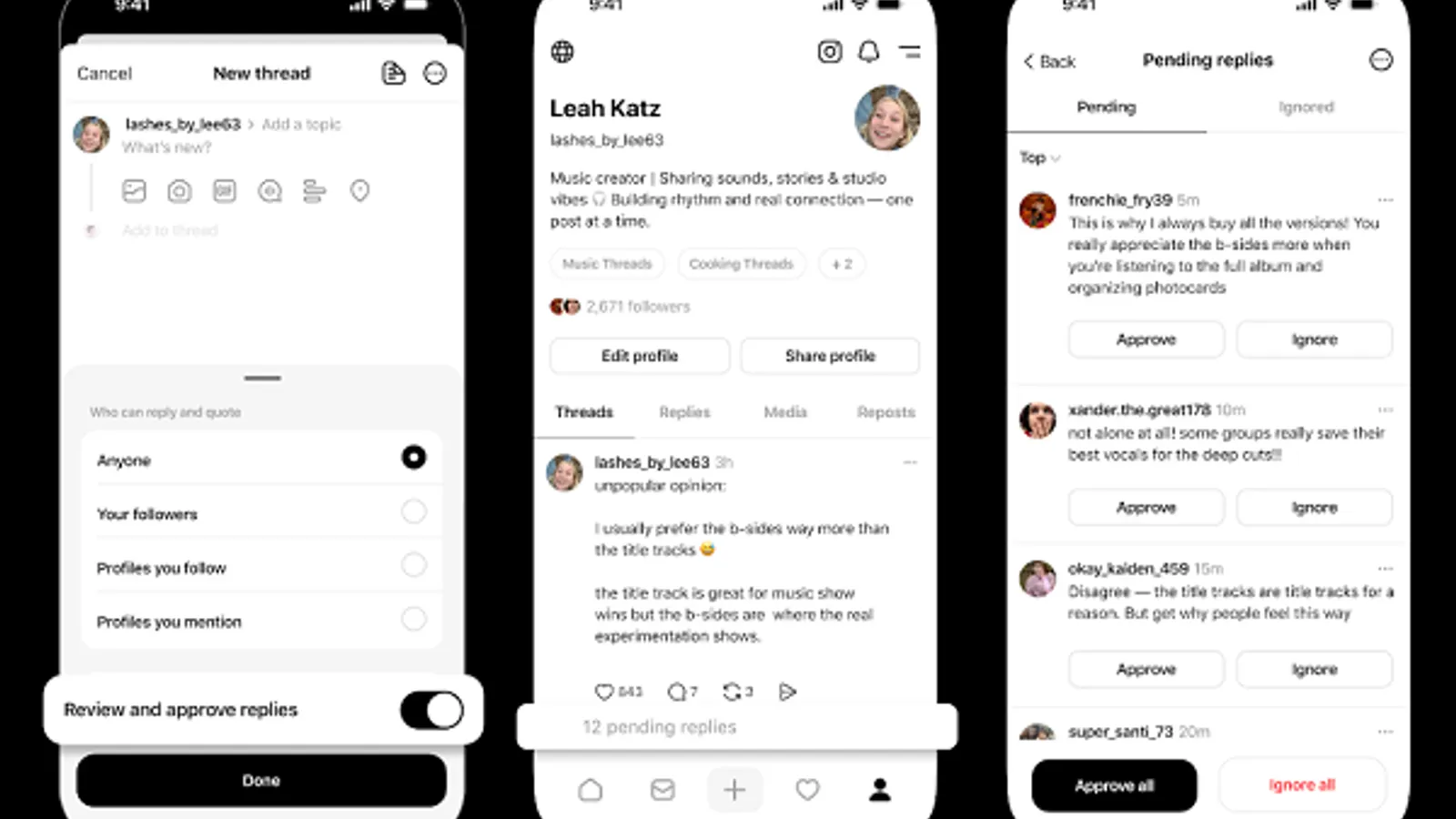
More ways to manage your Threads engagement, though it could also help to hide critics.

The tool is built to help you expand upon your visual examples with spoken queries.
Meta's giving advertisers more tools to help generate and qualify leads.

Amazon beat estimates for its third-quarter earnings with $180.2 billion in revenue, up 13% year-over-year, and earnings per share of $1.95, up from $1.43 in the year-ago period.
Amazon shares were up more than 11% in after-hours trading. Growth in the company’s stock has lagged behind rivals Microsoft and Google this year.
Investors were likely pleased with a re-acceleration in Amazon’s closely watched cloud computing unit, which reported $33 billion in sales, up 20% year-over-year and topping analyst estimates. In a press release, Amazon CEO Andy Jassy said AWS is “growing at a pace we haven’t seen since 2022.”
“We continue to see strong demand in AI and core infrastructure, and we’ve been focused on accelerating capacity — adding more than 3.8 gigawatts in the past 12 months,” Jassy added.
The cloud growth should help Amazon counter the Wall Street narrative that its cloud business is falling behind Microsoft and Google in pursuing the AI opportunity.
Amazon’s overall operating income reached $17.4 billion in the third quarter — flat compared to a year ago. The company had forecast operating income of $15.5 billion to $20.5 billion.
The company said its Q3 operating income reflected two special charges:
The workforce reduction comes amid an efficiency push at Amazon. Jassy has cited a need to reduce bureaucracy and become more efficient in the new era of artificial intelligence.

Online store sales were $67.4 billion, up 10%.
Here are more details from the second quarter earnings report:
Advertising: The company’s ad business brought in $17.7 billion in revenue in the quarter, up 24% from the year-ago period, topping estimates. Advertising, along with AWS, is a major profit engine.
Third-party seller services: Revenue from third-party seller services was up 12% to $42.5 billion.
Shipping costs: Amazon spent $25.4 billion on shipping in Q3, up 8%.
Physical stores: The category, which includes Whole Foods and other Amazon grocery stores, posted revenue of $5.6 billion, up 7%.
Headcount: Amazon employs 1.57 million people, up 2% year-over-year. That figure does not include seasonal and contract workers.
Prime: Subscription services revenue, which includes Prime memberships, came in at $12.6 billion, up 11%.
Guidance: The company forecasts Q4 sales between $206 billion and $213 billion. Operating income is expected to range between $21 billion and $26 billion, compared with $21.2 billion in the year-ago quarter.
$AMZN Amazon Q3 FY25:
— App Economy Insights (@EconomyApp) October 30, 2025
• Revenue +13% Y/Y to $180.2B ($2.4B beat).
• Operating margin 10% (+0.5pp Y/Y).
• EPS $1.95 ($0.39 beat).
• Q4 Guidance: ~$209.5B ($1.4B beat).
☁️ AWS:
• Revenue +20% Y/Y to $33.0B.
• Operating margin 35% (-3pp Y/Y). pic.twitter.com/2kaNIvC7oy












Anthropic's research explores how large language models perceive and structure text instead of simply producing it word by word.
The post Anthropic Research Shows How LLMs Perceive Text appeared first on Search Engine Journal.

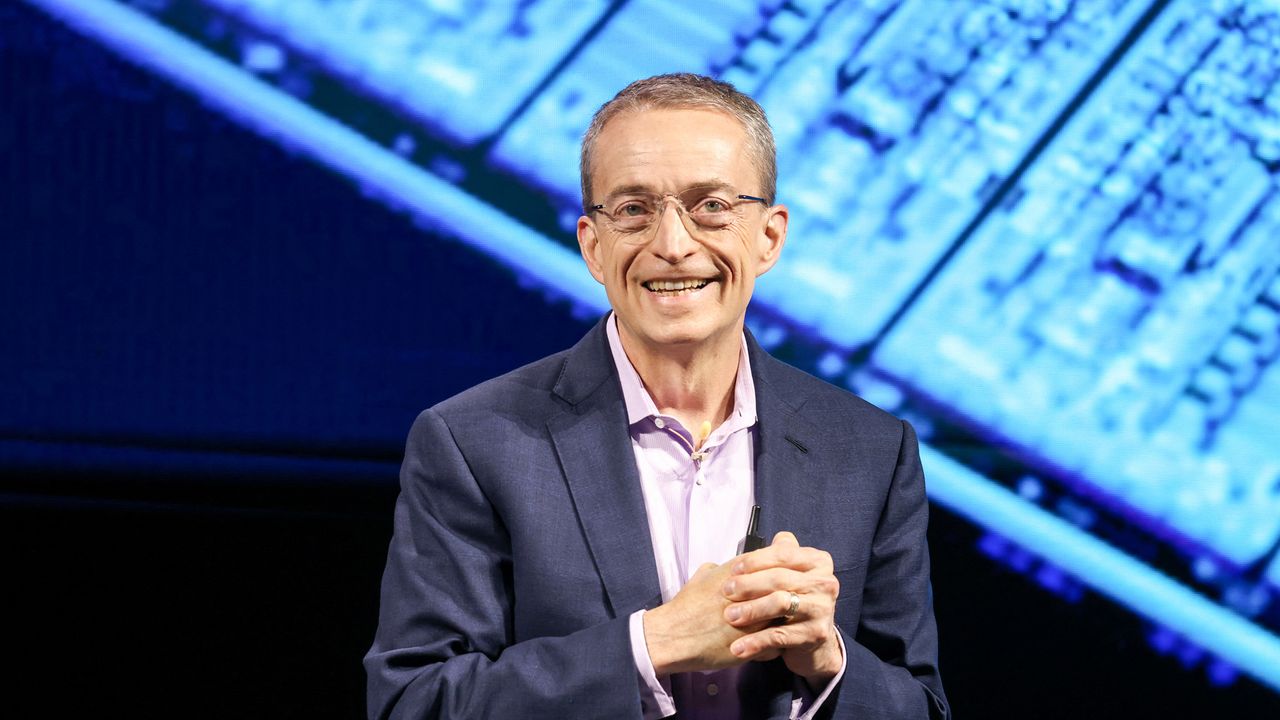

The post Sora Unleashes New Era of AI Character Animation appeared first on StartupHub.ai.
The barrier between imagination and animated reality has just dissolved, fundamentally altering the landscape for content creators and AI developers alike. OpenAI’s latest announcement, “Sora Character Cameos,” showcased in a refreshingly unconventional promotional video, signals a profound shift in how digital characters can be conceived, generated, and deployed. This is not merely an incremental update; […]
The post Sora Unleashes New Era of AI Character Animation appeared first on StartupHub.ai.
The post Alphabet’s AI Advantage: A Bullish Outlook on Google’s Enduring Dominance appeared first on StartupHub.ai.
Alphabet is not merely participating in the artificial intelligence revolution; it is poised to be its definitive winner, a sentiment articulated by Michael Nathanson, founding partner and senior research analyst at MoffettNathanson, during a recent discussion on CNBC’s ‘Power Lunch.’ His perspective challenges the prevailing narrative that AI could destabilize Google’s foundational search business, instead […]
The post Alphabet’s AI Advantage: A Bullish Outlook on Google’s Enduring Dominance appeared first on StartupHub.ai.
The post OpenAI Aardvark is a GPT-5 agent that hunts security bugs appeared first on StartupHub.ai.
OpenAI's Aardvark is an autonomous AI agent that uses GPT-5 to hunt for software vulnerabilities like a human security researcher.
The post OpenAI Aardvark is a GPT-5 agent that hunts security bugs appeared first on StartupHub.ai.
The post Google’s Model Armor: The AI Bodyguard Preventing Digital Catastrophes appeared first on StartupHub.ai.
The proliferation of AI applications, while transformative, introduces an intricate web of new security vulnerabilities that demand a specialized defense. In a recent “Serverless Expeditions” episode, Google Cloud Developer Advocate Martin Omander spoke with Security Advocate Aron Eidelman about Model Armor, Google’s latest offering designed to shield AI applications from a range of emerging threats. […]
The post Google’s Model Armor: The AI Bodyguard Preventing Digital Catastrophes appeared first on StartupHub.ai.
The post Archy funding hits $20M to kill the dental server closet appeared first on StartupHub.ai.
Archy's AI platform aims to save dental practices 80 hours a month by automating the tedious admin work that leads to staff burnout.
The post Archy funding hits $20M to kill the dental server closet appeared first on StartupHub.ai.
The post Alphabet’s AI Investments Drive Record Revenue, Defying Cannibalization Fears appeared first on StartupHub.ai.
Alphabet’s recent earnings call revealed a pivotal moment for the tech giant: the tangible monetization of its extensive AI infrastructure bets, validating a long-term strategy that is now driving unprecedented growth across its core businesses. This robust performance underscores a critical shift in the AI landscape, where strategic investments are now yielding significant, measurable returns, […]
The post Alphabet’s AI Investments Drive Record Revenue, Defying Cannibalization Fears appeared first on StartupHub.ai.
The post Anthropic’s Latest: Claude Code on the Web and Haiku 4.5 Reshape Developer Workflows appeared first on StartupHub.ai.
The future of software development is not merely assisted by AI, but actively orchestrated by it, a vision Anthropic brings closer with its latest advancements: Claude Code on the Web and the powerful, cost-efficient Haiku 4.5 model. These releases, detailed by a company representative in a recent video, signal a profound shift towards more intuitive, […]
The post Anthropic’s Latest: Claude Code on the Web and Haiku 4.5 Reshape Developer Workflows appeared first on StartupHub.ai.
The post Cameo CEO: OpenAI’s Trademark Infringement Threatens Brand Authenticity appeared first on StartupHub.ai.
The burgeoning landscape of artificial intelligence, while promising innovation, is simultaneously exposing the critical fault lines in intellectual property law, particularly concerning brand identity. This tension was starkly illuminated when Steven Galanis, CEO of the personalized celebrity video platform Cameo, appeared on CNBC’s “Money Movers” to discuss his company’s trademark lawsuit against OpenAI. Galanis articulated […]
The post Cameo CEO: OpenAI’s Trademark Infringement Threatens Brand Authenticity appeared first on StartupHub.ai.
The post Esri AWS AI deal targets generative AI for maps appeared first on StartupHub.ai.
The Esri AWS AI collaboration aims to transform static maps into dynamic, predictive tools using generative AI foundation models.
The post Esri AWS AI deal targets generative AI for maps appeared first on StartupHub.ai.
 AMD is on a mission: replace its proprietary AGESA firmware for its Ryzen and EPYC processors with openSIL, which stands for Open-Source Silicon Initialization Library. The move to openSIL will improve security and scalability while improving customization and control for AMD's customers, including end users. However, that's not what we're
AMD is on a mission: replace its proprietary AGESA firmware for its Ryzen and EPYC processors with openSIL, which stands for Open-Source Silicon Initialization Library. The move to openSIL will improve security and scalability while improving customization and control for AMD's customers, including end users. However, that's not what we're  Discussion surrounding the use of AI in game development is once again at the forefront, after EA recently announced its partnership with Stability AI. Those who work in the industry at a variety of levels have chimed in on the matter, and that now includes Strauss Zelnick, CEO of Take-Two Interactive, one of the biggest game publishers in
Discussion surrounding the use of AI in game development is once again at the forefront, after EA recently announced its partnership with Stability AI. Those who work in the industry at a variety of levels have chimed in on the matter, and that now includes Strauss Zelnick, CEO of Take-Two Interactive, one of the biggest game publishers in  Nintendo's ongoing patent lawsuit case against Palworld developers Pocketpair has hit a surprising speedbump, though the battle is far from over. For those unaware, Nintendo is suing Pocketpair for patent infringement in Japanese court, and two of the three patents it is claiming have been violated relate to game mechanics that revolve around
Nintendo's ongoing patent lawsuit case against Palworld developers Pocketpair has hit a surprising speedbump, though the battle is far from over. For those unaware, Nintendo is suing Pocketpair for patent infringement in Japanese court, and two of the three patents it is claiming have been violated relate to game mechanics that revolve around RDNA 1 and RDNA 2 graphics cards will continue to receive driver updates for critical security and bug fixes. To focus on optimizing and delivering new and improved technologies for the latest GPUs, AMD Software Adrenalin Edition 25.10.2 is placing Radeon RX 5000 and RX 6000 series graphics cards (RDNA 1 and RDNA 2) into maintenance mode. Future driver updates with targeted game optimizations will focus on RDNA 3 and RDNA 4 GPUs.

Leaders in the Pacific Northwest are largely bullish on the region’s continued economic success — but one threat to the region’s fiscal progress worries them in particular.
“What always strikes me, whether I’m in City Hall in Vancouver or Seattle or Portland, is that everybody talks about the same thing — the high cost of housing,” said Microsoft President Brad Smith at this week’s Cascadia Innovation Corridor conference in Seattle.
“It’s become an enormous barrier, not just for attracting new talent, but for enabling teachers and police officers and nurses and firefighters to live in the communities in which they serve,” he added.
Dr. Tom Lynch, president and director of Seattle’s Fred Hutch Cancer Center, was more succinct.
“My people can’t find places to live,” Lynch said during a Tuesday panel at the same event.
Those concerns are bolstered by research in a new report on the economic viability of the corridor running from Vancouver, B.C., through Seattle to Portland.
Housing costs were cited as one of the top threats to the region’s success, noting that Vancouver’s housing-cost-to-income-ratio disparity is among the worst in the world, while in Seattle median home prices relative to wages have doubled in the past 15 years. Portland reports a net out-migration as workers move to more affordable areas.
Other concerns include rising business costs and regulations, declining numbers of skilled workers and new restrictions on foreign talent immigrating to the U.S., and clean energy shortages.

“We’ve got to find ways to be able to increase the density of our housing, come up with creative solutions for allowing more families to be able to live close to where the jobs are,” Lynch said.
Smith agreed, adding, “The only way to dig ourselves out of this is to harness the power of the market through public-private partnerships, to recognize that zoning and permitting needs to be put to work to accelerate investment.”
Area tech giants have been pursuing those partnerships to tackle the challenge.
In 2019, Microsoft pledged $750 million to boost the affordable housing inventory and has helped build or retain 12,000 units in the region. Amazon in recent years has committed $3.4 billion for housing across three hubs nationally where it has large operations. The company in September celebrated a milestone of building or preserving 10,000 units in the Seattle area.
Despite the efforts, Smith said the shortage keeps worsening and in 2025, new construction starts are expected to be the lowest since before the Great Recession.
The city of Seattle, for one, is looking to sweeten a property-tax exemption deal for developers that could encourage construction and it’s also applying AI to permitting process in an effort to speed up projects.
Smith also promoted the long-held vision of a high-speed rail line in the Pacific Northwest that would make commutes much faster between growing urban hubs. But a panel Wednesday cautioned that dream is still many years out.

Shares of Navan closed at $20, down 20%, in first-day trading on Thursday, indicating lackluster investor demand for the long-awaited debut.
Navan, which operates an expense management platform with an emphasis on travel, had priced shares for its offering at $25 each late Wednesday. It was formerly called TripActions, with the company pivoting to a broader platform when revenue reached zero right after the COVID pandemic hit.
The offering raised $923.1 million for the company, whose shares are trading on the Nasdaq under the ticker NAVN. It set an initial valuation of around $6.2 billion.
The move to the public markets has been a long time coming for Palo Alto, California-based Navan, which reportedly first submitted confidential paperwork for a planned offering more than three years ago.
The company had raised $1.2 billion in debt financing and $1 billion in equity funding from venture investors and credit providers, per Crunchbase data. Major venture stakeholders include Andreessen Horowitz, Lightspeed Venture Partners and Zeev Ventures.
Navan had revenue of $329 million in the first half of 2025, up 30% year over year. Growth comes as the company has been investing in developing its agentic AI offering, Navan Cognition, to automate more cumbersome tasks around travel planning and reporting.
Still, the company remains far from profitable. Navan’s net loss for the first half of this year came in just shy of $100 million — up about 7% from the year-earlier period. The loss comes amid higher spending on both R&D and sales and marketing — common for companies on the IPO track — looking to appeal to growth-hungry investors.
Per its IPO filing, Navan has incurred net losses in each year since its inception in 2015 and “may not achieve or, if achieved, sustain profitability in the future.”
IPO activity has picked up in 2025, with Navan one of several larger recent debuts, including well-received entries by consumer fintech Klarna and blockchain lender Figure. We’re also seeing heightened buzz around potential new market entrants.
Illustration: Dom Guzman


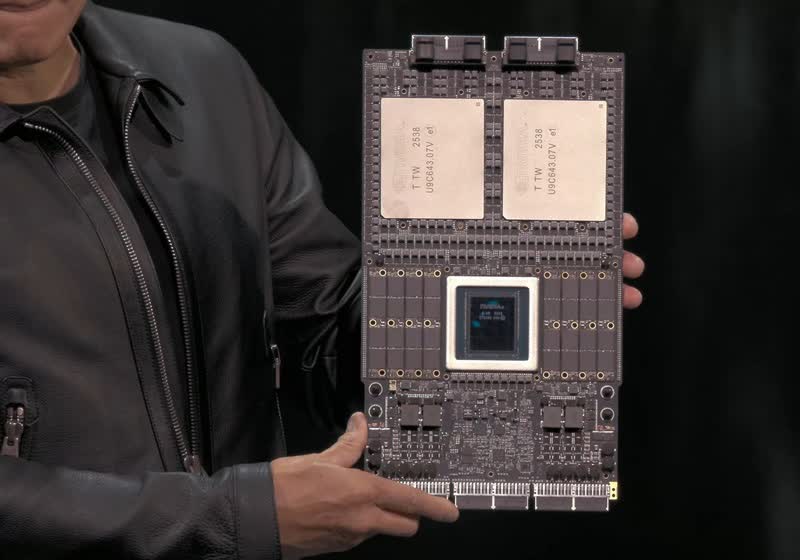



Update 30/10/2025: It's official, ARC Raiders' launch on Steam is bigger than The Finals, as it reaches 243,386 concurrent players on Steam. Original Story: Embark Studios' third-person extraction shooter, ARC Raiders, is now live and available on PC, PS5, and Xbox Series X/S and, at least on Steam, we know that the game is having a massive launch. It's even on track to surpass what The Finals accomplished in 2024, as ARC Raiders has over 200K concurrent players on Steam at the time of this writing. Per SteamDB, an hour after it went live, it had reached 140K concurrent players […]
Read full article at https://wccftech.com/arc-raiders-surpasses-200k-concurrent-players-on-steam-at-launch/

UK-based studio Maze Theory (which previously made several Doctor Who VR games and Peaky Blinders: The King's Ransom) and publisher Vertigo Games have just announced the release date of Thief: Legacy of Shadow, a new stealth action game coming out on December 4. Unfortunately, the game will only be available for virtual reality devices, which still comprise a minuscule portion of the overall gaming industry. That said, if you are a VR aficionado, chances are you already have a PlayStation VR2, Quest 2 or 3, or a Steam VR-compatible headset. Legacy of Shadow will bring players back to The City […]
Read full article at https://wccftech.com/theres-a-new-thief-game-coming-out-this-year-though-only-for-vr-devices/

The first and second-gen RDNA lineups are being ditched so quickly, and as per the company's latest statement, these will only receive critical updates. AMD Confirms End of Game Optimization and Feature Updates for Radeon RX 5000 and RX 6000 Series AMD's first RDNA GPU series, aka Radeon RX 5000, is hardly 6 years old, and if you think it is too early to see a drop in official optimization and feature updates, then we have the same news for RX 6000 GPU owners. If you checked the latest release notes for AMD's latest Adrenalin Edition 25.10.2, which officially adds […]
Read full article at https://wccftech.com/amd-rdna-1-2-gpu-driver-support-moved-to-maintenance-mode-game-optimizations-new-tech-for-rdna-3-4-beyond/
